Elevate Your Space with Statuary White Italian Statuary Marble Tile

Thinking about using statuary white Italian statuary marble tile for your next home project? It's a really popular choice, and for good reason. This marble looks amazing, with that classic white background and those cool grey lines running through it. It feels super fancy, like something you'd see in a fancy hotel or an old Italian villa. People love it because it's natural, and each piece is a little bit different, which is kind of neat. Plus, it's supposed to last a really long time, which is always a plus when you're spending money on your home.
Key Takeaways
- Statuary white Italian statuary marble tile offers a timeless, luxurious look with its pure white base and dramatic grey veining.
- The Italian origin signifies high quality and a rich history in stone craftsmanship.
- Each tile is unique due to natural variations in veining patterns, adding character to your space.
- This marble is versatile, fitting well in both modern and classic interior design styles.
- Available in finishes like polished and honed, it can suit different aesthetic preferences and functional needs.
- Common sizes such as 6x24 and 18x18 are available, offering flexibility in installation patterns.
- While beautiful, marble requires specific care and maintenance to preserve its appearance over time.
- Investing in statuary white Italian statuary marble tile can significantly increase a property's appeal and value.
Understanding Statuary White Italian Statuary Marble Tile
The Essence of Italian Marble
Italian marble has a reputation that's hard to beat. For centuries, artisans have traveled to Italy to source stone for their most important works. This marble is known for its quality and unique beauty, often featuring subtle variations that make each piece special. It's not just a building material; it's a piece of history and art.
Defining Statuary White Marble
When we talk about Statuary White marble, we're referring to a specific type of Italian marble. It's characterized by its very pure, bright white background. This clean canvas is then dramatically contrasted by striking veins of grey, and sometimes black. Think of it as nature's own masterpiece, ready to be incorporated into your home.
The Significance of Italian Origin
Where the marble comes from matters. Italian marble, particularly from regions like Carrara, is prized for its distinct mineral composition and the way it's quarried. This origin story adds to the marble's prestige and guarantees a certain level of quality and aesthetic appeal that's recognized worldwide. It’s a mark of authenticity and tradition.
Key Characteristics of Statuary Tile
What makes Statuary tile stand out? Well, beyond its Italian roots, it's all about that crisp white base and the bold, often dramatic, grey veining. These veins aren't just random lines; they give each tile its own personality. You'll find that no two tiles are exactly alike, which is part of the charm of natural stone.
Visual Appeal and Aesthetic Qualities
The look of Statuary White marble is undeniably luxurious. That bright white background makes spaces feel larger and more open, while the grey veins add depth and visual interest. It has a way of making any room feel more sophisticated and elegant, whether it's a kitchen, bathroom, or living area.
The Role of Veining in Marble Design
Veining is where the real magic happens with marble. In Statuary White, the veins can range from fine, delicate lines to broader, more sweeping patterns. These variations are what make each slab and tile unique. The way the veins flow across the surface can guide the eye and contribute to the overall design of a space, creating a sense of movement and natural artistry.
Distinguishing Statuary from Other Marbles
How do you tell Statuary apart from other white marbles? While many white marbles exist, Statuary is known for its exceptionally pure white background and its more pronounced, often darker, grey veining compared to some other types. It has a bolder contrast that many designers seek out for a statement piece.
Historical Context of Statuary Marble
Statuary marble isn't new to the scene. Historically, it was the preferred material for many famous sculptors. Its purity and workability made it ideal for creating intricate statues and architectural elements. When you choose Statuary marble for your home, you're tapping into a legacy of artistry and timeless design that stretches back centuries.
Exploring the Aesthetic Appeal of Statuary White Marble
Pristine White Backgrounds
Statuary White Italian marble is famous for its incredibly clean, bright white base. It’s like a blank canvas, really. This pure white is what makes it so popular for creating a sense of spaciousness and light in a room. It doesn't have those yellowish or grayish undertones you sometimes see in other marbles. This makes it a fantastic choice if you want a really crisp, fresh look. It just feels so clean and open.
Dramatic Grey Veining Patterns
What really sets Statuary White apart is its veining. We're talking about these bold, dramatic streaks of grey that just pop against the white. They aren't subtle; they're meant to be noticed. Each tile is different, of course, because it's natural stone. You might get thick, sweeping lines or more intricate, web-like patterns. This variation is part of the charm, honestly. It gives each installation its own unique personality. It’s this contrast that gives the marble its luxurious feel.
Unique Vein Variations Per Tile
Because it's natural stone, no two pieces of Statuary White marble are exactly alike. You'll find that the veining can change quite a bit from one tile to the next. Some might have very prominent, dark grey veins, while others might have lighter, more subtle grey lines. This uniqueness is a big part of its appeal. It means your floor or wall will have a one-of-a-kind look that you just can't replicate with manufactured materials. It’s like owning a piece of natural art.
The Impact of Veining on Design
Those veins aren't just pretty; they really influence the overall design of a space. A tile with strong, linear veins can make a room feel longer or wider, depending on how you lay them. If you have a lot of busy veining, it can add a lot of visual interest and texture. On the other hand, tiles with sparser veining can create a more calming, minimalist effect. It’s amazing how these natural markings can totally change the feel of a room. You can really use them to your advantage when planning your layout.
Achieving a Luxurious Look
There's just something about Statuary White marble that screams luxury. Maybe it's the bright white color, or perhaps it's those striking grey veins. Whatever it is, it instantly makes a space feel more high-end. It’s the kind of material that designers love to use when they want to create a really sophisticated and upscale atmosphere. It’s a classic choice for a reason; it just looks expensive and elegant.
Creating a Timeless Elegance
This marble has a timeless quality to it. It doesn't really go out of style. While trends come and go, a beautiful marble installation always looks good. It has a classic elegance that transcends fads. Whether your home is modern or traditional, Statuary White marble can fit right in and add a touch of sophistication that will last for years. It’s a smart investment for that reason.
Enhancing Natural Light Reflection
The polished surface of Statuary White marble is excellent at reflecting light. This can make a room feel brighter and more open, especially if it doesn't get a lot of natural sunlight. The way the light bounces off the polished surface really livens up the space. It’s a great way to make smaller rooms feel bigger and more airy. Even a honed finish will still reflect light, just in a softer way.
The Artistry of Natural Stone
Ultimately, working with Statuary White marble is like working with a piece of natural art. Each slab and tile has its own unique story told through its veining and color variations. It’s a reminder of the beauty and artistry that nature provides. When you install it, you’re not just putting down tile; you’re bringing a piece of the earth’s natural beauty into your home. It’s a connection to something real and enduring. You can find some great examples of this marble used in bathrooms to really showcase its artistic potential.
Versatile Applications for Statuary White Italian Marble
Kitchen Countertop Applications
Statuary White Italian Marble brings a touch of classic luxury to kitchen spaces. Its cool, smooth surface is not only visually stunning but also practical for food preparation. The dramatic veining can create a unique focal point, turning your kitchen island or countertops into a work of art. It's important to seal marble countertops regularly to protect them from stains and etching, especially in a busy kitchen environment. Consider pairing it with simple cabinetry to let the marble's natural beauty shine.
Bathroom Flooring Solutions
In bathrooms, Statuary White marble tiles offer a sophisticated and spa-like feel. The natural stone's inherent coolness underfoot is a welcome sensation, particularly in warmer climates. Its resistance to moisture makes it a suitable choice for flooring, though proper sealing is key to preventing water damage and staining. The bright white background can make smaller bathrooms feel more spacious and airy.
Shower Wall and Floor Designs
Transforming a shower into a luxurious retreat is easily achieved with Statuary White marble. Using the same tile for both walls and floors can create a cohesive, enveloping effect. The natural variations in veining mean each shower will have its own unique pattern. For shower floors, a honed finish might offer better slip resistance than a polished one. Remember to use grout specifically designed for wet areas and ensure proper waterproofing.
Living Area Feature Walls
Beyond kitchens and bathrooms, Statuary White marble can make a dramatic statement as a feature wall in living areas or entryways. Imagine a fireplace surround clad in this exquisite stone, or an accent wall behind a television. This application adds depth, texture, and a significant touch of opulence to the room. It’s a way to bring the grandeur of natural stone into your main living spaces.
Entryway and Hallway Elegance
The entryway is the first impression guests have of your home, and Statuary White marble tiles can set a tone of refined elegance right from the start. Using it for entryway flooring or as a decorative wall panel creates an immediate sense of luxury. Its durability makes it suitable for high-traffic areas, provided it's properly sealed and maintained. This marble truly welcomes visitors with its timeless appeal.
Backsplash Design Possibilities
A marble backsplash is a classic choice that adds both beauty and practicality to a kitchen. Statuary White marble, with its striking veining, can turn a simple backsplash into a captivating design element. Whether you opt for a simple subway tile pattern or a more intricate mosaic, the marble's natural patterns will add character. It’s a fantastic way to incorporate premium tile options without overwhelming the space.
Accent Wall Treatments
Accent walls are a great way to introduce a focal point into any room, and Statuary White marble is an exceptional material for this purpose. It can be used behind a bed in a master suite, as a dramatic backdrop in a dining room, or even in a home office to add a touch of sophistication. The natural patterns and colors of the marble ensure that the accent wall will be a unique and memorable feature.
Commercial Space Sophistication
The appeal of Statuary White marble extends beyond residential settings. In commercial spaces, such as boutique hotels, high-end retail stores, or upscale restaurants, it conveys a sense of luxury and quality. Using it for flooring, wall cladding, or reception desks can significantly elevate the ambiance and impress clients and visitors. Its timeless beauty ensures that commercial spaces maintain their sophisticated look for years to come.
Design Flexibility with Statuary White Marble Tile
Statuary White Italian Marble Tile isn't just about looks; it's incredibly adaptable. You can use it in so many different ways to fit your personal style. Whether you're going for something super modern or more traditional, this marble can handle it.
Modern Minimalist Aesthetics
For a clean, uncluttered look, Statuary White Marble is perfect. Its simple white background and subtle veining create a calm, serene atmosphere. Think sleek lines and open spaces. It really lets the natural beauty of the stone speak for itself without being too loud. This tile works well in smaller spaces too, making them feel bigger and brighter.
Classic Traditional Interiors
If you love a more classic feel, this marble fits right in. It brings a sense of history and timeless elegance to a room. Imagine it in a formal dining room or a grand entryway. The natural patterns in the marble add a touch of luxury that never goes out of style. It pairs nicely with ornate furniture and rich wood tones.
Contemporary Opulence
Want to add a bit of glamour? Statuary White Marble can do that too. Its natural sheen, especially in a polished finish, reflects light beautifully, making a space feel more luxurious. It’s great for accent walls or as a statement piece in a bathroom. You can really make a room feel high-end with this stone.
Transitional Design Harmony
Transitional design is all about blending old and new, and Statuary White Marble is a master at this. It bridges the gap between traditional and modern elements. You can mix it with contemporary furniture and still keep that classic marble feel. It’s a safe bet if you’re not sure which style to lean into. It helps create a balanced and inviting space.
Complementing Various Color Palettes
One of the best things about white marble is how well it goes with other colors. Statuary White Marble is no exception. It looks fantastic with:
- Cool Tones: Blues, grays, and silvers create a sophisticated, calm look.
- Warm Tones: Beiges, creams, and soft yellows add a cozy, inviting feel.
- Bold Accents: Black, deep greens, or even vibrant jewel tones can really pop against the white marble, creating a dramatic contrast.
Pairing with Metallic Finishes
This marble tile really shines when paired with metallic accents. Think about:
- Chrome or Stainless Steel: For a sleek, modern, and cool aesthetic.
- Brushed Nickel: Offers a softer, more contemporary feel.
- Gold or Brass: Adds a touch of warmth, luxury, and vintage charm. This combination is particularly striking and can make a space feel very opulent.
Integrating with Wood Tones
Combining marble with wood is a classic design move that always works. Statuary White Marble pairs beautifully with different wood finishes:
- Light Woods: Like oak or maple, they create a bright, airy, and natural feel.
- Medium Woods: Such as walnut or cherry, they add warmth and depth.
- Dark Woods: Like espresso or ebony, they provide a strong, sophisticated contrast.
The interplay between the cool, natural stone and the organic warmth of wood creates a balanced and inviting environment. It’s a combination that feels both grounded and luxurious, suitable for a wide range of interior styles. This pairing is a testament to the marble's adaptability in design.
Creating Focal Points in Design
Statuary White Marble is excellent for drawing attention to specific areas. Whether it's a stunning fireplace surround, a dramatic shower enclosure, or a unique kitchen backsplash, the marble's natural beauty makes it a natural focal point. Its distinctive veining ensures that each installation is one-of-a-kind, adding a personalized artistic touch to your home. You can truly make a statement with this material, turning ordinary spaces into extraordinary ones. Consider using larger format tiles for a more dramatic effect, or explore intricate patterns for added visual interest. For those seeking durable and stylish alternatives, exploring marble-look white porcelain tiles can also offer a similar aesthetic with added practical benefits.
Finishes Available for Statuary White Marble
When you're looking at Statuary White Italian marble tile, the finish is a big deal. It's not just about how it looks, but also how it feels and how it holds up over time. You've got two main choices, and each one brings something a little different to the table.
The Brilliance of Polished Finish
A polished finish is what most people picture when they think of marble. It's that super smooth, almost mirror-like surface that really makes the white pop and the grey veins stand out. It reflects light like crazy, which can make a room feel bigger and brighter. It's a really classic, high-end look that works well in places where you want a bit of glamour, like a fancy bathroom or a living room feature wall. This finish gives the marble a glossy, reflective quality.
The Subtle Sophistication of Honed Finish
Now, a honed finish is a bit more laid-back. Instead of a high shine, it has a smooth, matte look. It doesn't reflect light as much, so it feels softer and more understated. This finish is great if you're going for a more natural or rustic vibe, or if you're worried about glare. It's also a good choice for floors because it can be less slippery than polished marble. Think of it as a more relaxed, yet still very elegant, option.
Achieving a Mirror-Like Surface
Getting that mirror-like shine on a polished finish involves a lot of buffing and polishing with fine abrasives. It's a mechanical process that smooths out the stone's surface to the point where it reflects light almost perfectly. It takes time and the right equipment to get it just right, but the result is that unmistakable gleam that makes marble feel so luxurious.
Understanding the Honed Texture
A honed finish, on the other hand, stops short of that high polish. The stone is smoothed, but not to the point of being reflective. It has a soft, velvety feel to it. The texture is consistent, and it gives the marble a more muted appearance. It's a look that's been popular for ages because it's so versatile and doesn't shout for attention.
Impact of Finish on Light Reflection
This is where the two finishes really differ. Polished marble is like a mirror – it bounces light all over the place. This can be a good thing if you want to brighten up a dark space or make a small room feel larger. Honed marble absorbs light more. It creates a softer, more diffused glow. This can be better for spaces where you want a calm, relaxed atmosphere, or if you're sensitive to bright reflections.
Durability Considerations by Finish
When it comes to durability, both finishes are made from the same strong marble. However, the polished finish can show scratches and wear a bit more easily because it's so shiny. Any little mark will be more noticeable. Honed marble tends to hide minor wear and tear a bit better. It's a bit more forgiving in high-traffic areas.
Maintenance Differences Between Finishes
Cleaning is pretty similar for both, but there are some differences. For polished marble, you want to be careful with abrasive cleaners, as they can dull the shine over time. For honed marble, you don't have to worry about dulling the shine, but you still need to be mindful of what you use. Both need to be sealed regularly to protect against stains.
Choosing the Right Finish for Your Space
So, how do you pick? If you want that wow factor, a bright, reflective surface, and a formal feel, go polished. If you prefer something a bit more subtle, less glare, and a softer look, honed is probably your best bet. Think about the room, how you use it, and the overall style you're going for. It really comes down to personal preference and the specific look you want to achieve.
| Finish | Appearance | Light Reflection | Wear Visibility | Best For |
|---|---|---|---|---|
| Polished | High Gloss, Mirror | High | High | Feature walls, low-traffic floors, luxury spaces |
| Honed | Matte, Smooth | Low | Low | Floors, high-traffic areas, natural aesthetics |
Ultimately, the choice between polished and honed finishes for your Statuary White marble tile comes down to the specific aesthetic you want to create and the practical considerations of the space where it will be installed. Both offer a unique beauty, but they achieve it through different visual and tactile qualities.
Size and Format Options for Statuary Marble Tile
When you're picking out Statuary White Italian marble tile, the size and shape you choose can really change how a room feels. It's not just about the beautiful white stone and its grey veins; the dimensions play a big part in the overall look.
The Popular 6x24 Plank Format
The 6x24 plank size is a real favorite for a reason. It gives a nice, linear look that can make spaces feel longer or wider, depending on how you lay them. It’s a versatile size that works well in many different rooms, from bathrooms to living areas. This format often gives a modern feel, but it can also work in more traditional settings.
Exploring Larger Format Tiles
Going with larger format tiles, like 18x18 or even bigger, can make a room seem more open and spacious. Fewer grout lines mean a cleaner, more continuous surface. This is especially effective in smaller rooms where you want to create an illusion of more space. Large format tiles can give a very sophisticated and uncluttered appearance.
Standard Tile Dimensions
While larger and plank formats are popular, don't forget about standard square tiles. Sizes like 12x12 or 18x18 are classic choices. They offer a balanced look and are often easier to work with, especially for DIY projects. These standard sizes are reliable for creating a timeless aesthetic.
Customizable Size Possibilities
Sometimes, you might need something a bit different. Many suppliers offer custom cutting services. This means you can get tiles in sizes that perfectly fit your specific design, whether it's for a unique pattern or a particular architectural feature. It’s a great way to get exactly what you envision.
Impact of Tile Size on Perception
Think about how tile size affects the room. Smaller tiles, like mosaics or 4x4s, can add a lot of detail and texture, but they also mean more grout lines, which can make a space feel busier. Larger tiles, as mentioned, tend to open up a room. The shape matters too; rectangular tiles can be laid in different patterns to create different visual effects.
Suitability for Different Room Sizes
- Small Bathrooms: Consider 12x12 or 18x18 tiles to avoid making the space feel cramped.
- Large Living Areas: Larger formats (e.g., 24x24 or plank tiles) can help fill the space without looking too busy.
- Kitchens: 12x24 or 18x18 tiles offer a good balance of style and practicality.
Edge Details and Installation
The edge of the tile is also important. Most Statuary marble tiles come with rectified edges, meaning they are precisely cut for very tight grout lines. This contributes to a clean, modern look. The installation method itself, like a stacked pattern versus a running bond, will also influence the final appearance.
The 18x18 Tile Dimension
The 18x18 tile is a solid middle ground. It’s large enough to feel substantial and open up a space, but not so large that it becomes difficult to handle or lay out. It’s a popular choice for both floors and walls, offering a good balance of visual impact and practicality. You can find these in various finishes, like honed or polished, to match your design goals. Ordering samples of different sizes can help you decide which works best for your project, giving you a feel for the actual stone before you commit to a large purchase. You can explore options like marble-effect floor tiles to see how different formats can transform a space.
Installation Patterns for Statuary White Marble
When you're working with Statuary White Italian Marble tile, how you lay it out can really change the whole feel of a room. It's not just about covering the floor or wall; it's about creating a look. There are a few popular ways people install this beautiful marble, and each has its own charm.
Classic Herringbone Layouts
This pattern is a real showstopper. It involves laying the tiles in a zigzag, V-shaped pattern. It's a classic for a reason – it adds a lot of visual interest and can make a space feel more dynamic. It works particularly well with rectangular tiles, like the 6x24 planks, to really emphasize the shape.
Stacked Pattern Versatility
A stacked pattern, also known as a straight lay or grid pattern, is super straightforward. Tiles are laid in parallel rows, either horizontally or vertically. This look is clean, modern, and lets the natural beauty of the marble's veining take center stage without too much distraction. It’s a safe bet if you want something that feels orderly and calm.
Offset or Running Bond Designs
This is similar to how brickwork is done. Each row of tiles is offset from the one below it, usually by half a tile. It’s a really common and versatile pattern that works well in most spaces. It breaks up the monotony and adds a bit of visual rhythm. It’s a good choice if you want something a little more interesting than a straight lay but not as complex as a herringbone.
Creating Geometric Arrangements
If you're feeling adventurous, you can get creative with geometric patterns. Think chevrons, diamonds, or even more complex tessellations. This approach really turns your marble installation into a work of art. It requires careful planning and precise cuts, but the result can be absolutely stunning, especially in larger spaces where the pattern has room to breathe.
Seamless Installation Techniques
No matter the pattern, the goal is often a clean, almost seamless look. This means paying close attention to grout lines. Using a grout color that closely matches the marble, or even a groutless system where tiles are set very close together, can make the marble appear as one continuous surface. This is especially effective with the pristine white of Statuary marble.
The Role of Straight Edges
Many Statuary marble tiles come with straight or rectified edges. This is a big deal for installation because it means the tiles are cut very precisely. Straight edges allow for thinner grout lines, which contributes to that seamless look we just talked about. It makes patterns look sharper and cleaner.
Achieving a Cohesive Look
To get a cohesive look, it's important to consider the tile size and the pattern together. For example, a large format tile in a stacked pattern can make a small bathroom feel bigger. Conversely, a smaller tile in a herringbone pattern can add intricate detail to a larger living area. Think about the overall scale of your room and how the pattern will interact with it.
Professional Installation Recommendations
While some patterns might seem simple, working with natural stone like marble requires skill. For the best results and to avoid costly mistakes, it's highly recommended to hire a professional tile installer. They have the tools, experience, and knowledge to handle marble correctly, cut tiles precisely for complex patterns, and ensure a durable, beautiful finish that lasts. They can also advise on the best pattern for your specific tile size and room.
Here's a quick look at how different patterns can affect the feel of a space:
| Pattern | Visual Effect |
|---|---|
| Herringbone | Dynamic, intricate, adds movement |
| Stacked | Clean, modern, orderly, highlights veining |
| Offset/Running Bond | Rhythmic, classic, versatile, breaks monotony |
| Geometric | Artistic, bold, statement-making, complex |
Durability and Longevity of Italian Marble

Natural Strength of Marble
Italian marble, especially varieties like Statuary White, is known for its inherent strength. It’s a metamorphic rock, formed under intense heat and pressure, which gives it a dense structure. This natural toughness means it can hold up well to daily use, though it's not indestructible. Think of it like a really old, sturdy piece of furniture that's seen a lot but still stands strong.
Resistance to Wear and Tear
While marble is beautiful, it's also a relatively soft stone compared to granite or quartz. This means it can be more susceptible to scratches and chips if not cared for properly. It's important to be mindful of this, especially in high-traffic areas or kitchens where knives or abrasive materials might come into contact with the surface. However, with the right sealing and regular maintenance, its resistance to wear and tear can be significantly improved over time.
The Coolness of Marble Underfoot
One of the pleasant characteristics of marble is its natural coolness. This makes it a comfortable material for flooring, particularly in warmer climates or during summer months. You won't find it getting uncomfortably hot underfoot, which is a nice touch for living spaces and bathrooms.
Suitability for Warmer Climates
Because of its natural coolness, marble is often a great choice for homes in warmer regions. It helps keep interiors feeling more comfortable without relying solely on air conditioning. It just has this natural ability to stay a bit cooler than other materials.
Long-Term Investment Value
Installing Italian marble isn't just about looks; it's also a sound investment. Genuine marble adds significant value to a property, enhancing its appeal and potentially increasing its resale value. Its timeless beauty and durability mean it can last for generations, making it a worthwhile expenditure for homeowners looking to add lasting luxury and appeal.
Preserving Marble's Natural Beauty
To keep your marble looking its best for years to come, a little care goes a long way. Regular cleaning with pH-neutral cleaners is key. Promptly wiping up spills, especially acidic ones like wine or citrus juice, prevents etching. Sealing the marble periodically also helps protect it from stains. It’s about working with the material, not against it.
Factors Affecting Marble Durability
Several things can impact how well your marble holds up. The type of finish plays a role – polished surfaces can show scratches more readily than honed ones. The specific quarry and the marble's natural veining can also influence its density and porosity. Even the installation method and the quality of the sealant used can make a difference in its long-term performance.
Understanding Marble's Natural Properties
Marble is a natural stone, and like all natural materials, it has unique characteristics. Its veining is a testament to its geological journey, and its slight variations in color and pattern are part of its charm. Understanding that marble is not a manufactured product, but a piece of the earth, helps in appreciating its beauty and knowing how to care for it properly. It’s a material that ages gracefully, developing a patina over time that many find adds to its character.
Authenticity and Quality Assurance
Sourcing from Renowned Italian Quarries
When you're looking at Statuary White Italian Marble tile, where it comes from really matters. We make sure our marble is pulled from the most respected quarries in Italy. This isn't just about a fancy label; it means you're getting stone that has been formed over ages and is known for its specific look and strength. Think of it like choosing a fine wine – the region plays a big part in its character.
Ensuring Genuine Marble Authenticity
It's easy for things to get mixed up, or for less scrupulous sellers to pass off something that isn't quite the real deal. We take steps to confirm that what you're getting is truly Italian marble. This means checking the stone's properties and its origin. You want the real thing, with all its natural beauty and unique qualities, not a look-alike.
Commitment to Top-Quality Materials
Our goal is simple: to give you the best. This applies to every piece of marble we offer. We look at the color, the veining, the overall structure of the stone. We're not just selling tiles; we're providing a piece of natural art that's meant to last. We want you to be happy with the quality, from the moment you see it to years down the line.
The Value of Direct Sourcing
Getting our marble straight from the source, the quarries themselves, cuts out a lot of middlemen. This helps us keep an eye on quality from the very beginning. It also means we can often offer better pricing because we're not paying extra fees at each step. Plus, it gives us a clearer picture of the stone's journey.
Verifying Marble Origin
How do we know it's really from Italy? There are specific geological markers and traditional quarrying methods that are unique to Italian marble. We work with suppliers who understand these details and can provide documentation or have a long-standing reputation for authenticity. It's about trust and transparency in the supply chain.
Quality Control in Marble Production
Even after the marble is quarried, there's a lot that happens before it becomes a tile. We have checks in place during the cutting, finishing, and packing stages. This is to catch any issues early, like cracks, inconsistent finishes, or color variations that fall outside our standards. It's a detailed process to make sure each tile meets expectations.
Trusting Your Marble Supplier
Choosing a supplier is a big deal. You need someone who is honest about their products, clear about their sourcing, and stands behind what they sell. We aim to be that supplier for you. We believe in building relationships based on trust, so you feel confident in your purchase, knowing you're getting quality Italian marble.
The Mark of Premium Italian Stone
When you see Statuary White Italian Marble, you're looking at a material with a long history and a reputation for luxury. It's used in famous buildings and sculptures for a reason. Choosing genuine Italian marble is a way to bring that legacy of quality and beauty into your own home. It's a mark of distinction that speaks for itself.
Elevating Home Value with Marble Tile
Increasing Property Appeal
Adding Italian Statuary White Marble tile to your home is a smart move if you're thinking about resale value. It's one of those materials that buyers instantly recognize as high-end. Think about walking into a house and seeing that beautiful, classic marble – it just feels more luxurious, right? This kind of visual appeal can really make a property stand out in a crowded market. It’s not just about looking good now; it’s about making a lasting impression that translates into tangible benefits when it's time to sell.
The Investment Aspect of Marble
When you choose marble, you're not just decorating; you're making an investment. Marble is a natural stone that holds its value over time, unlike some trendier materials that can quickly look dated. It's known for its durability and timeless beauty, which are qualities that always appeal to homeowners. This means that the initial cost of installing marble can pay off down the line through increased property value. It’s a long-term play that adds both aesthetic and financial worth to your home.
Enhancing Visual Attractiveness
Let's be honest, marble just looks good. The unique veining patterns in Statuary White, with its clean white background and dramatic grey lines, create a look that's both sophisticated and natural. This visual richness can transform ordinary spaces into something special. Whether it's a kitchen backsplash, a bathroom floor, or a living room feature wall, marble adds a level of refinement that's hard to match. It catches the light beautifully, making rooms feel brighter and more open, which is always a plus for potential buyers.
Long-Term Return on Investment
Marble tile is a classic choice for a reason. Its enduring appeal means it doesn't really go out of style. While trends come and go, a well-maintained marble installation can look fantastic for decades. This longevity is key to its return on investment. Buyers appreciate homes that are not only beautiful but also built with materials that are known to last. Investing in quality materials like Italian marble can lead to a higher sale price and a quicker sale, as it appeals to a broad range of tastes.
The Prestige of Natural Stone
There's an undeniable prestige associated with natural stone, especially marble sourced from famous Italian quarries. It signals quality and a certain level of luxury. This perception can significantly influence a buyer's decision. Homes featuring natural materials often feel more grounded and authentic. The unique character of each marble slab, with its individual veining, adds a one-of-a-kind element that mass-produced materials simply can't replicate. It’s this exclusivity that adds to its perceived value.
Creating a Luxurious Living Environment
Marble has a way of making any space feel more opulent. The cool, smooth surface and the intricate patterns create an atmosphere of refined elegance. This is particularly true for Statuary White, which offers a bright, clean aesthetic that feels both modern and classic. A home that feels luxurious is more inviting and desirable. This sense of elevated living is a major selling point for many homebuyers, making marble a wise choice for those looking to add that extra touch of class.
Impact on Resale Value
Studies and real estate professionals often point to certain upgrades that have a significant impact on resale value, and natural stone finishes, like marble tile, are consistently among them. Buyers are often willing to pay a premium for homes that feature high-quality, desirable materials. The visual impact of marble is immediate and memorable, contributing to a positive first impression that can linger long after a viewing. It's an upgrade that speaks volumes about the care and quality invested in the home.
Aesthetic Enhancements That Pay Off
Ultimately, the decision to use marble tile is about more than just looks; it's about making smart choices that enhance your home's overall appeal and marketability. The aesthetic qualities of Italian Statuary White Marble – its purity, its distinctive veining, and its inherent elegance – are precisely what make it such a sought-after material. These visual improvements are not fleeting; they contribute to a lasting impression of quality and luxury that buyers recognize and value, making it a worthwhile investment for any homeowner.
Maintaining the Beauty of Your Marble Tile
Daily Cleaning Practices
Keeping your Statuary White Italian Marble tile looking its best starts with a simple, consistent cleaning routine. The most important thing is to wipe up spills as soon as they happen. Marble is a natural stone, and liquids can soak in if left sitting there for too long, which can lead to stains or etching. For everyday dust and dirt, a quick sweep or a dry microfiber mop works wonders. It really helps to prevent scratches that grit can cause.
Recommended Cleaning Solutions
When it's time for a more thorough clean, stick to gentle, pH-neutral cleaners. You can mix a little bit of mild dish soap or a specialized stone cleaner with warm water. Avoid anything that's too acidic or alkaline. A solution of about 1/4 cup of white vinegar to a gallon of water can work for general cleaning, but use it sparingly and rinse well afterward, as vinegar is acidic. Always test any cleaner in an inconspicuous spot first to make sure it doesn't affect the marble's finish.
Avoiding Harsh Chemicals
This is a big one. You absolutely want to steer clear of abrasive cleaners, scouring pads, steel wool, or anything with harsh chemicals like bleach, ammonia, or strong acids. These can damage the polished surface, dull the shine, or even etch the stone. Think of it like this: you wouldn't use sandpaper on a delicate painting, right? Same idea here. Stick to soft cloths and gentle solutions.
The Importance of Prompt Spill Cleanup
Seriously, don't let spills linger. Whether it's wine, coffee, juice, or even just water left to sit, it can cause problems. Blot up spills immediately with a soft, absorbent cloth. For tougher spots, you might need a poultice, which is a paste made from an absorbent material and a cleaning agent, designed to draw the stain out of the stone. It takes a bit of patience, but it's much better than dealing with a permanent mark.
Sealing Marble Surfaces
Sealing your marble tile is a really good idea, especially in areas prone to spills, like kitchens and bathrooms. A quality stone sealer penetrates the pores of the marble, creating a barrier that helps resist stains. How often you need to reseal depends on the type of sealer used and the amount of traffic the area gets, but generally, it's a good idea to reseal every 6 to 12 months. You can test if it's time by dripping a little water on the surface; if it beads up, the seal is still good. If it soaks in, it's time to reseal.
Understanding Etching and Staining
It's important to know the difference. Stains are usually discoloration that has penetrated the stone, like from coffee or oil. Etching, on the other hand, is surface damage caused by acidic substances that react with the calcium carbonate in the marble, dulling the finish. You can often fix stains with a poultice, but etching requires professional polishing to restore the shine. That's why avoiding acidic spills is so key.
Professional Marble Care
For deep cleaning, stubborn stains, or to restore a dull finish, don't hesitate to call in the pros. Professional stone restoration services have the specialized equipment and knowledge to handle more complex issues without damaging your beautiful marble. They can repolish, repair chips, and deep clean your tiles to bring them back to their original glory.
Preserving the Polished Sheen
To keep that gorgeous polished look, regular gentle cleaning and prompt spill management are your best friends. Using a soft microfiber mop for daily dusting and a pH-neutral cleaner for weekly washes will help maintain the shine. If you notice any dullness, it might be a sign that the sealer needs refreshing or that some etching has occurred. A good quality marble polish can also help maintain the luster between professional cleanings.
Choosing the Right Marble for Your Project
Comparing Marble Types
When you're looking at marble, you'll notice there are quite a few types out there, each with its own look. Statuary marble, for instance, is known for its really pure white background and dramatic, dark veins. Then you have Carrara marble, which is also from Italy but usually has softer, more subtle grey veining. Calacatta marble is another popular one, often featuring bolder, more irregular veining, sometimes with hints of gold or brown. Understanding these differences is key to picking the marble that fits your vision.
Understanding Vein Density
Vein density refers to how many veins a piece of marble has and how close together they are. Some marbles have very few, widely spaced veins, giving them a cleaner, more minimalist look. Others are packed with intricate patterns, creating a much busier, more artistic surface. Think about the overall feel you want for your space. Do you prefer a calm, serene look, or something with more visual energy?
Selecting the Ideal Color Tone
While we often talk about "white" marble, there's actually a range of tones. Some marbles have a cool, crisp white base, while others lean towards a warmer, creamier hue. The undertones can really affect how the marble looks in your specific lighting conditions and how it pairs with other colors in your room. It's a good idea to look at samples in the actual space where the marble will be installed.
Considering the Finish for Functionality
The finish you choose for your marble tile plays a big role in both its appearance and how it holds up to daily life. A polished finish gives you that high-gloss, reflective surface that really makes colors pop and rooms feel brighter. However, it can also show water spots and scratches more easily. A honed finish, on the other hand, has a more matte, subtle look and is generally more forgiving when it comes to wear and tear. It's a trade-off between a dramatic shine and practical resilience.
Matching Tile Size to Room Dimensions
Tile size can dramatically change how a room feels. Larger format tiles, like big slabs or long planks, can make a space seem more expansive and modern, with fewer grout lines to break up the pattern. Smaller tiles, or intricate patterns made from smaller pieces, can add detail and texture, often lending themselves to more traditional or decorative styles. Consider the scale of your room and the overall design you're aiming for.
Budgetary Considerations for Marble
Let's be honest, marble can be an investment. The price can vary quite a bit depending on the type of marble, its origin, the rarity of its veining, and the finish. Statuary and Calacatta marbles, for example, are typically more expensive than Carrara due to their distinct beauty and quarrying challenges. It's wise to set a budget early on and explore options within that range. Sometimes, a slightly different marble or a more common finish can give you a similar look for less.
Consulting with Design Professionals
If you're feeling overwhelmed by the choices, don't hesitate to talk to a designer or an experienced tile professional. They can offer insights based on your project's specific needs, suggest marbles you might not have considered, and help you avoid common pitfalls. They've seen a lot of different marbles in various applications and can guide you toward the best fit for your home.
Ordering Samples for Evaluation
This is probably the most important step. Always order samples of the marble you're considering. Look at them in different lights throughout the day. See how they feel. Place them next to your cabinet samples, paint swatches, or flooring. Seeing and touching the actual material is the best way to confirm it's the right choice for your project.
Marble is a natural product, and variations are part of its charm. Don't expect every tile to be identical. Embrace the unique character that natural stone brings to your design.
The Timeless Appeal of White Marble
White marble has a way of making any space feel brighter and more open, doesn't it? It's like it just bounces light around the room. This natural stone has been popular for ages, and it's easy to see why. It just looks good, no matter what style you're going for.
Enduring Popularity of White Stone
White marble, especially varieties like Statuary, has been a go-to material for centuries. Think about ancient sculptures and grand buildings – marble was often the material of choice. Its clean, bright appearance has never really gone out of style. It offers a sense of purity and classic beauty that other materials just can't match. Even with all the new trends popping up, white marble remains a solid favorite for people who want their homes to look sophisticated and well-put-together.
Creating a Bright and Airy Atmosphere
One of the best things about white marble is how it can make a room feel bigger and more cheerful. The light color reflects light, which can make even smaller spaces feel more expansive. This is especially true if you're using it in areas that don't get a lot of natural light. It's a simple way to make a big difference in how a room feels.
Versatility Across Design Eras
What's really neat about white marble is how well it fits into different design styles. Whether you're aiming for a super modern, minimalist look or something more traditional and ornate, white marble can work. It's like a chameleon in the design world. It can be sleek and simple in a contemporary kitchen or add a touch of old-world charm to a classic bathroom. This adaptability is a big reason why it's still so popular today.
The Classic Choice for Luxury
When people think of luxury in home design, marble often comes to mind. White marble, in particular, carries a certain prestige. It signals quality and a refined taste. Using it in your home, whether it's on the floors, walls, or countertops, instantly adds a touch of elegance. It's a material that feels special and makes your home feel more like a high-end retreat.
How White Marble Enhances Space
Beyond just making a room feel brighter, white marble can actually make the space feel more grand. The large slabs or tiles, especially with their natural veining, draw the eye and create a sense of depth. It's not just about the color; it's about the natural patterns and the way the stone is cut and laid. This visual interest adds a layer of sophistication that simple painted walls or basic tile can't achieve.
Timeless Elegance in Interior Design
There's a certain grace to white marble that just doesn't fade. It's a material that feels both classic and current. Unlike trendy finishes that might look dated in a few years, white marble has a lasting appeal. It provides a beautiful backdrop that allows other design elements to shine, while still holding its own as a statement material. It’s a choice that you’re unlikely to regret down the line.
The Enduring Charm of Natural White
It's important to remember that marble is a natural stone, and each piece is unique. The subtle variations in color and the intricate veining are part of its charm. This natural artistry means that no two installations will ever be exactly alike. This individuality adds to the appeal, making your space truly one-of-a-kind. It’s this natural beauty that keeps people coming back to white marble project after project.
Why White Marble Never Goes Out of Style
So, why does white marble stick around? It's a combination of its bright, airy feel, its association with luxury, and its incredible versatility. It works with so many different styles and colors, and it has a way of making spaces feel more refined. Plus, the natural beauty of the stone itself is captivating. It's a material that offers both aesthetic appeal and a sense of lasting quality, making it a smart choice for anyone looking to create a beautiful and enduring interior.
Statuary Marble: A Sculptor's Choice
Historical Use in Sculpture
For centuries, sculptors have turned to marble for its unique qualities, and Statuary marble has long been a favorite. Its pure white base and subtle veining made it the perfect canvas for capturing the human form and divine figures. Many of the most famous sculptures from antiquity, like those found in ancient Greek and Roman collections, were carved from this very stone. The ability of Statuary marble to hold fine detail allowed artists to create incredibly lifelike and expressive works. It's a material that carries a legacy of artistic mastery.
The Purity of Statuary Marble
What sets Statuary marble apart is its exceptional purity. It typically features a bright white background, often described as having a luminous quality. This clean base is then accented with delicate, often wispy, grey veins. Unlike some other marbles that might have bolder, more chaotic patterns, Statuary's veining is generally more refined and less intrusive. This purity is what made it so desirable for artists aiming for a classical aesthetic.
Inspiration from Artistic Masterpieces
When you look at a piece of Statuary marble tile, you're not just seeing stone; you're seeing a connection to a rich artistic heritage. Think of the iconic statues that have graced museums and galleries for generations. That same material, with its inherent beauty and workability, is now available for your home. It’s like bringing a piece of art history into your living space. This marble has been the foundation for countless works of art, and its appeal continues to inspire designers today.
Translating Artistry into Interiors
Using Statuary marble tile in your home is a way to translate that historical artistry into a modern setting. Whether you're designing a bathroom, a kitchen, or a living area, the marble brings a sense of timeless elegance. Its clean look can make a space feel larger and brighter. The subtle veining adds character without overwhelming the design. It’s a material that speaks of quality and refined taste, much like the sculptures it once formed.
The Marble's Natural Sculptability
While we're talking about tiles, it's worth remembering the stone's natural properties. Marble, in general, is a metamorphic rock that's relatively soft compared to granite, making it easier to carve and shape. Statuary marble, with its consistent purity, is particularly well-suited for this. This 'sculptability' is why it was chosen for intricate carvings and detailed artwork. Even in tile form, this inherent quality contributes to its refined appearance.
A Legacy of Fine Art
Statuary marble has a long and storied history in the art world. It was the preferred material for many Renaissance masters, who continued the tradition of using it for sculptures that are still admired today. The association with such renowned artists and masterpieces lends Statuary marble an air of prestige. It’s a material that has been appreciated for its beauty and artistic potential for centuries, making it a truly classic choice.
The Connection to Italian Heritage
Much of the world's finest Statuary marble comes from Italy, particularly the Carrara region. This area has been a source of marble for millennia, and the tradition of quarrying and working with it is deeply ingrained in Italian culture. When you choose Italian Statuary marble, you're not just getting a beautiful material; you're also connecting with a heritage of craftsmanship and artistry that is globally recognized. It’s a piece of Italian history for your home.
Bringing Sculptural Beauty Home
Incorporating Statuary marble tile into your interior design is a way to bring that same sense of sculptural beauty into your everyday life. It offers a sophisticated foundation for any room, providing a look that is both luxurious and understated. The natural variations in each tile ensure that your design will be unique, much like a one-of-a-kind sculpture. It’s a choice that adds lasting value and aesthetic appeal to your home.
Understanding Marble Lots and Inventory

The Concept of Marble Lots
When you're looking at natural stone, especially something as unique as Statuary White Italian Marble, you'll notice it comes in different 'lots'. Think of a lot like a specific batch or quarry run. Because marble is a natural material, the exact color, veining, and overall look can vary a bit from one batch to another. This is totally normal and part of what makes each piece of marble special.
Potential for Product Variation
This variation between lots is something to be aware of, particularly if you're working on a larger project. Even within the same type of marble, one lot might have bolder, more dramatic veins, while another might be lighter with finer lines. The background color can also shift slightly. It's not a defect; it's just nature at work. It's always a good idea to check if the lots you're considering are compatible for your project.
Managing Lot Mixing Risks
Mixing different lots in a single installation area, like a large floor or a long countertop, can sometimes lead to noticeable differences in appearance. If you need to use tiles from multiple lots, it's best to talk to your supplier. They can often help you figure out if the variations are subtle enough to blend well or if it's better to stick to a single lot for a consistent look. Sometimes, they might even have strategies for laying out tiles to minimize the visual impact of lot differences.
Checking Available Inventory
Before you commit to a specific marble, it's smart to check what inventory is available. Your supplier should be able to tell you which lots are currently in stock and how much material is in each. This information is key for planning your project, especially if you need a significant amount of material. Knowing the lot details upfront can save you a lot of headaches down the line.
Understanding Lot Numbers
Lot numbers are essentially the unique identifiers for each batch of marble. When you order, make sure to note the lot number associated with your purchase. This is super helpful if you ever need to reorder more material later or if you want to ensure you're getting tiles from the same batch for consistency. It's a simple detail that can make a big difference.
The Importance of Consistent Appearance
For most people, a consistent look across their marble installation is the goal. This is where understanding lots becomes really important. If you're tiling a small bathroom, you might be able to get away with using tiles from one or two closely matched lots. For a whole house, sticking to a single lot is often the safest bet to avoid unexpected visual shifts.
Strategies for Large Projects
If your project is large and requires a lot of marble, you might need to use material from multiple lots. In these cases, communication with your supplier is key. They can help you:
- Identify lots that are visually similar.
- Suggest installation patterns that can help mask variations.
- Provide guidance on how to lay out tiles to create a more cohesive appearance.
Accepting Lot Variations
Ultimately, working with natural stone means embracing its inherent uniqueness. While consistency is often desired, a slight variation between lots can also add to the natural charm and character of your space. It's about finding a balance that works for your design vision and your comfort level with the natural beauty of marble.
The Role of Veining in Marble Aesthetics
Defining Marble Veining
Marble veining refers to the natural streaks and patterns that appear within the stone. These aren't just random lines; they're formed by mineral impurities and geological processes that occurred millions of years ago. Think of them as the stone's unique signature, telling a story of its formation. The way these veins appear can dramatically change the look and feel of a marble tile.
The Impact of Vein Color
While we're talking about Statuary White Italian Marble, the veins are typically a shade of grey, ranging from a very light, soft grey to a deep, dramatic charcoal. The contrast between the pure white background and the grey veins is what gives this marble its distinctive character. A tile with lighter, more subtle veins will feel different than one with bold, dark, and sweeping patterns. It's all about the visual dialogue between the white and the grey.
Vein Thickness and Intensity
Veins aren't uniform. Some are thin and delicate, like fine brushstrokes, while others are thick and prominent, making a strong statement. The intensity, or how dark and defined the veins are, also plays a big role. A tile might have a few thin, light grey lines, or it could be covered in thick, dark grey squiggles. This variation is part of what makes each piece of marble so special.
How Veins Affect Visual Flow
Veins can guide the eye across a surface. Long, sweeping veins can make a space feel larger or create a sense of movement. Think about how a runner on a track guides your gaze. Similarly, the direction and flow of the veins in your marble tile can influence how you perceive the dimensions of a room or the design of a wall. They can create a sense of continuity or add dynamic energy.
Creating Unique Patterns
No two marble tiles are exactly alike, and this is largely due to the veining. The patterns are naturally occurring, meaning you won't find a perfect match anywhere else. This uniqueness is a huge part of marble's appeal. It's like owning a piece of natural art.
The Natural Artistry of Veins
Marble veining is essentially nature's artwork. The way the minerals have deposited over millennia creates intricate and often beautiful designs. It’s a reminder of the raw, natural beauty that stone possesses. You're not just installing a tile; you're bringing a piece of geological history and artistry into your home.
Veining as a Design Element
Don't just see veins as a feature; think of them as a design element you can work with. Do you want a calm, serene look? Opt for tiles with fewer, more subtle veins. Want something with more drama and visual interest? Choose tiles with bolder, more prominent veining. The veins can actually help define the style of your space.
Interpreting Marble's Natural Markings
When selecting marble, take a moment to look closely at the veins. What do you see? Some people see clouds, others see rivers, or even abstract art. Appreciating these natural markings adds another layer of enjoyment to your marble installation. It's about connecting with the stone on a more personal level.
Here's a quick look at how vein characteristics can influence your design:
| Vein Characteristic | Design Impact |
|---|---|
| Light, subtle grey | Creates a calm, airy, and spacious feel. |
| Bold, dark grey | Adds drama, contrast, and a strong focal point. |
| Thin, delicate lines | Offers a refined, intricate, and detailed appearance. |
| Thick, sweeping patterns | Can create a sense of movement and grandeur. |
| Minimal veining | Promotes a clean, minimalist aesthetic. |
| Dense veining | Contributes to a rich, textured, and visually complex look. |
Enhancing Spaces with Italian Craftsmanship
The Heritage of Italian Stone
Italy has a long, storied history with marble, and it's not just about pretty rocks. Think about all those famous sculptures and buildings – a lot of them are made from Italian marble. This isn't by accident. The quarries there have been producing some of the best stone for centuries, and that tradition continues today. When you choose Italian marble, you're getting a piece of that history and a material that's been trusted by artisans for ages.
Excellence in Marble Quarrying
Quarrying marble isn't like digging for coal. It takes a lot of skill and knowledge to extract these large slabs without damaging them. Italian quarry operators have perfected these techniques over generations. They know how to find the best veins, how to cut the stone carefully, and how to get it out of the ground in one piece. This careful approach means you get marble that's not only beautiful but also structurally sound.
Superior Quality Standards
There's a reason Italian marble is so sought after. The standards for quality are really high. From the moment the stone is quarried to when it's cut into tiles, there's a focus on making sure it's top-notch. This means less variation in color and veining than you might find elsewhere, and a material that's built to last. It’s about getting a consistent, high-quality product every time.
The Italian Reputation for Luxury
When people think of luxury in home design, Italian materials often come to mind. Marble from Italy, especially types like Statuary White, is seen as a symbol of elegance and high quality. It's the kind of material that makes a space feel more special and valuable. This reputation isn't just hype; it's built on centuries of using these beautiful, durable stones in some of the world's most admired buildings and artworks.
Craftsmanship in Tile Production
Turning a rough slab of marble into a perfect tile is an art in itself. Italian manufacturers pay close attention to the details. They ensure the edges are precise, the surfaces are finished just right (whether polished or honed), and that each tile meets strict quality checks. This focus on craftsmanship means the tiles fit together well during installation and look fantastic once they're in place.
The Art of Marble Selection
Choosing the right marble is a big part of the process. Italian suppliers often have a keen eye for selecting the best blocks from the quarry. They understand how the veining will look, how the color will present, and which pieces will make the most stunning tiles or slabs. This careful selection process is part of what makes Italian marble so desirable.
Bringing Italian Style Home
Using Italian marble tiles is a way to bring a piece of that renowned Italian style and quality into your own home. It’s about more than just a material; it’s about incorporating a sense of history, artistry, and luxury. Whether it's for a kitchen backsplash, a bathroom floor, or a statement wall, Italian marble adds a touch of sophistication that's hard to replicate.
A Mark of Distinction in Materials
When you see Italian marble, especially something as classic as Statuary White, you know it's a step above. It's a material that speaks of quality and good taste. It can make even a simple design feel more upscale. For homeowners and designers alike, choosing Italian marble is often about making a statement and investing in a material that offers both beauty and lasting value.
Selecting the Right Finish for Your Marble
Choosing the right finish for your Statuary White Italian Marble tile is a big decision, and it really changes how the stone looks and feels. It's not just about looks, though; the finish also affects how you'll care for the tile and how it holds up over time. Think about where you're putting it and how you use that space before you pick.
Polished vs. Honed Surfaces
The two main finishes you'll see are polished and honed. A polished finish is super smooth and has a high shine, almost like a mirror. It makes the white of the marble really pop and the grey veins look super dramatic. It's great for making a room feel brighter because it reflects a lot of light. On the other hand, a honed finish is more matte. It's smooth, but without the shine. This gives it a softer, more subtle look. It doesn't reflect light as much, so it can make a space feel a bit cozier.
Reflectivity and Light Play
This is where the polished and honed finishes really differ. Polished marble is fantastic for bouncing light around. If you have a smaller room or one that doesn't get a lot of natural light, a polished finish can make it feel much bigger and more open. Honed marble absorbs light more, which can be a good thing if you want a more subdued, less glare-filled environment. It's a matter of personal preference and the overall mood you're trying to create.
Tactile Qualities of Finishes
Beyond how they look, the finishes feel different too. A polished surface is slick and cool to the touch. It feels very smooth and luxurious. A honed finish, while still smooth, has a bit more texture to it. It doesn't feel as slippery. Some people prefer the feel of honed marble, especially in areas where you might be barefoot a lot, like a bathroom floor.
Suitability for High-Traffic Areas
When it comes to durability, the finish plays a role. Polished marble can show scratches and wear more easily than honed marble, especially in busy areas like entryways or busy kitchen floors. The shine can get dulled over time with constant foot traffic. Honed marble tends to hide minor wear and tear a bit better because it doesn't have that high-gloss surface to begin with. However, both finishes require proper sealing and care.
Maintenance Requirements by Finish
Generally, both polished and honed marble need regular cleaning with pH-neutral cleaners. You want to avoid anything acidic, like vinegar or lemon juice, as it can etch the stone. Spills should be wiped up right away. Polished marble might need occasional buffing to maintain its shine, while honed marble might need re-honing over time if it starts to look uneven. Sealing is important for both to prevent stains.
Achieving a Non-Slip Surface
If you're concerned about slipperiness, especially in bathrooms or areas that might get wet, a honed finish is usually a safer bet. The matte surface provides a bit more grip than a highly polished, glossy surface. While polished marble can be sealed, it will always be inherently more slippery when wet than its honed counterpart.
The Aesthetic Impact of Finish Choice
Think about the overall style you're going for. Polished marble often lends itself to more glamorous, traditional, or high-contrast designs. It feels very formal and elegant. Honed marble fits well with more relaxed, modern, or minimalist styles. It has a natural, understated beauty. It's really about matching the finish to the vibe of your room.
Matching Finish to Design Intent
Here's a quick rundown to help you decide:
- Polished: Best for creating a bright, luxurious, and dramatic look. Ideal for feature walls, backsplashes, or low-traffic floors where you want maximum visual impact.
- Honed: Best for a softer, more natural, and understated look. Great for floors, especially in busy areas, or for a more contemporary feel.
Ultimately, the best finish for your Statuary White Italian Marble tile depends on your personal taste, the specific application, and the look you want to achieve. It's always a good idea to see samples of both finishes in person to get a true feel for them.
The Unique Appeal of Statuary Classico
Distinguishing Classico Veining
Statuary Classico marble is a bit of a special case within the broader Statuary family. While all Statuary marble boasts that classic white background and grey veining, Classico often presents a more delicate and intricate pattern. Think finer lines, more subtle movements, and a generally less dramatic contrast compared to some of its bolder cousins. It’s like the difference between a bold brushstroke and a fine-tipped pen – both can be beautiful, but they create a different feel.
Finer and More Detailed Patterns
When you look closely at Statuary Classico, you'll notice the veins are often more numerous and less chunky. They might weave across the surface in a more complex, almost lace-like fashion. This detail is what gives Classico its distinct character. It’s not about overwhelming the senses with huge, sweeping veins, but rather about appreciating the subtle artistry that nature has put into each slab. This makes it a fantastic choice if you want a marble that feels sophisticated without being too loud.
The Refined Aesthetic
This marble really leans into a refined look. Because the veining is typically more subdued, it lends itself well to spaces where you want a sense of calm and understated luxury. It doesn't shout for attention; instead, it quietly commands respect with its elegant appearance. It’s the kind of marble that makes a room feel more polished and put-together, even if the rest of the decor is quite simple.
Subtle Elegance in Design
If you're aiming for a design that whispers rather than shouts, Statuary Classico is your go-to. It’s perfect for creating interiors that feel serene and sophisticated. Imagine it in a spa-like bathroom or a quiet reading nook. The subtle elegance means it can blend beautifully with other materials without competing, allowing for a harmonious design.
A Sophisticated Marble Variation
Compared to other types of marble, Statuary Classico stands out for its particular brand of sophistication. It’s not as stark as some pure white marbles, nor as bold as those with very heavy veining. It hits a sweet spot that appeals to those who appreciate nuance. This variation is highly sought after for projects where a touch of class is needed, but without being overly ostentatious.
Ideal for Delicate Designs
Because of its finer veining and overall softer appearance, Statuary Classico is particularly well-suited for designs that require a delicate touch. Think intricate tile patterns, detailed inlays, or even furniture pieces where the marble is a central feature. It won't overpower delicate elements; instead, it complements them, adding a layer of natural beauty that feels just right.
Enhancing Subtle Luxury
This marble is all about subtle luxury. It’s the kind of material that speaks to quality and good taste without needing to be flashy. It adds a sense of richness and depth to a space that feels earned, not just applied. For homeowners and designers looking to create an atmosphere of quiet opulence, Statuary Classico delivers.
The Nuances of Classico Marble
Understanding the nuances of Classico marble means appreciating the subtle differences that make it unique. It’s about recognizing that not all white marble is the same. The specific way the veins form, their color intensity, and their distribution all contribute to its distinct appeal. It’s a material that rewards a closer look, revealing its natural artistry piece by piece.
Transforming Interiors with Marble Tile
Creating a Sense of Luxury
Marble tile has this incredible ability to just make a space feel… well, richer. It’s not just about the look, though that’s a huge part of it. When you install marble, you’re bringing in a natural material that’s been admired for centuries. Think about it: ancient buildings, famous sculptures – they all used marble. So, when you put it in your home, you’re tapping into that long history of elegance. It’s a material that speaks of quality and permanence. It’s a choice that says you appreciate the finer things.
Adding Sophistication to Any Room
Seriously, you can put this tile almost anywhere and it just works. Kitchens get a serious upgrade, bathrooms feel like mini-spas, and even a simple hallway can feel grand. It’s the veining, the subtle shifts in color, the way it catches the light – it all adds up to a look that’s hard to replicate with other materials. It’s not flashy, but it’s definitely sophisticated. It’s the kind of material that makes people stop and notice, but in a quiet, appreciative way. It’s like the little black dress of home decor; always appropriate, always stylish.
The Impact of Natural Stone
Using natural stone like marble is different from using manufactured materials. Each tile is unique, with its own pattern and character. This natural variation is actually a good thing; it means your space won't look like a cookie-cutter design. You get a one-of-a-kind look that reflects the beauty of the earth. It adds a depth and authenticity that you just can't fake. It’s a connection to something real and timeless.
Achieving a High-End Finish
When you want your home to look and feel like it belongs in a high-end magazine, marble tile is a solid way to get there. It’s often used in luxury homes and commercial spaces for a reason. The way it reflects light, especially with a polished finish, can make a room feel brighter and more open. Even a honed finish has a subtle elegance that speaks of quality. It’s a material that just inherently looks expensive and well-cared-for. It’s a smart investment if you’re looking to make a statement.
Elevating Everyday Spaces
Don't think marble is just for grand entrances or fancy bathrooms. You can use it to make even the most ordinary parts of your home feel special. Imagine a simple kitchen backsplash that suddenly looks amazing, or a fireplace surround that becomes a real focal point. It’s about taking those everyday areas and giving them a touch of luxury. It makes the mundane feel a little more magical, honestly. It’s a way to bring a bit of that wow factor into your daily life.
The Power of Marble in Design
Marble offers so much flexibility for designers. You can go for a really clean, modern look with minimal veining, or embrace the dramatic patterns for a more traditional feel. It pairs well with so many different materials too – wood, metal, even other stones. It’s a team player that can adapt to various design styles. Whether you’re aiming for minimalist chic or classic opulence, marble can fit right in. It’s a designer’s dream because it’s so versatile.
Making a Statement with Tile
If you’re looking to make a lasting impression, marble tile is definitely the way to go. It’s a material that commands attention without being loud. It speaks of quality, history, and natural beauty. It’s a choice that can significantly increase the appeal and value of your home. It’s more than just flooring or wall covering; it’s a design element that adds character and prestige. It’s a way to show off your personal style and appreciation for fine materials. Consider it for your next renovation project and see the difference natural stone can make.
Inspiring Design Transformations
Ultimately, using marble tile is about transformation. It can take a dated kitchen and make it feel brand new, turn a plain bathroom into a spa-like retreat, or add a touch of elegance to a living room. It’s a material that has the power to completely change the feel and look of a space. It’s an investment in beauty and quality that pays off in the long run, both aesthetically and financially. It’s a way to create a home that truly reflects your taste and aspirations.
Marble tiles can completely change the look of any room, making it feel more fancy and new. Imagine your kitchen or bathroom with the cool, smooth feel of real marble underfoot. It's a classic choice that never goes out of style. Ready to see how marble can upgrade your home? Visit our website today to explore our stunning collection and find the perfect tiles for your space!
A Lasting Touch of Italian Beauty
So, that's the rundown on Statuary White Italian Marble Tile. It really is a beautiful material, with those classic grey veins on a clean white background. It feels like something that's been around forever, and it'll probably still look good in another hundred years. Whether you're thinking about your kitchen, bathroom, or really any room, this marble brings a certain kind of elegance. It's a solid choice if you want something that looks high-end and has that timeless Italian vibe. Definitely worth considering for your next home project.
Frequently Asked Questions
What makes Statuary White marble special?
Statuary White marble is really special because it's a type of Italian marble that's been used for a long time, even for famous sculptures! It has a super clean white background with cool gray lines, making every piece look like a unique piece of art. It's like bringing a bit of history and art into your home.
Why is the Italian origin important for this marble?
Marble from Italy, especially from places like Carrara, is famous all over the world for being the best quality. When marble is 'Italian,' it means it comes from these famous quarries, so you know you're getting something truly high-quality and beautiful, with a long history of being used in amazing buildings and art.
What are the main features of Statuary marble tiles?
Statuary marble tiles are known for their bright white color and the beautiful, often dramatic, gray veins that run through them. The veins can look like wisps of smoke or bold brush strokes. Each tile is different, so your floor or wall will have a one-of-a-kind pattern. They also have a natural coolness, which feels nice, especially when it's warm out.
How do the gray veins affect the look of a room?
The gray veins in Statuary marble can really change how a room feels. Bold veins can make a space feel dramatic and luxurious, while softer, more delicate veins can create a sense of calm and elegance. The way the light hits the polished surface also makes the veins pop, adding depth and interest.
Can I use Statuary White marble in different parts of my house?
Yes, absolutely! Statuary White marble is super versatile. It looks amazing as kitchen countertops, bathroom floors and walls, shower areas, or even as a stylish accent wall in your living room or entryway. It can make any space feel more fancy and put-together.
What design styles work well with Statuary White marble?
This marble is a chameleon! It fits perfectly in modern, clean homes with its simple white and gray colors. It also looks stunning in classic or traditional homes, adding a touch of old-world luxury. It even works in fancy, over-the-top designs or softer, more blended transitional styles.
What's the difference between a polished and a honed finish?
A polished finish is shiny and smooth, like a mirror. It makes the colors brighter and reflects light, making a room feel bigger. A honed finish is smoother than raw stone but not shiny; it has a more matte, soft look. Polished is more glamorous, while honed is more subtle and can hide minor scratches better.
Are there different sizes of Statuary marble tiles?
Yes, you can find Statuary marble tiles in various sizes. Common ones include the 6x24 inch plank size, which is great for many different patterns, and larger formats that can make a room feel more open. The size you choose can change how the space looks and feels.
How do I install Statuary marble tiles?
You can lay them in many patterns, like a classic herringbone, a simple stacked look, or an offset pattern (like bricks). For the best results, especially with straight-edged tiles, it's often recommended to have a professional installer. They know how to make sure the tiles line up perfectly for a smooth, beautiful finish.
Is Statuary White marble durable?
Marble is a natural stone, so it's quite strong. While it can scratch or stain if not cared for properly, it's a very durable material that lasts for a very long time. When you invest in marble, you're getting something beautiful that can be a part of your home for many, many years.
How should I clean and care for my marble tiles?
To keep your marble looking its best, clean it with a soft cloth and a pH-neutral cleaner – nothing too harsh! Wipe up spills right away, especially acidic ones like juice or wine, as they can etch the surface. Sometimes, sealing the marble can help protect it from stains.
What is 'Statuary Classico' marble?
Statuary Classico is a specific type of Statuary marble. It's known for having even finer and more detailed gray veining compared to some other Statuary marbles. It offers a very refined and sophisticated look, perfect for designs where you want a subtle yet luxurious feel.

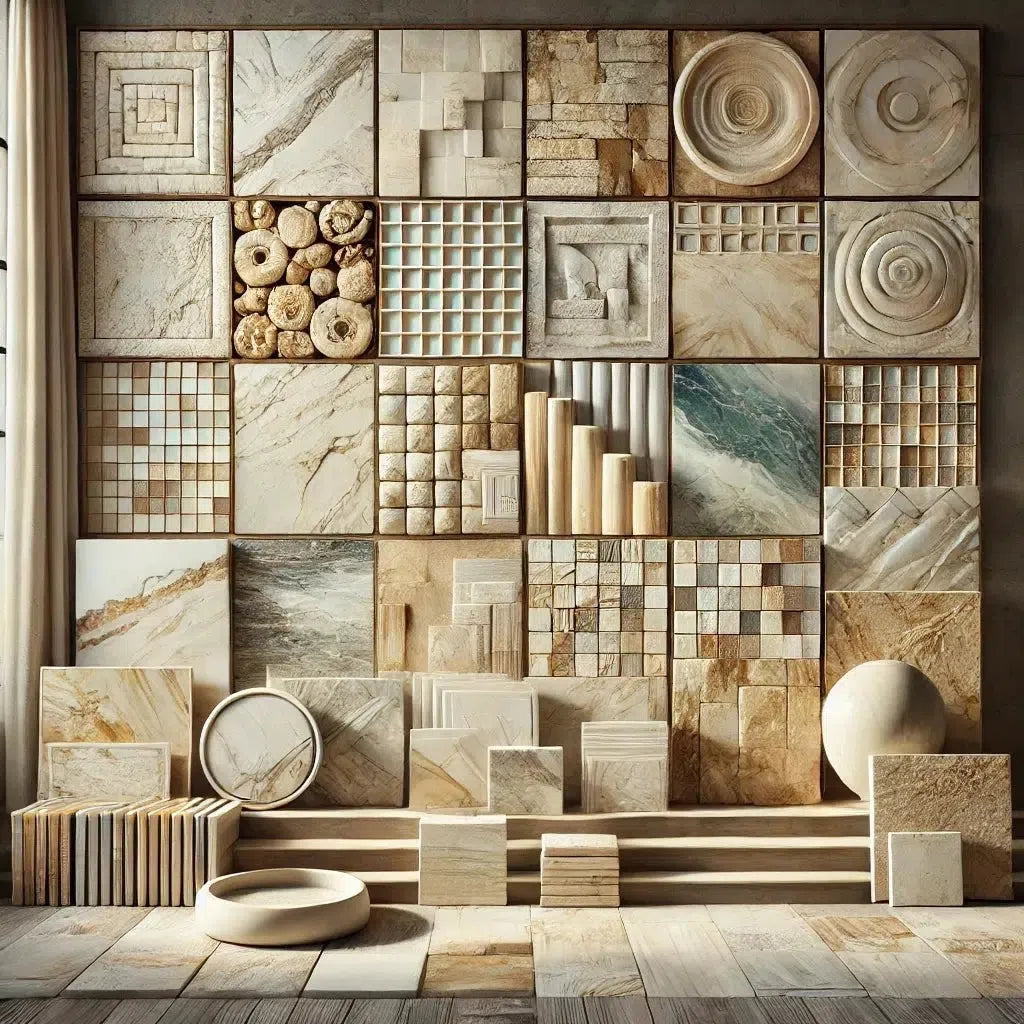 Best Selling Marble Collections
Best Selling Marble Collections
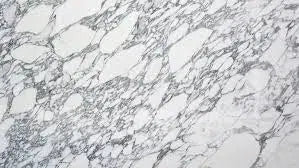 Arabescato Corchia
Arabescato Corchia Bardiglio
Bardiglio Bianco Dolomite
Bianco Dolomite  Carrara White
Carrara White 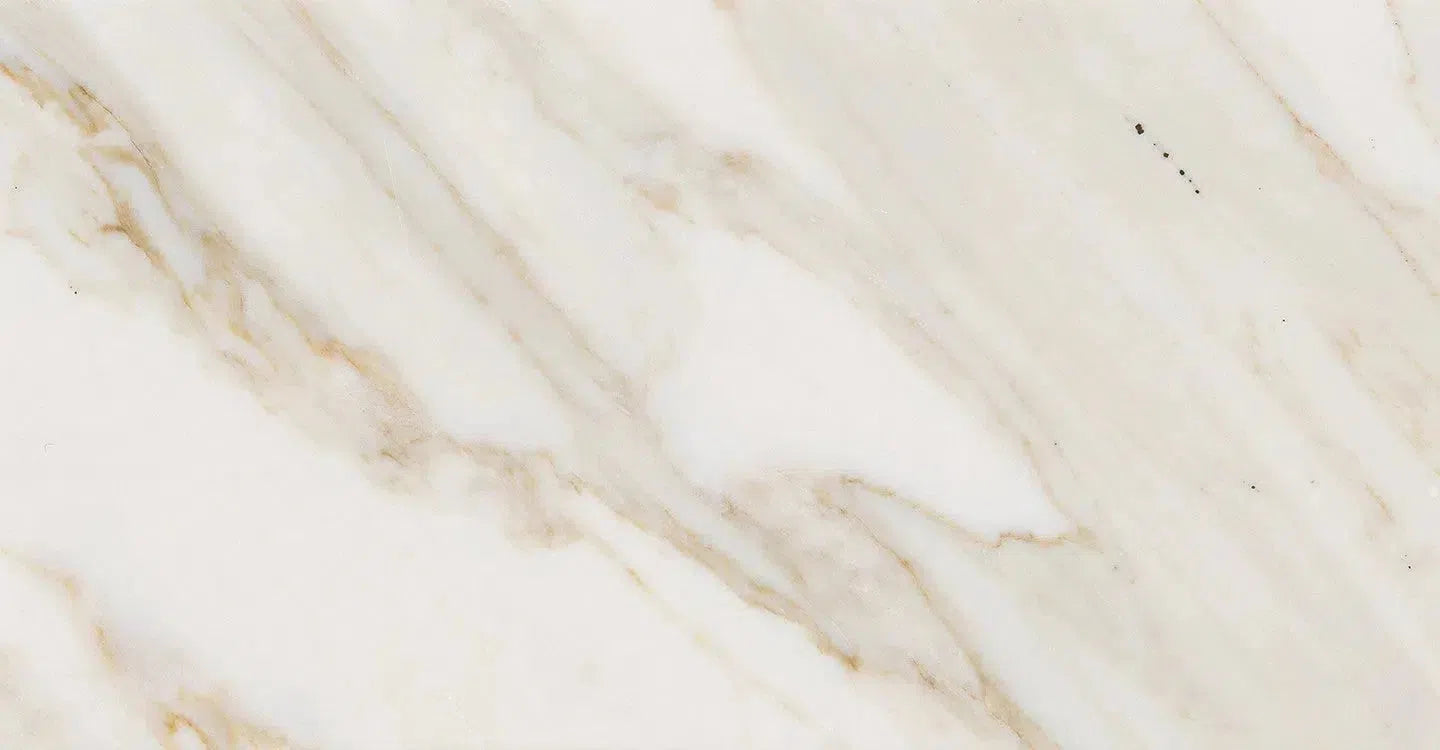 Calacatta Gold
Calacatta Gold Crema Marfil
Crema Marfil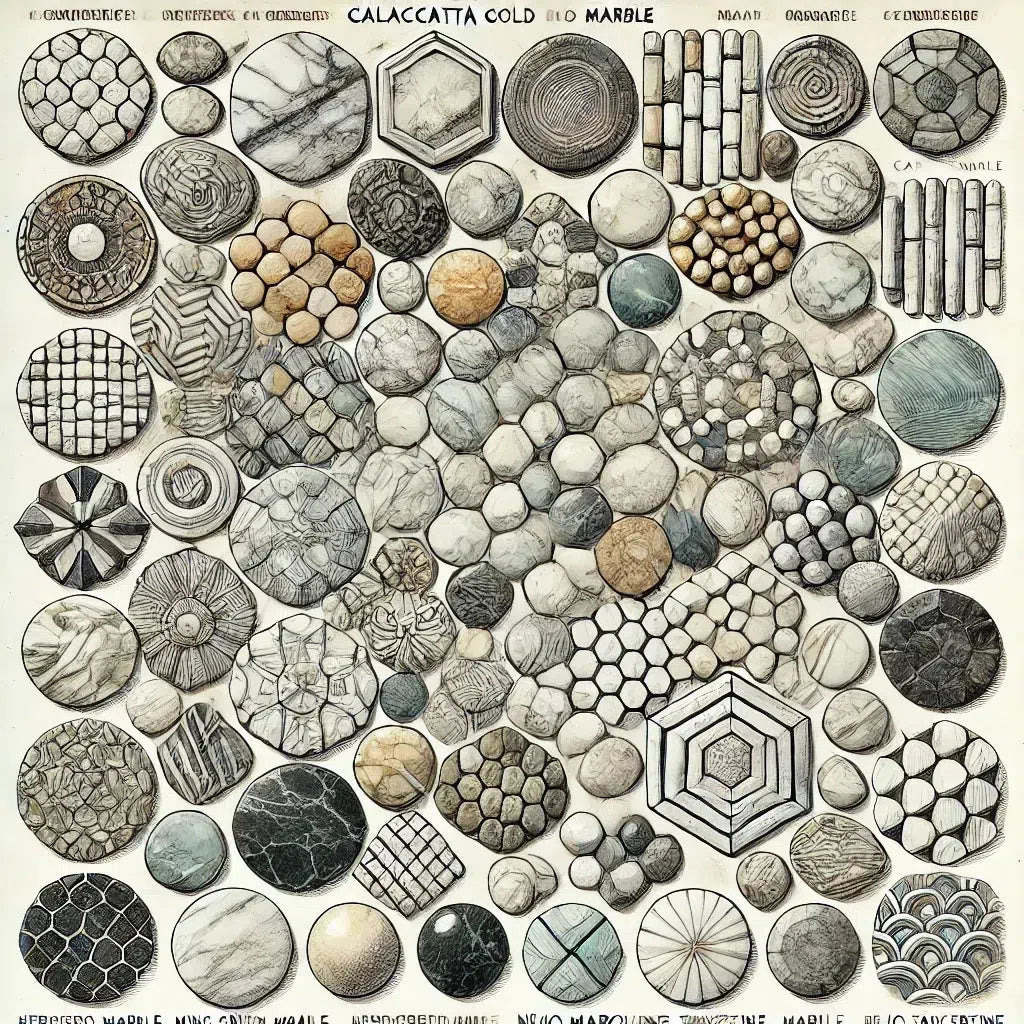 Custom Made Mosaic
Custom Made Mosaic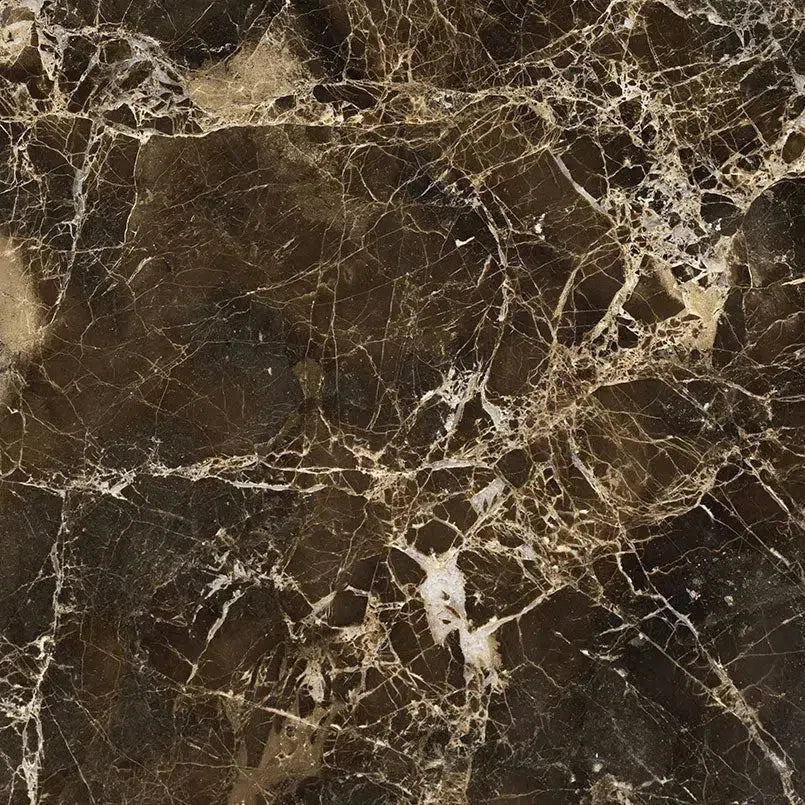 Emperador Dark
Emperador Dark Nero Marquina
Nero Marquina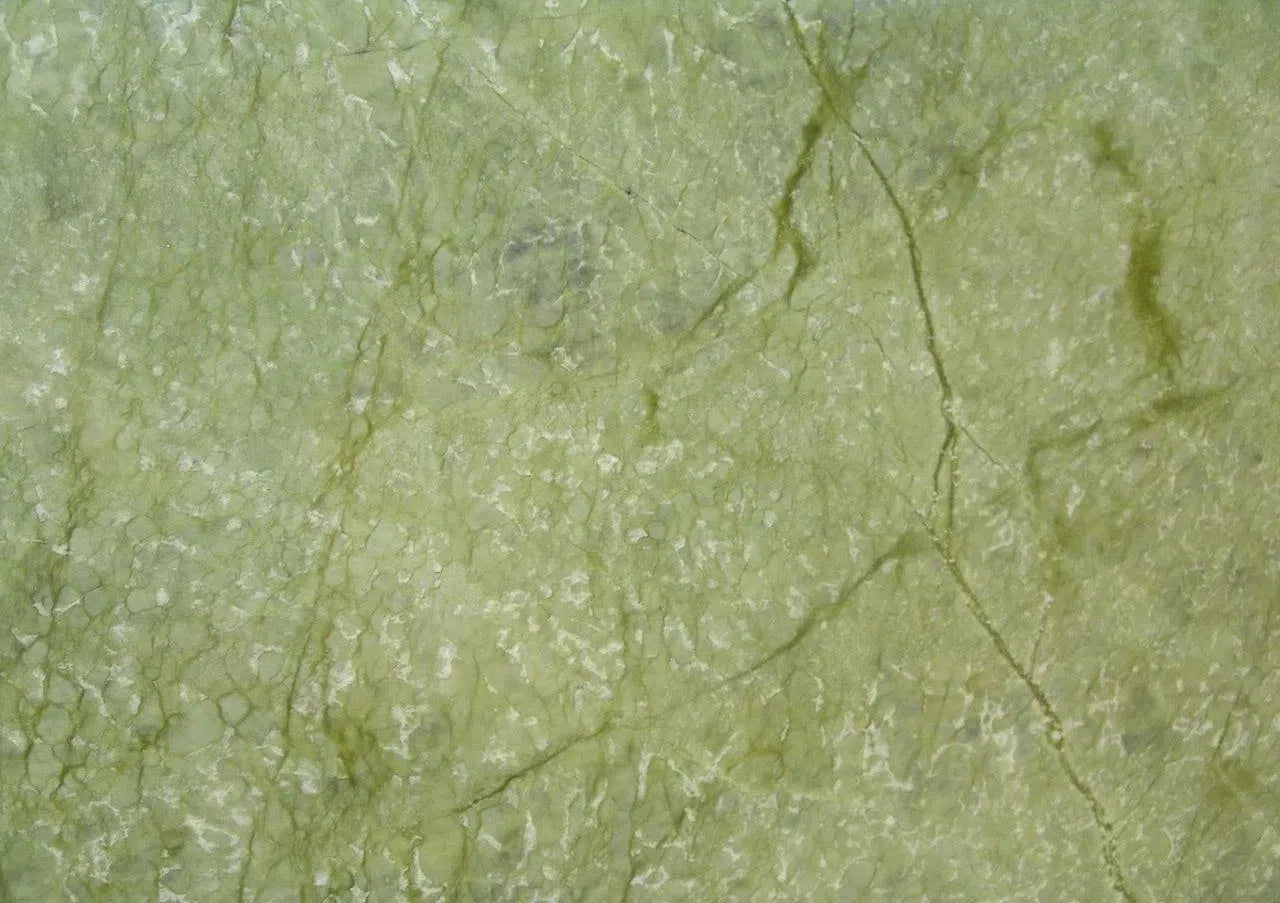 Ming Green Marble
Ming Green Marble Oriental White Marble (Asian Statuary Marble)
Oriental White Marble (Asian Statuary Marble)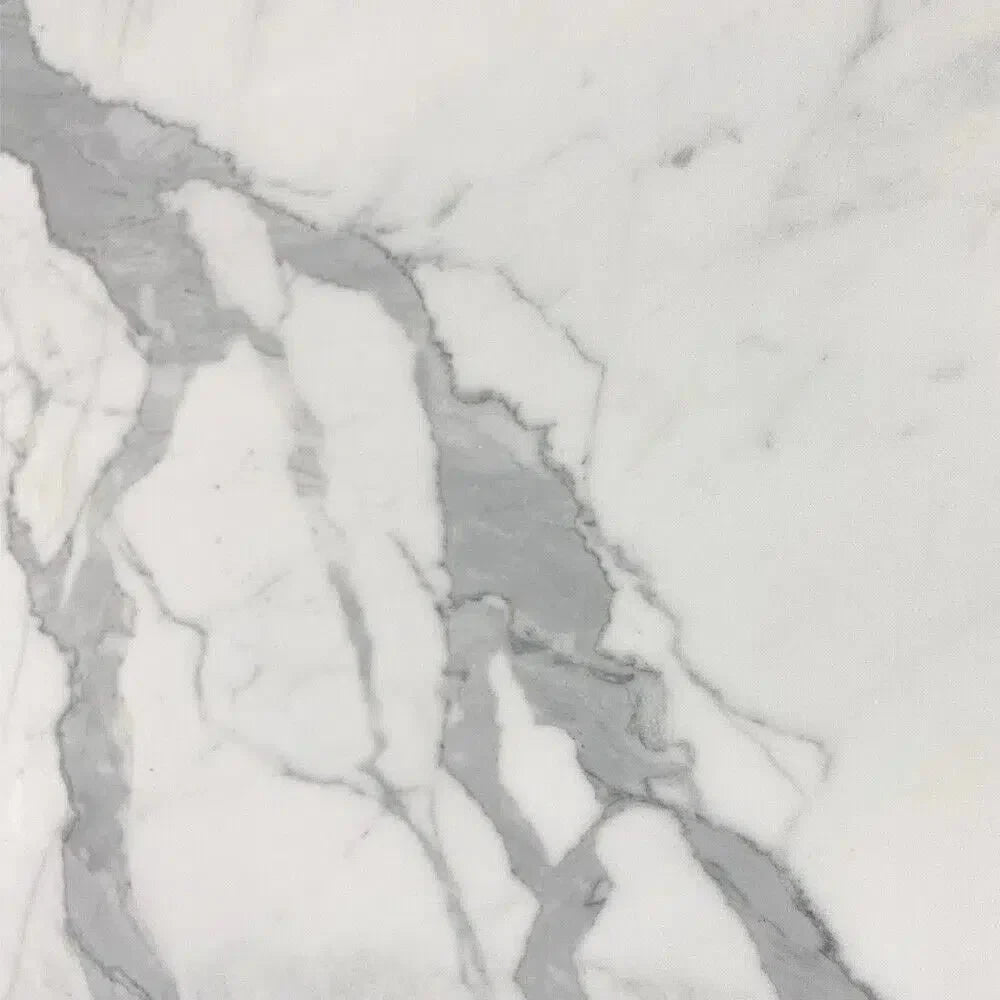 Statuary - Statuario White (Italian) Marble
Statuary - Statuario White (Italian) Marble Thassos White
Thassos White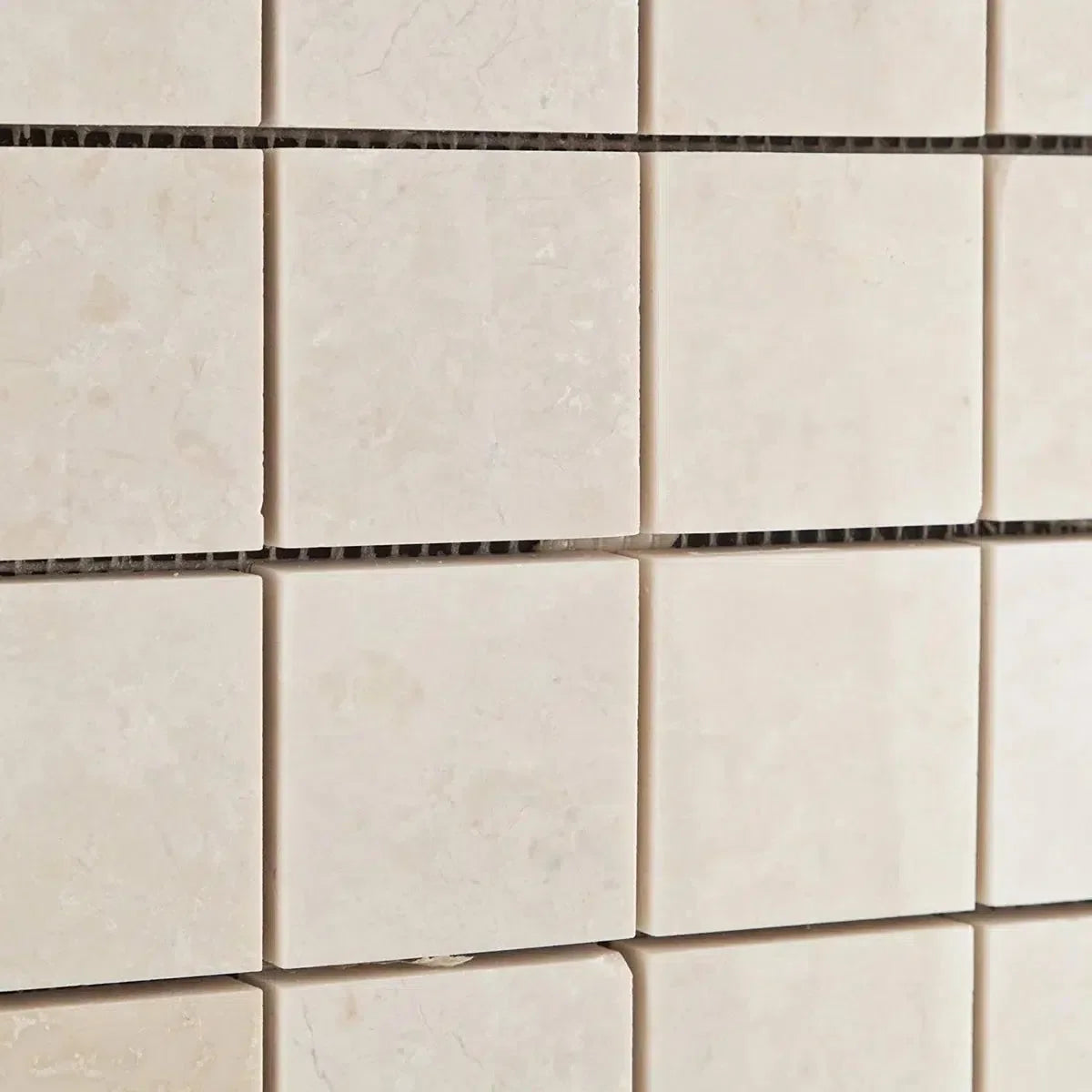 White Pearl/Botticino Beige Marble
White Pearl/Botticino Beige Marble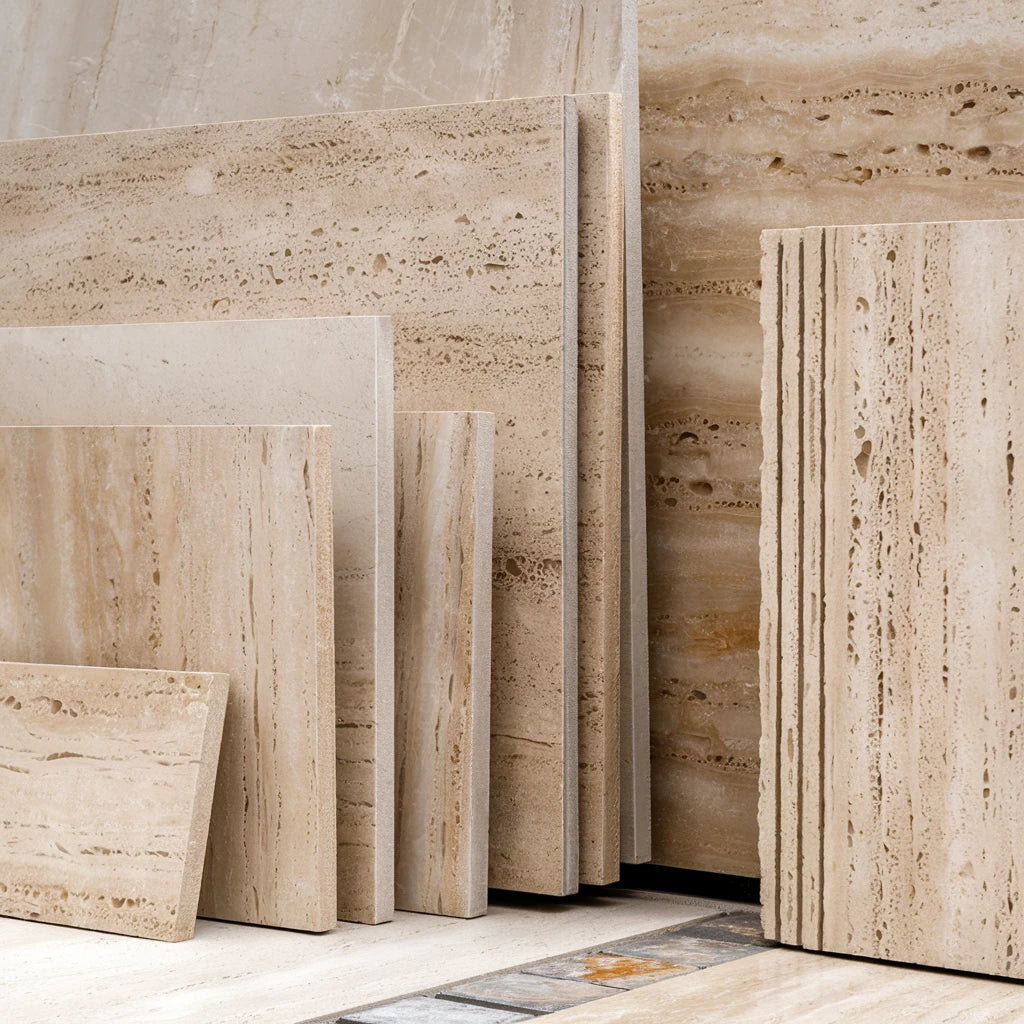 Best Selling Travertine Collections
Best Selling Travertine Collections
 Ivory Travertine
Ivory Travertine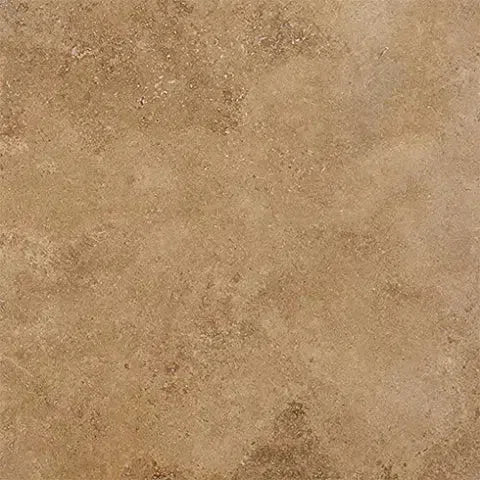 Noce Travertine
Noce Travertine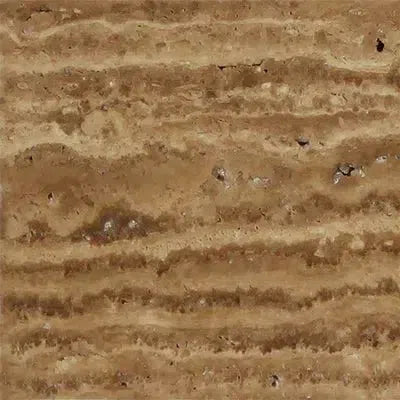 Exotic Noce Travertine
Exotic Noce Travertine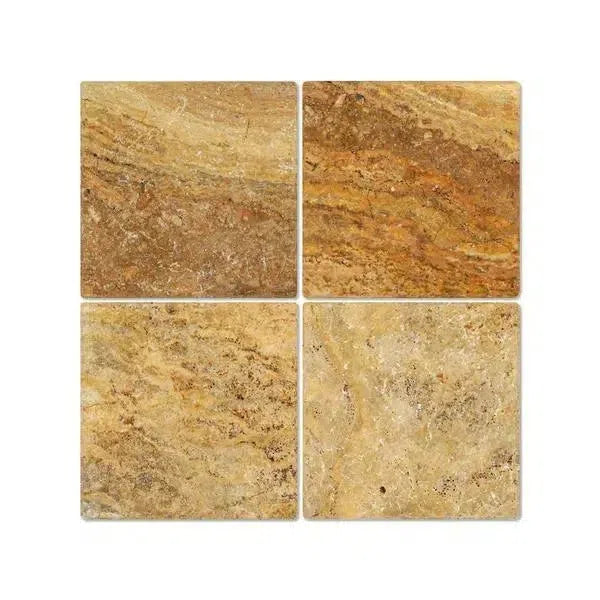 Scabos | Autumn Leaves Travertine
Scabos | Autumn Leaves Travertine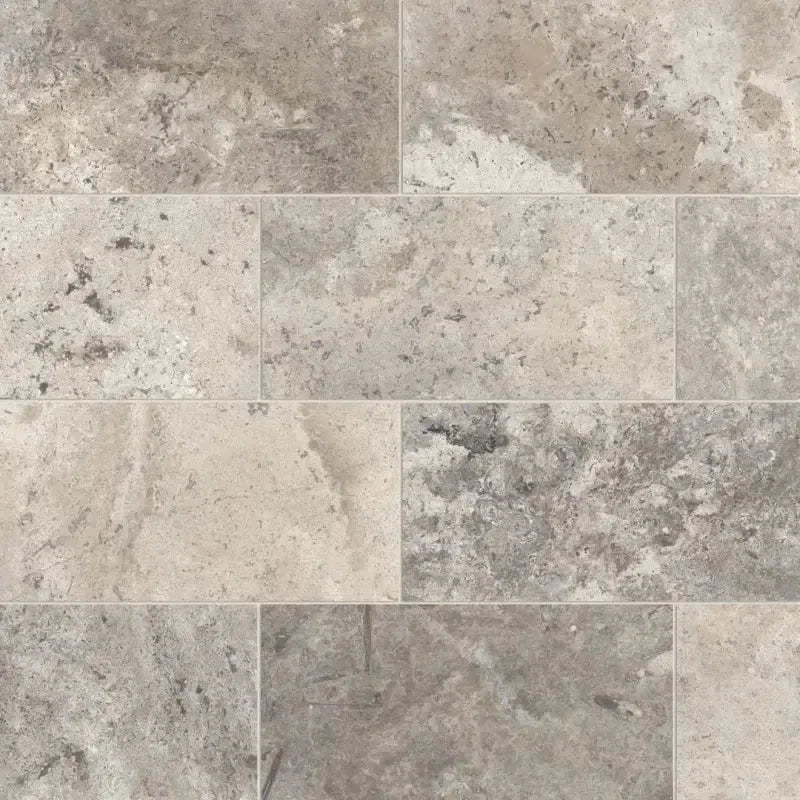 Silver Travertine
Silver Travertine Exotic Travertine
Exotic Travertine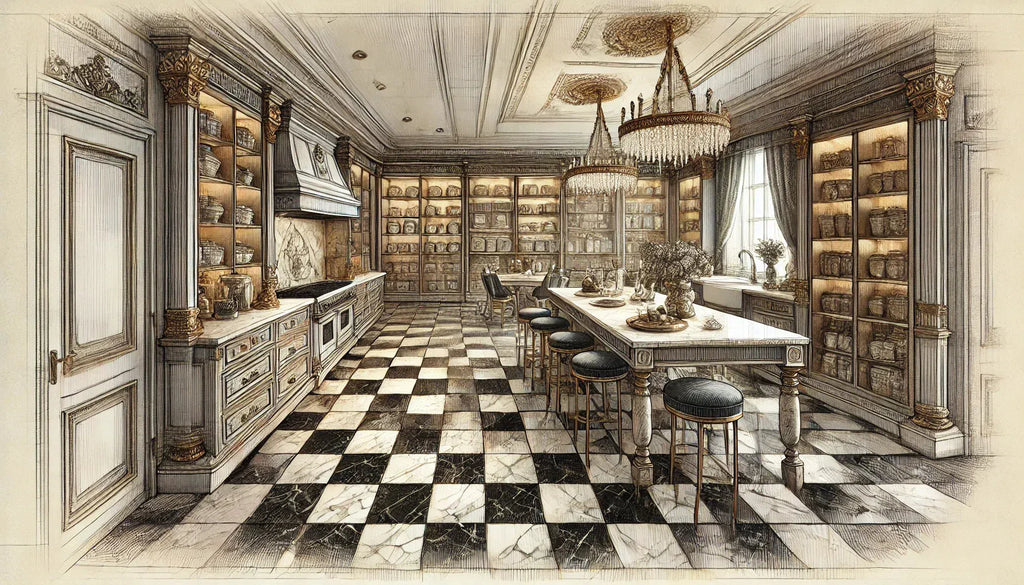 Checkerboard
Checkerboard
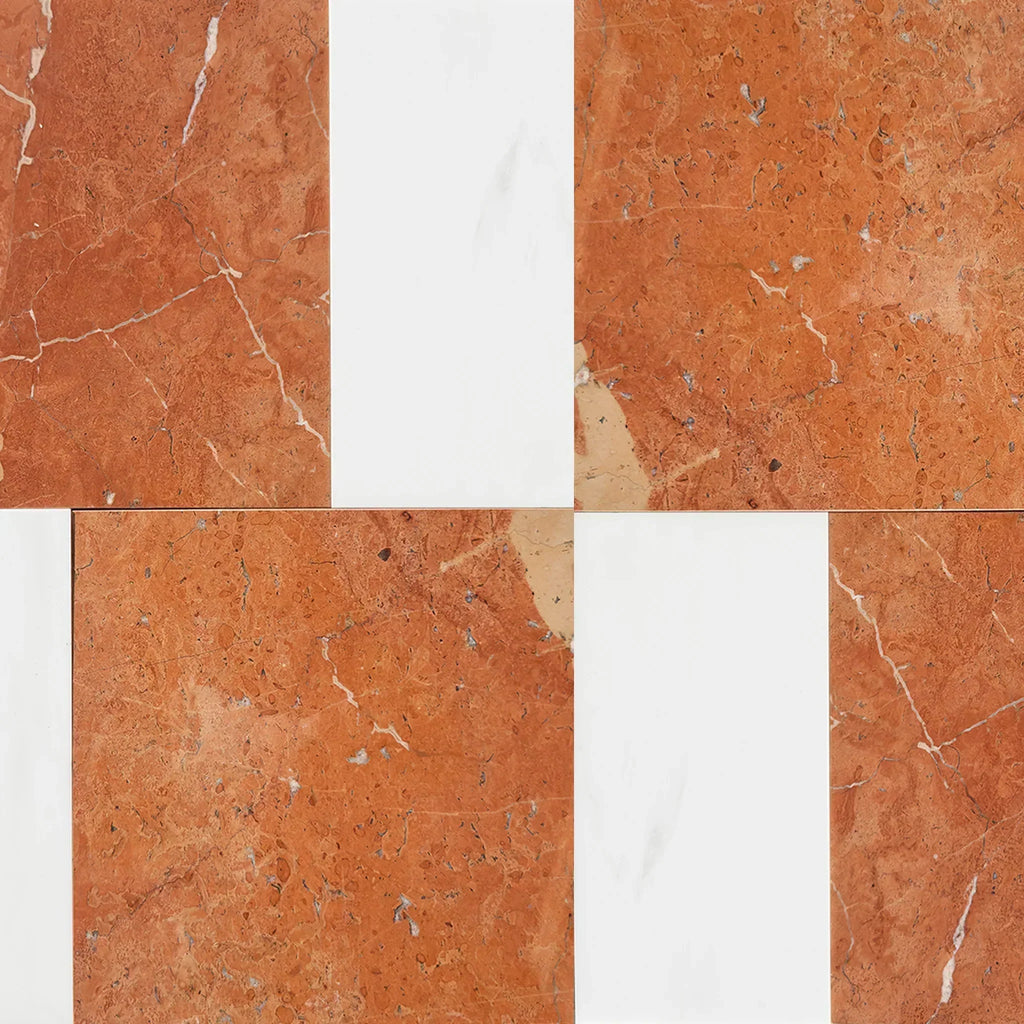 Patterned Tile
Patterned Tile
 Shop By Material
Shop By Material
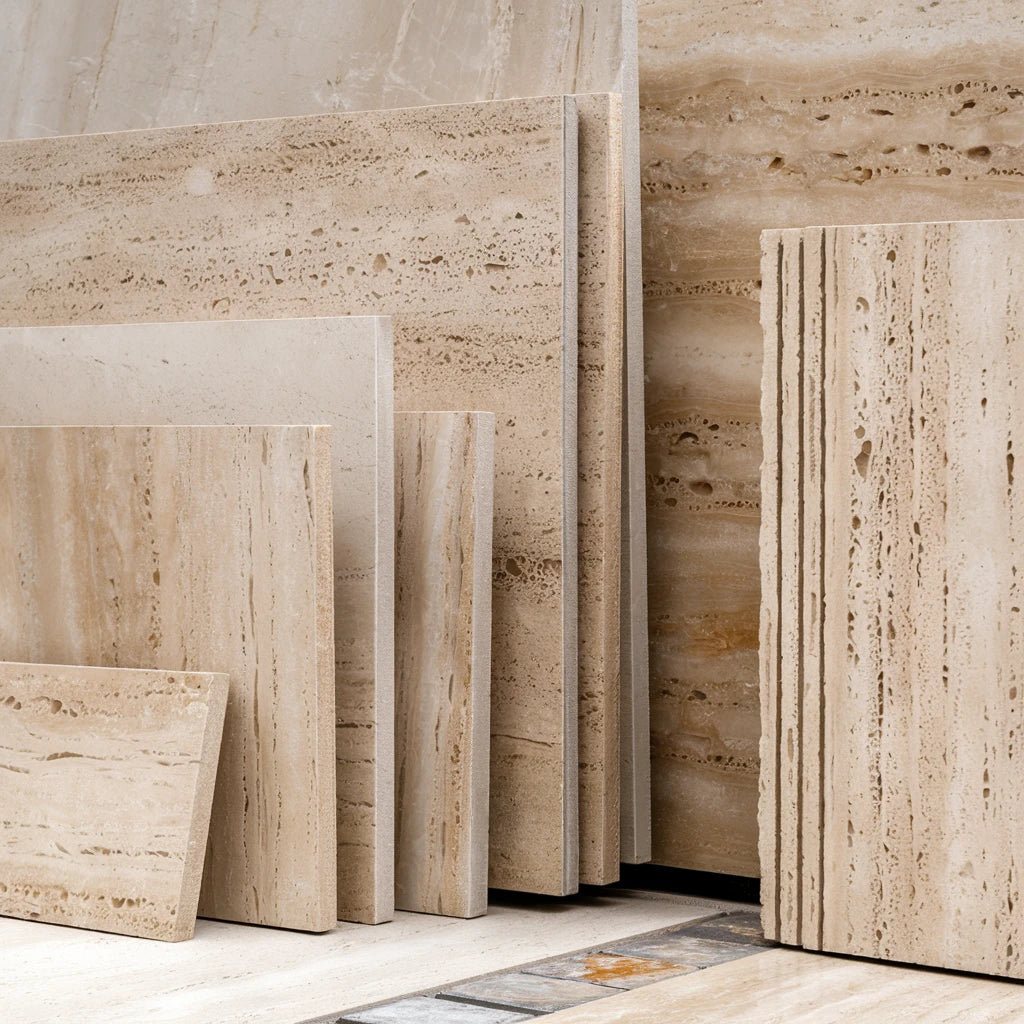 Travertine
Travertine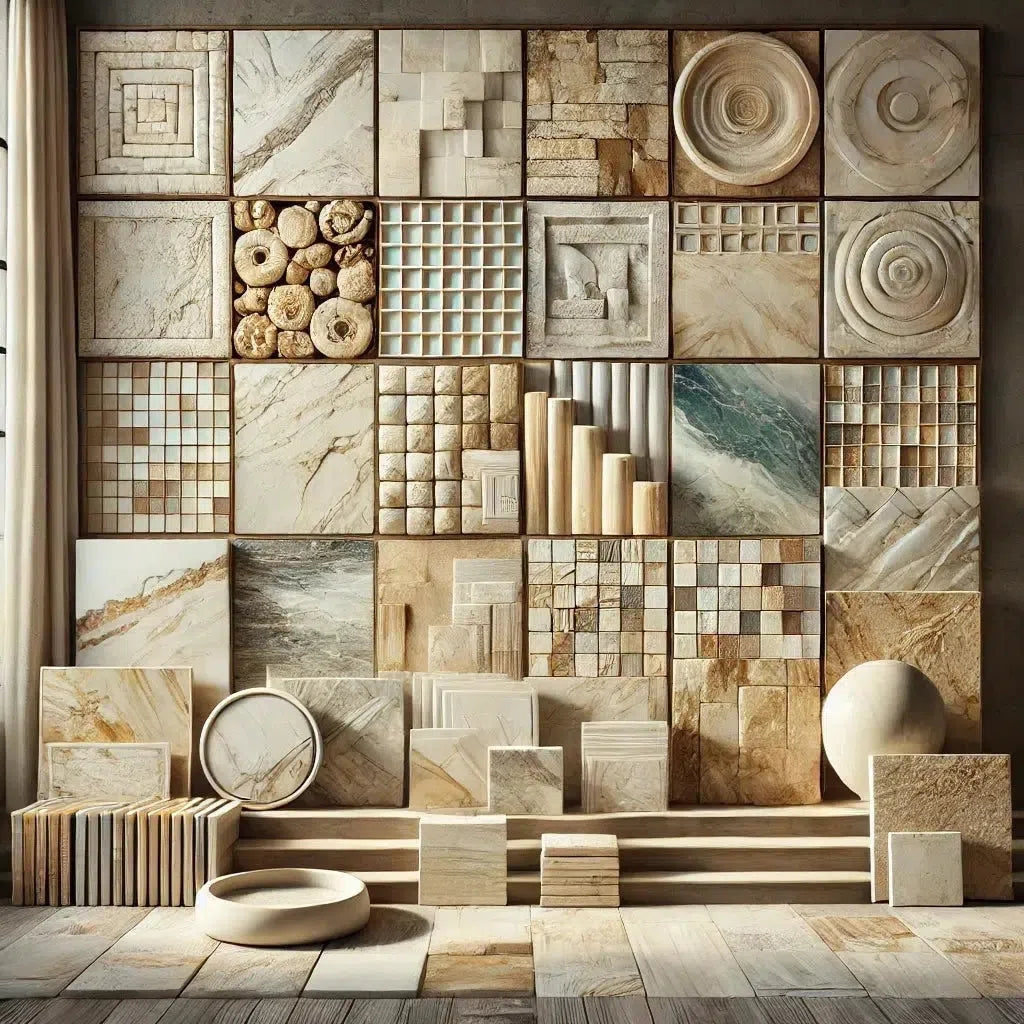 Marble
Marble Limestone
Limestone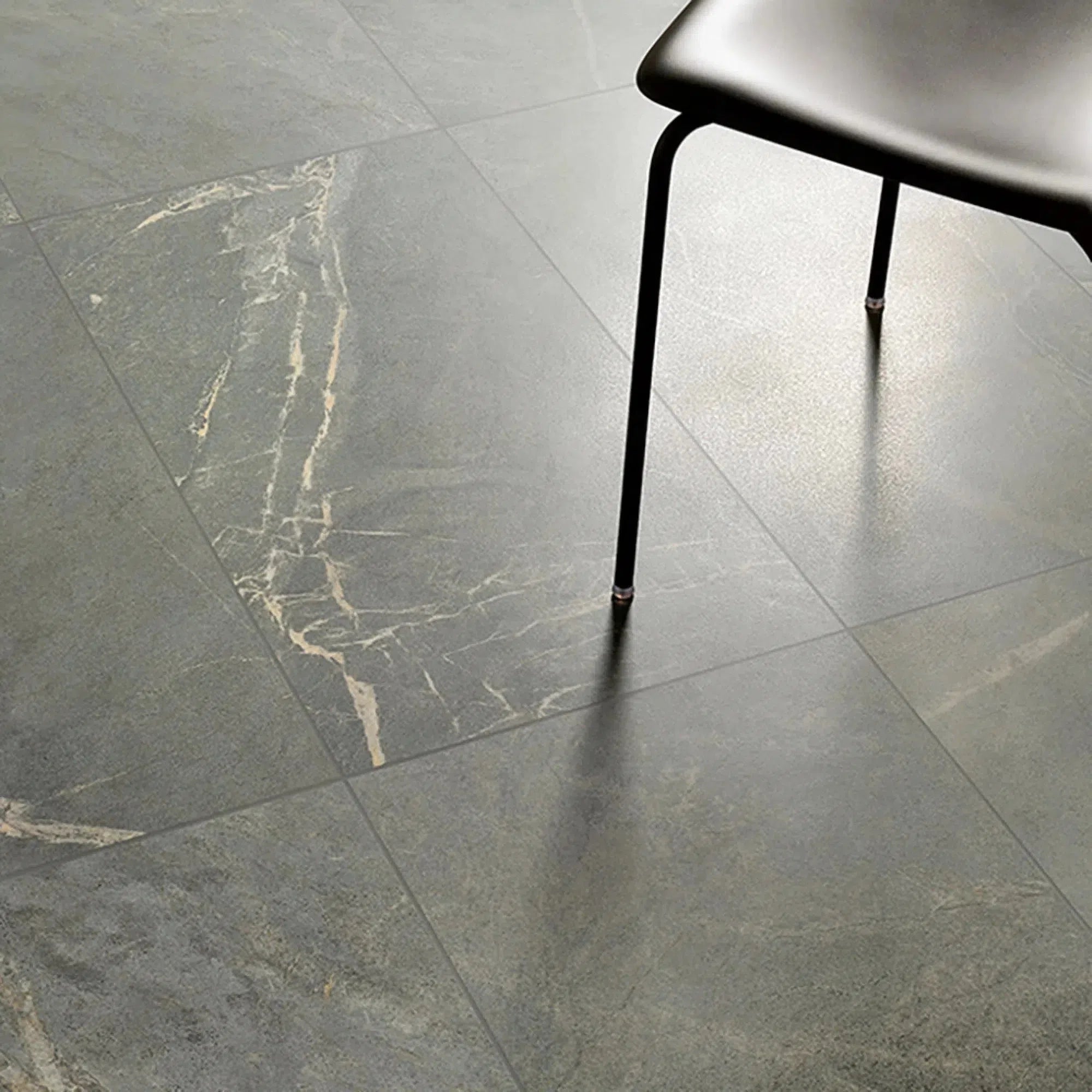 Soap Stone
Soap Stone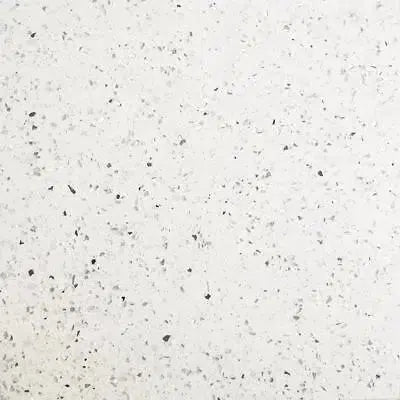 Quartz
Quartz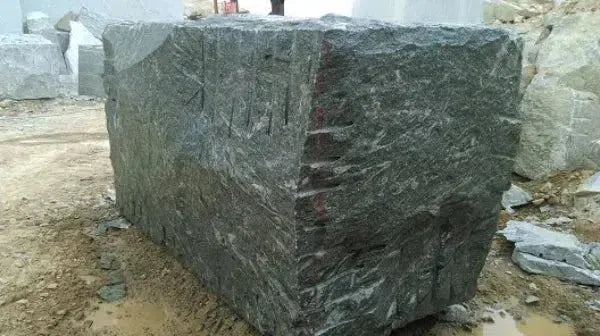 Granite
Granite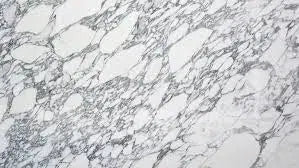 Shop By Name
Shop By Name
 Absolute Black Granite
Absolute Black Granite Atlantic Gray Marble
Atlantic Gray Marble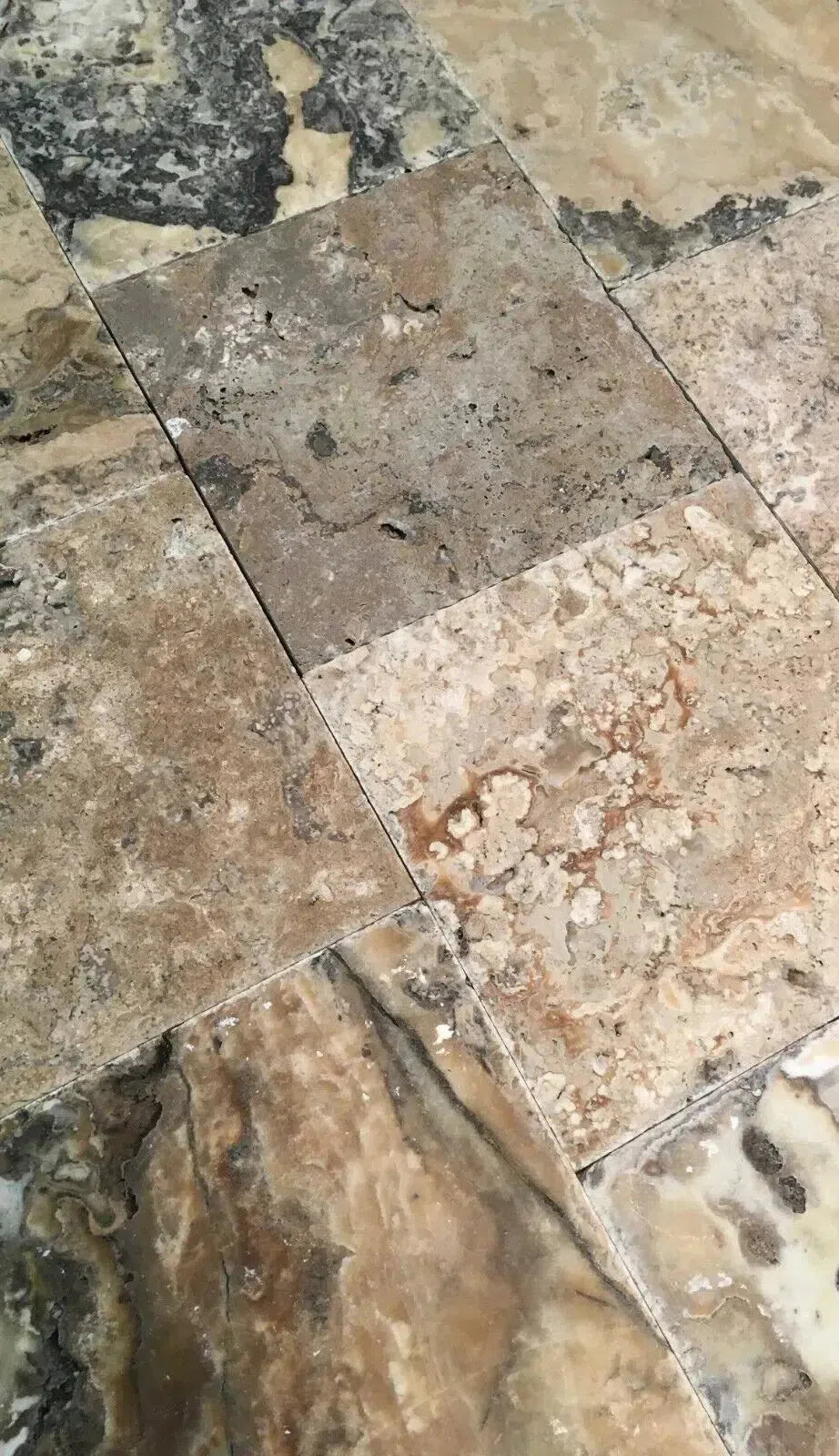 Antico Onyx Travertine
Antico Onyx Travertine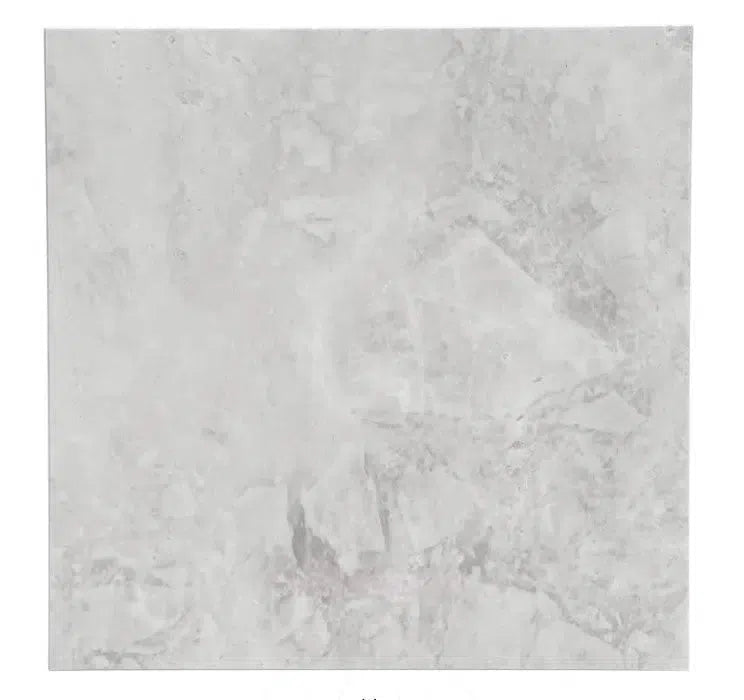 Bianco Congelato Dolomite
Bianco Congelato Dolomite Bianco Venatino (Bianco Mare) Marble
Bianco Venatino (Bianco Mare) Marble Burgundy Mocha Marble
Burgundy Mocha Marble Calacatta Verde Royale Marble
Calacatta Verde Royale Marble Cappuccino Marble
Cappuccino Marble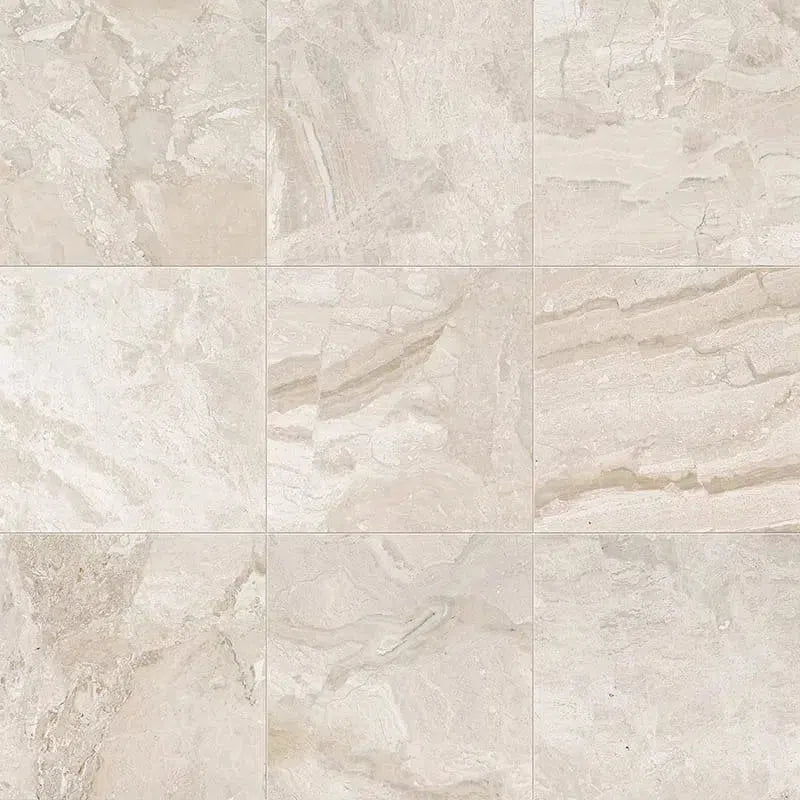 Diano Royal (Queen Beige) Marble
Diano Royal (Queen Beige) Marble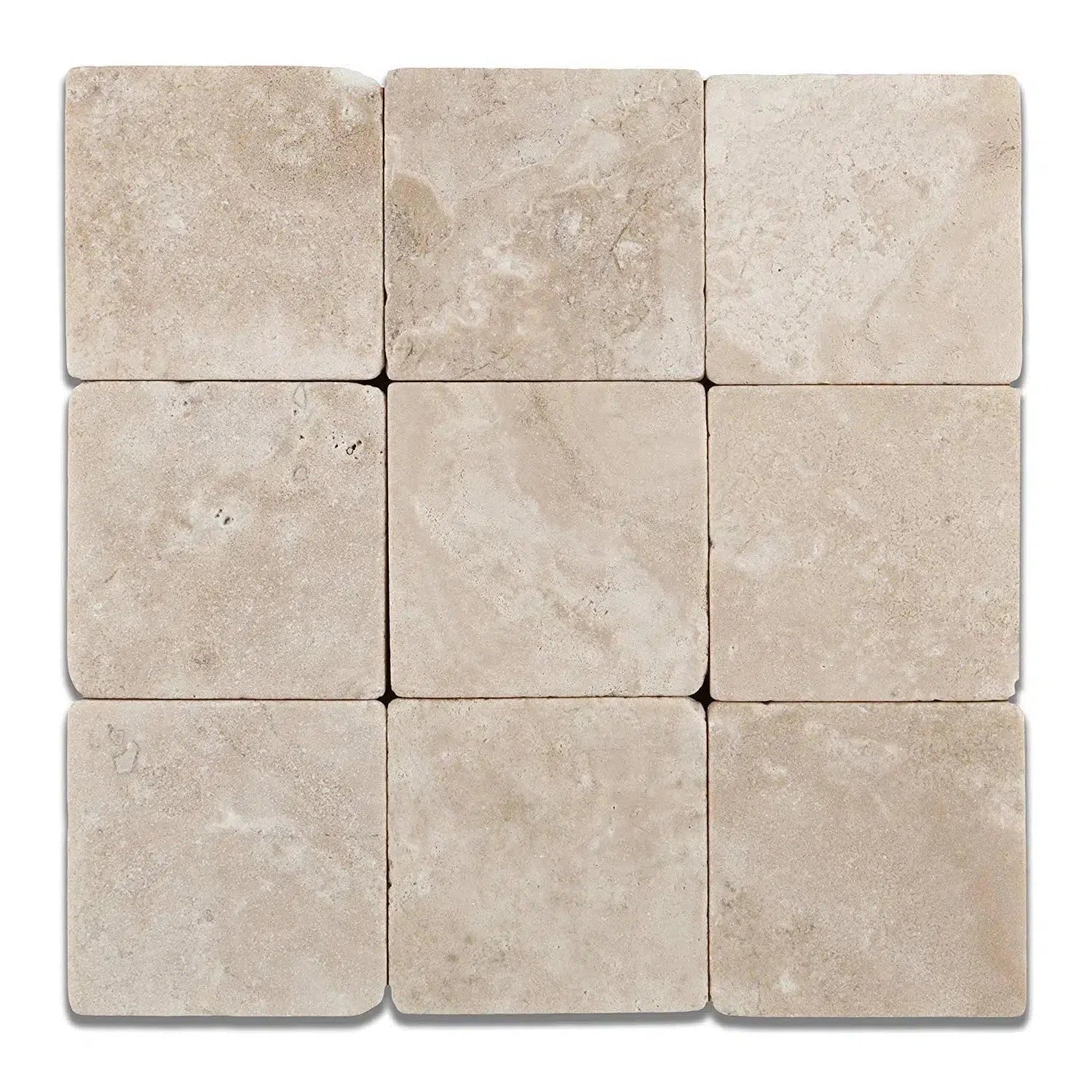 Durango Cream Traverine
Durango Cream Traverine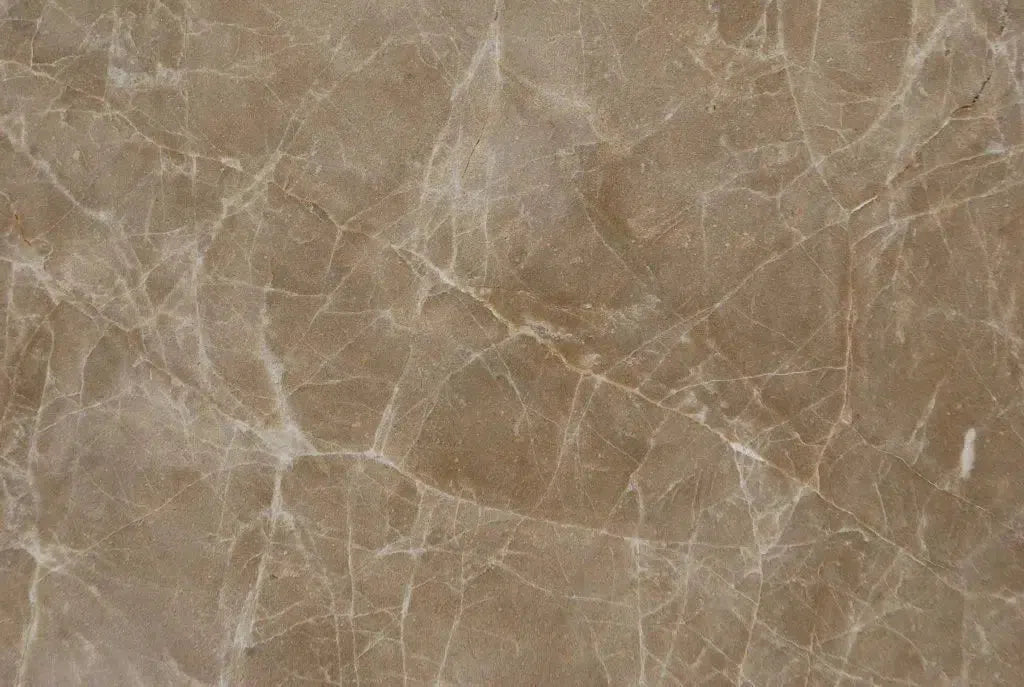 Emperador Light Marble
Emperador Light Marble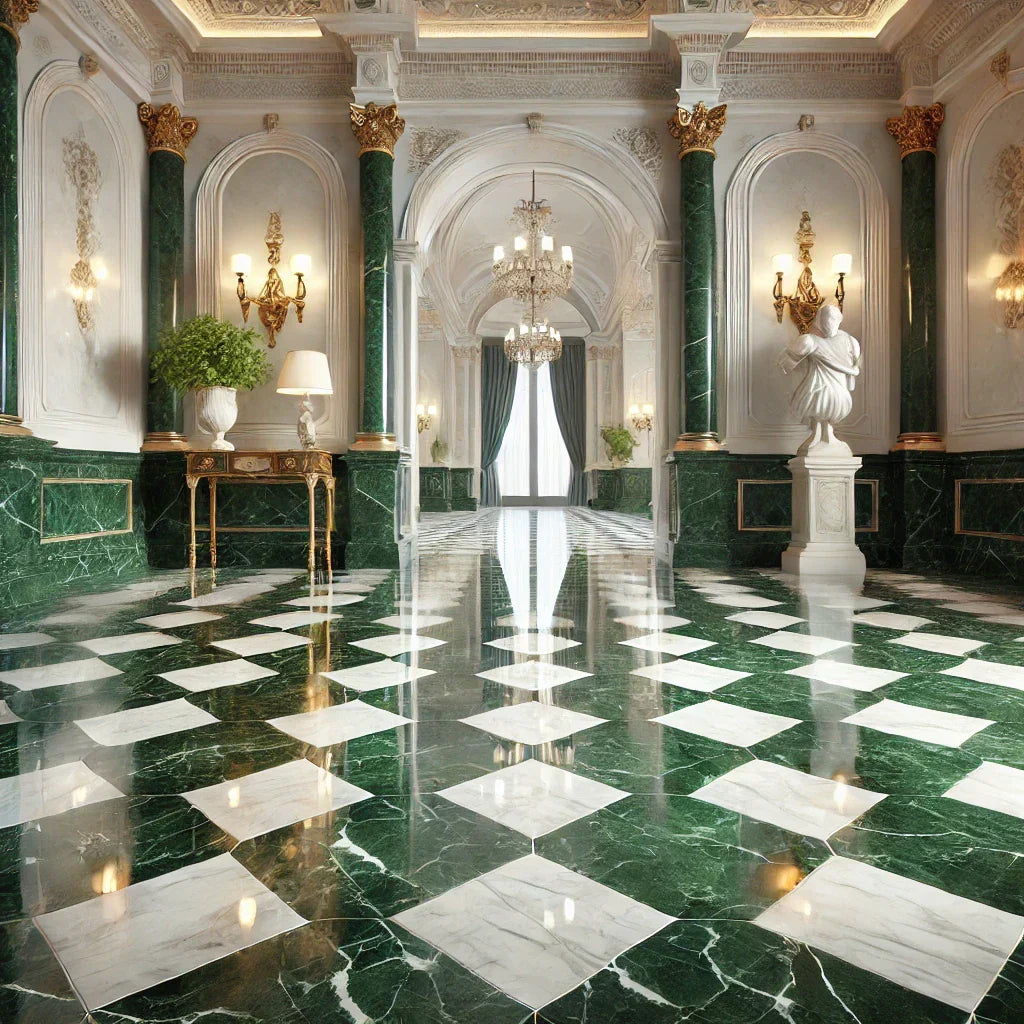 Empress Green Marble
Empress Green Marble Gold/Yellow Travertine
Gold/Yellow Travertine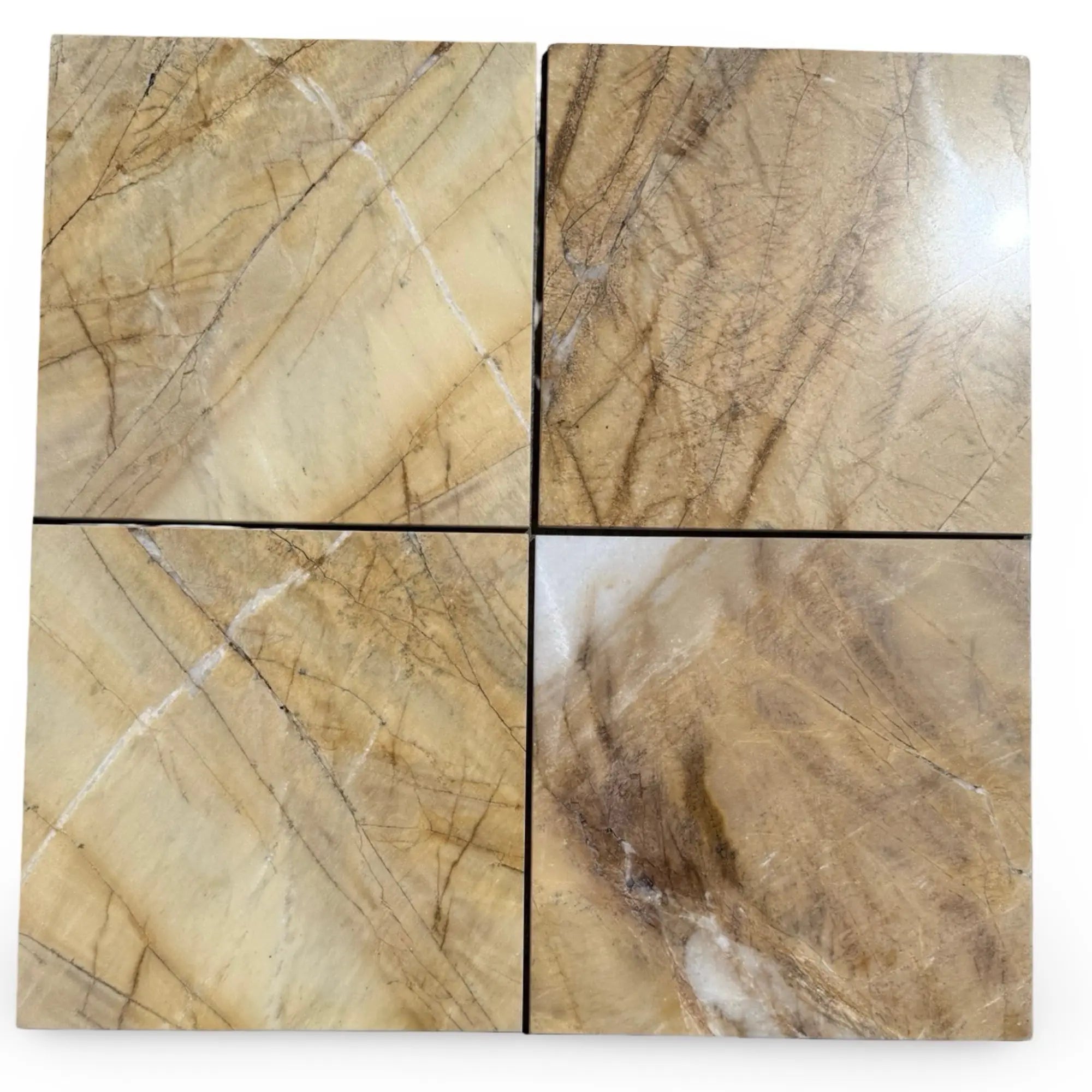 Golden Horizon Marble
Golden Horizon Marble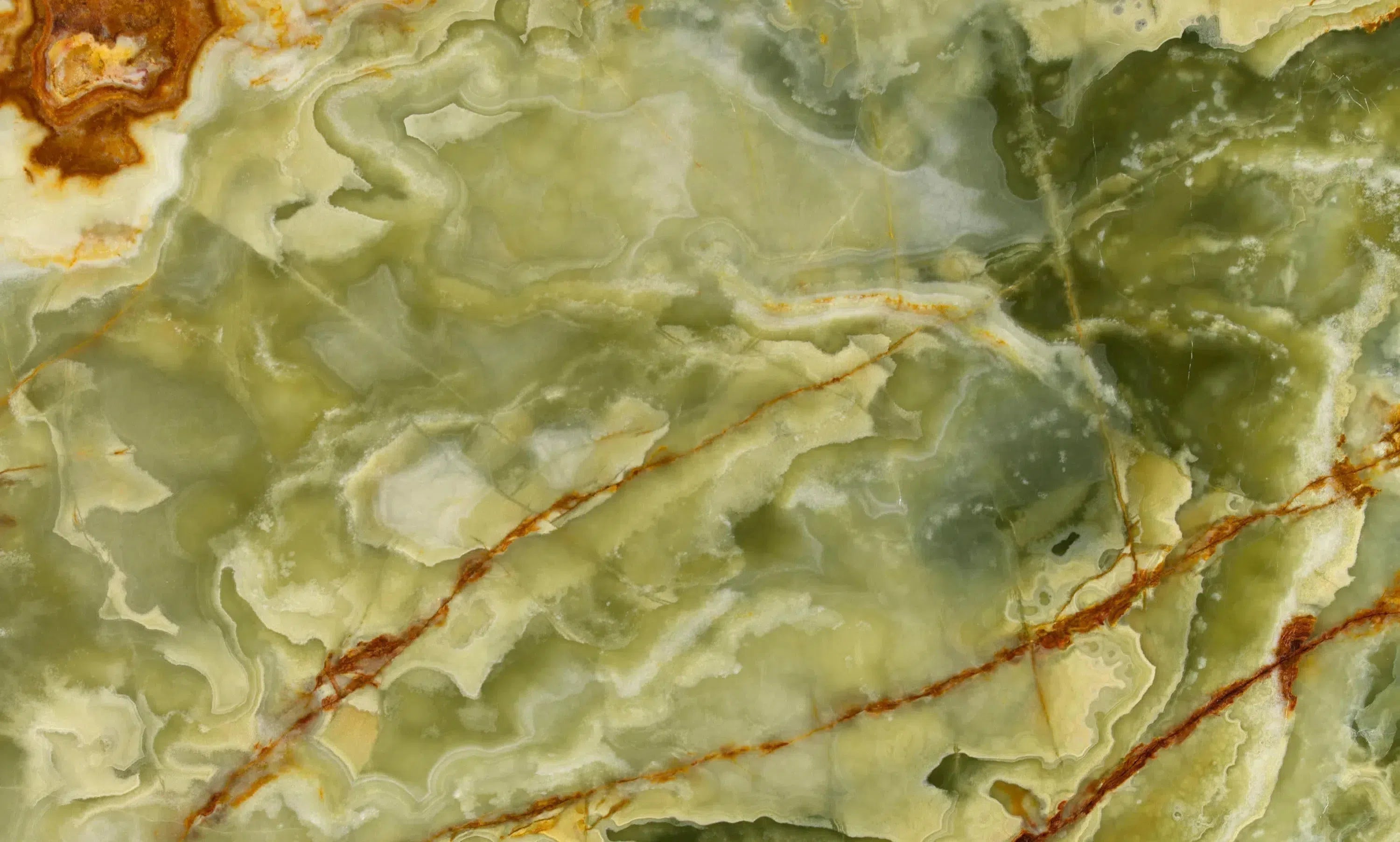 Green Onyx Marble
Green Onyx Marble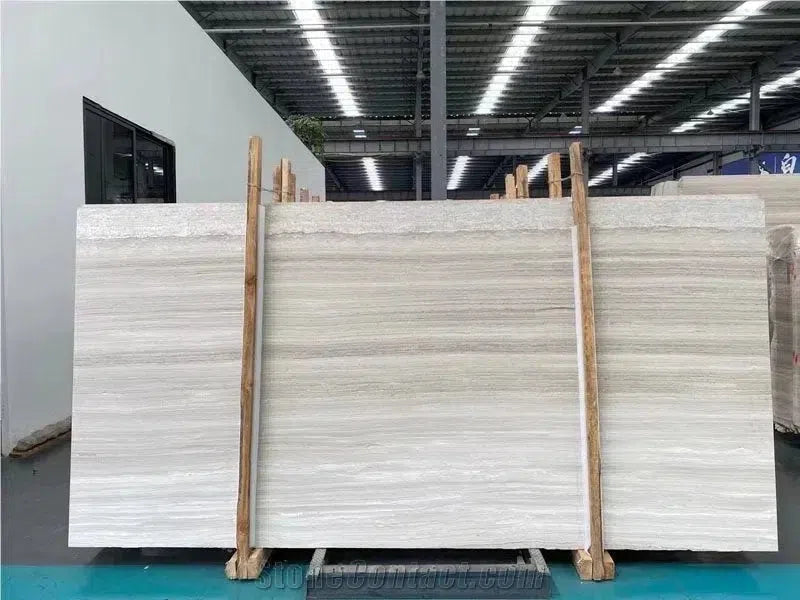 Haisa Light (White Wood) Limestone
Haisa Light (White Wood) Limestone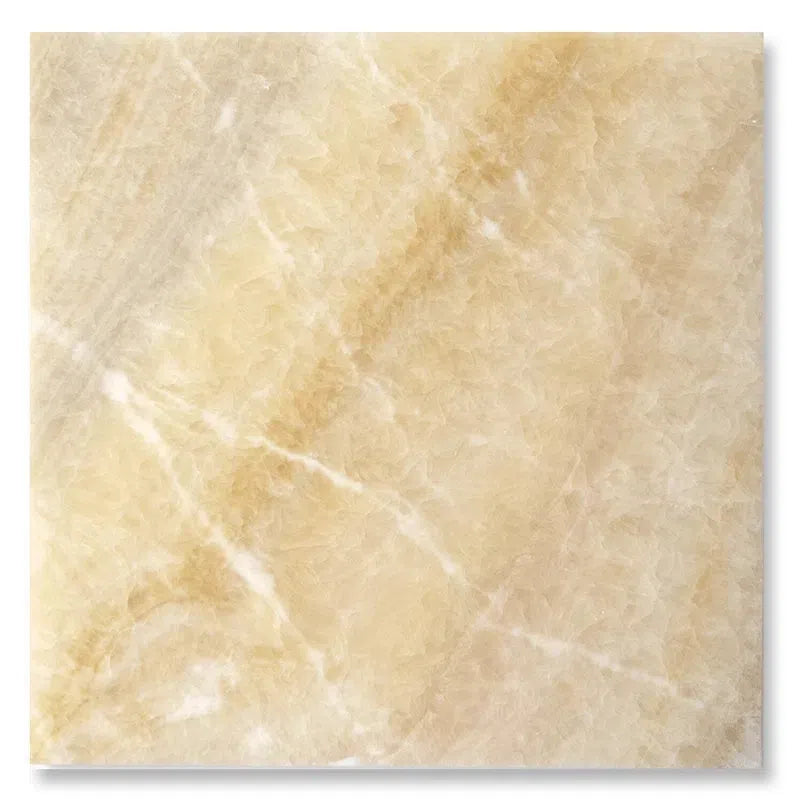 Honey Onyx Marble
Honey Onyx Marble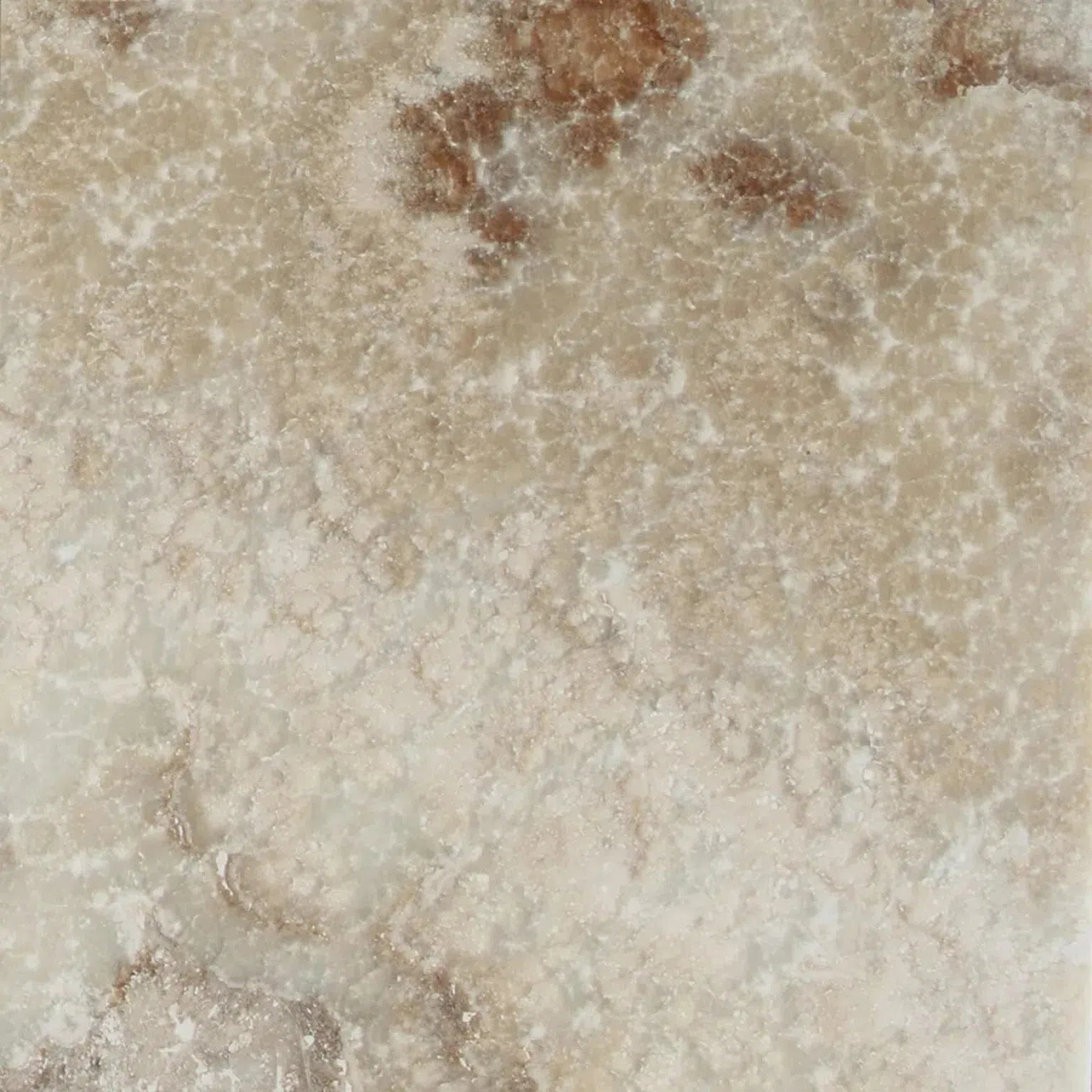 La Travonya Travertine
La Travonya Travertine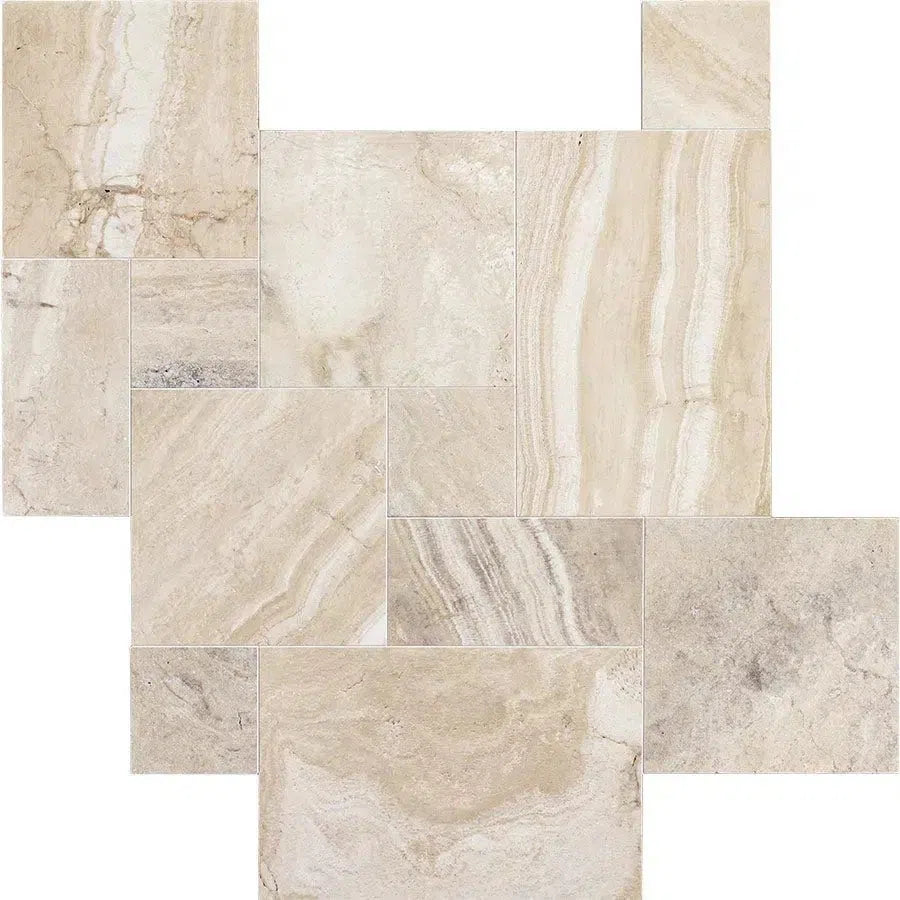 Malibu Travertine
Malibu Travertine Mink (Equator) Marble
Mink (Equator) Marble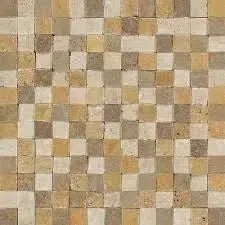 Mixed (Ivory-Noce-Gold) Travertine
Mixed (Ivory-Noce-Gold) Travertine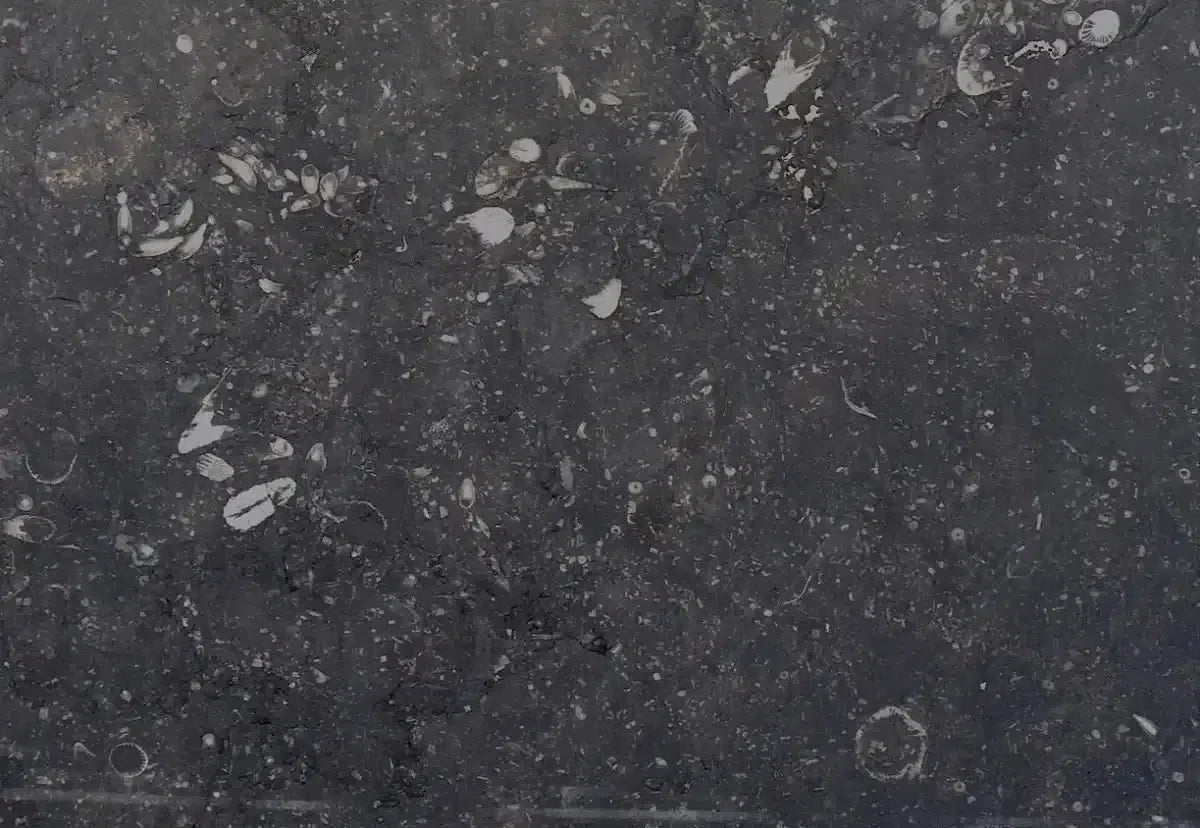 Pierre Bleue (Pierre Blue) Marble
Pierre Bleue (Pierre Blue) Marble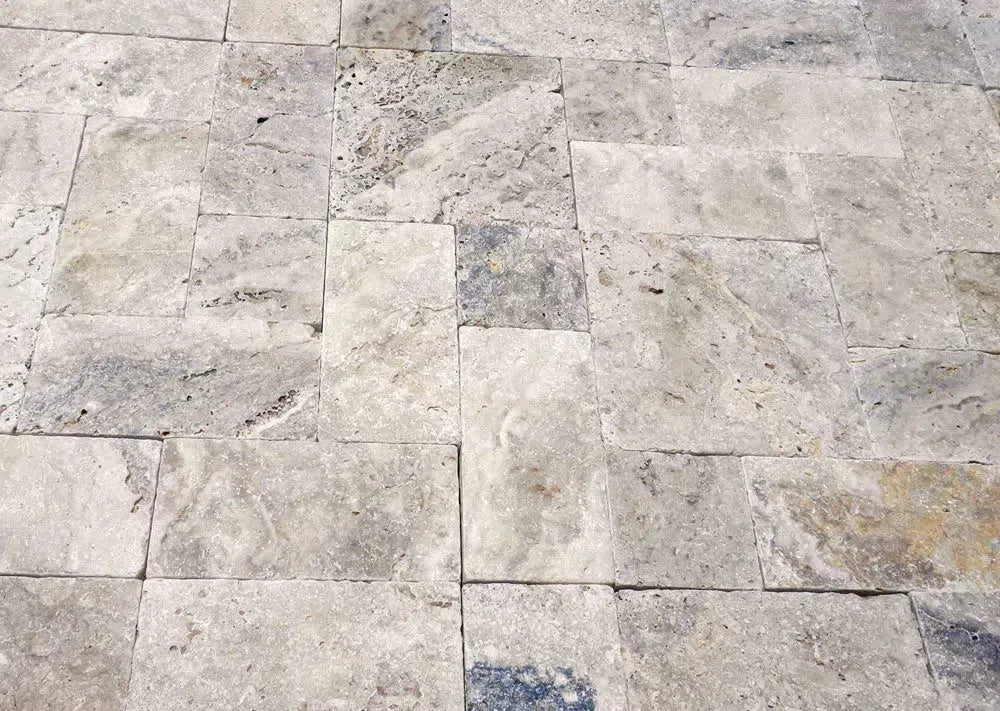 Philadelphia Travertine
Philadelphia Travertine Rosé Aurora Marble
Rosé Aurora Marble Rosetta Storm Marble
Rosetta Storm Marble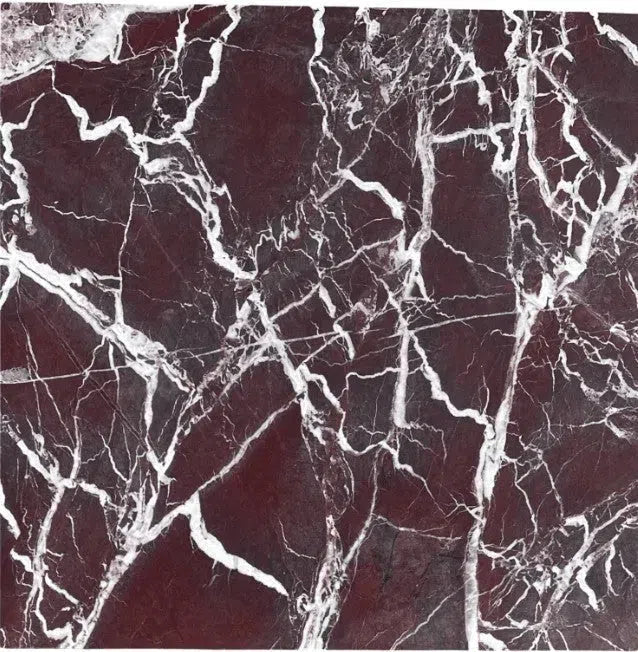 Rosso Levanto Marble
Rosso Levanto Marble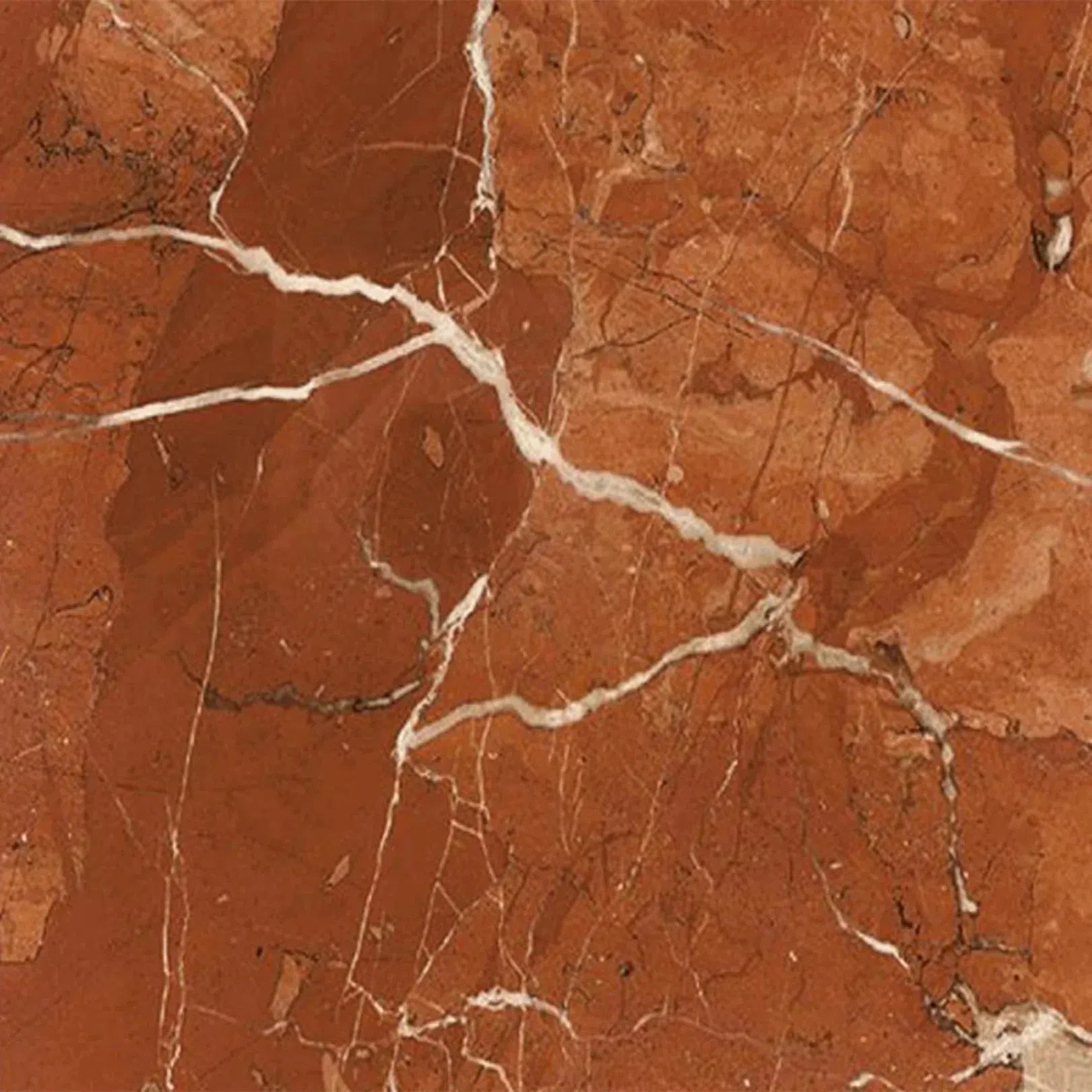 Rojo Alicante Marble
Rojo Alicante Marble Sahara Ember Marble
Sahara Ember Marble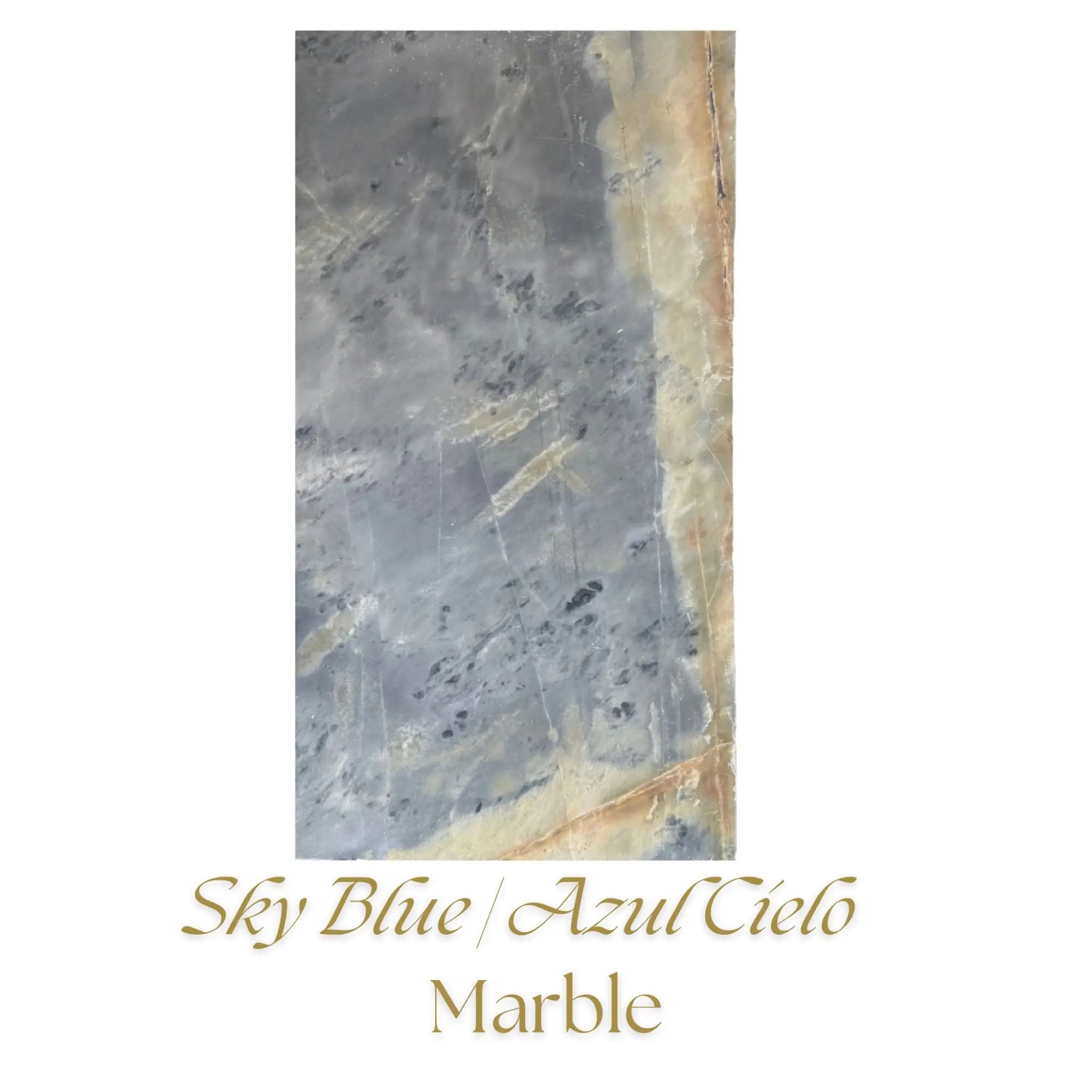 Sky Blue | Azul Cielo Marble
Sky Blue | Azul Cielo Marble Snow White (Afyon White) Marble
Snow White (Afyon White) Marble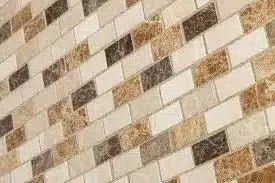 Spanish Mix Marble
Spanish Mix Marble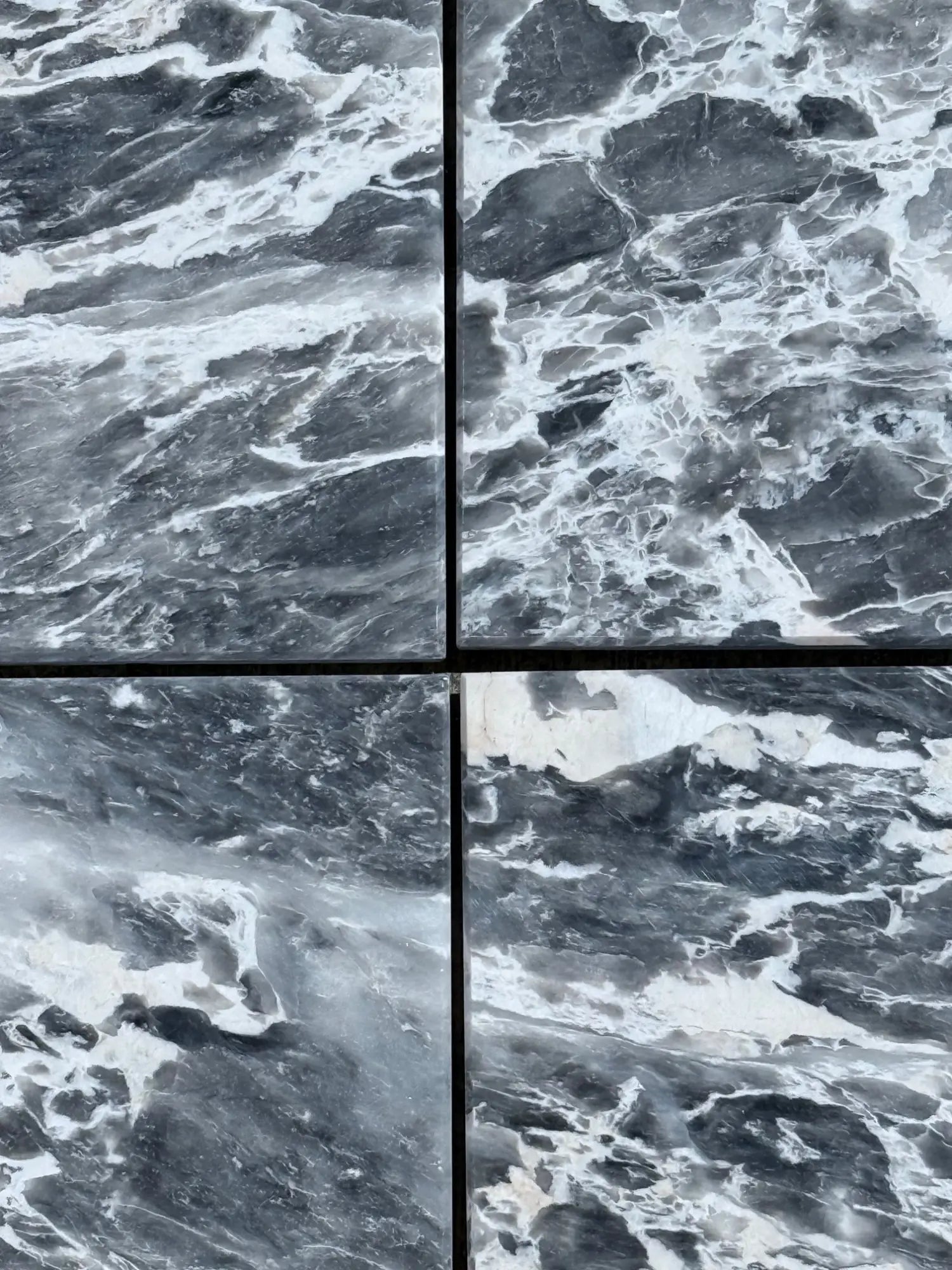 Storm Gray Marble
Storm Gray Marble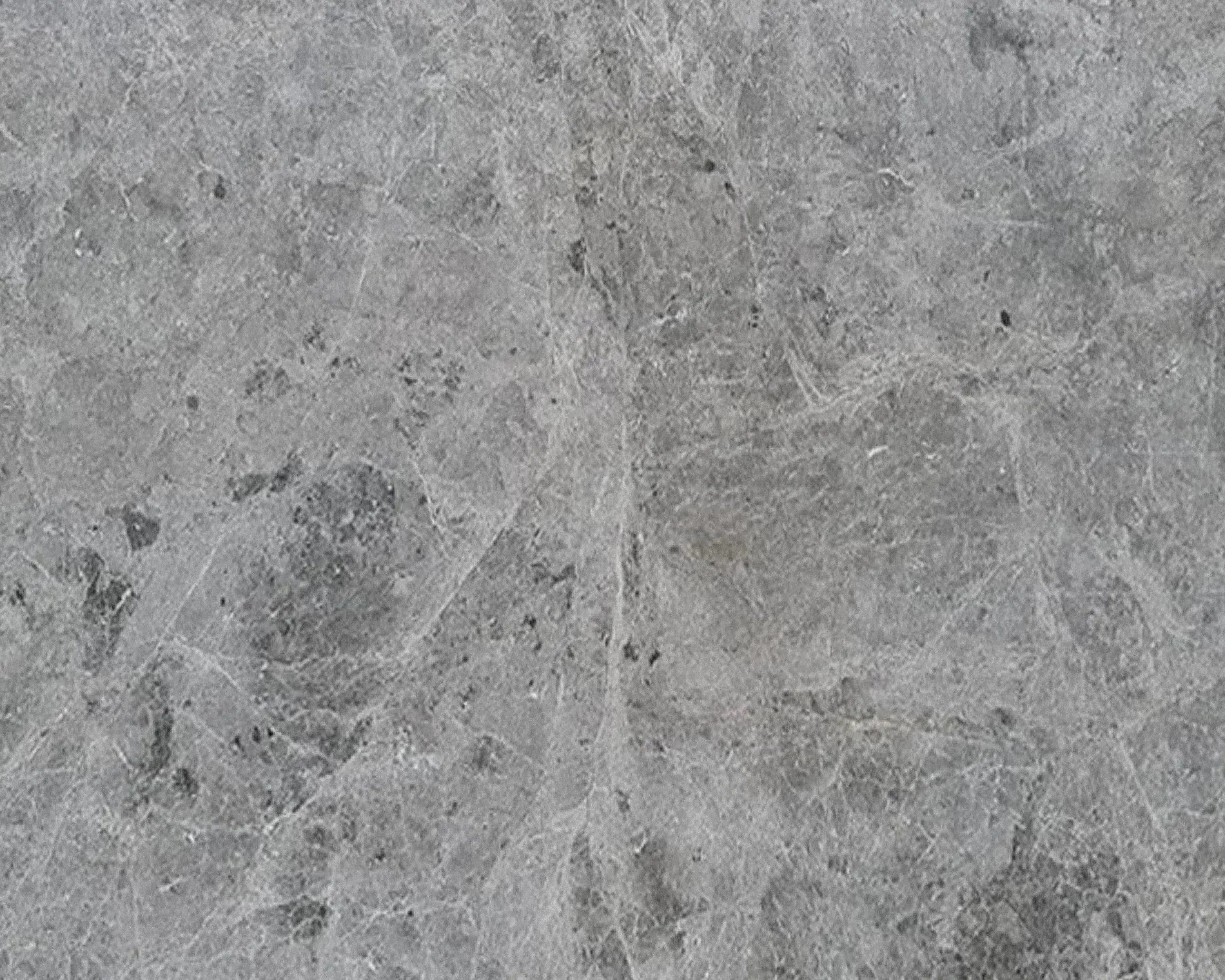 Tundra Gray (Atlantic Gray) Marble
Tundra Gray (Atlantic Gray) Marble Valencia Travertine
Valencia Travertine Valerenga Travertine
Valerenga Travertine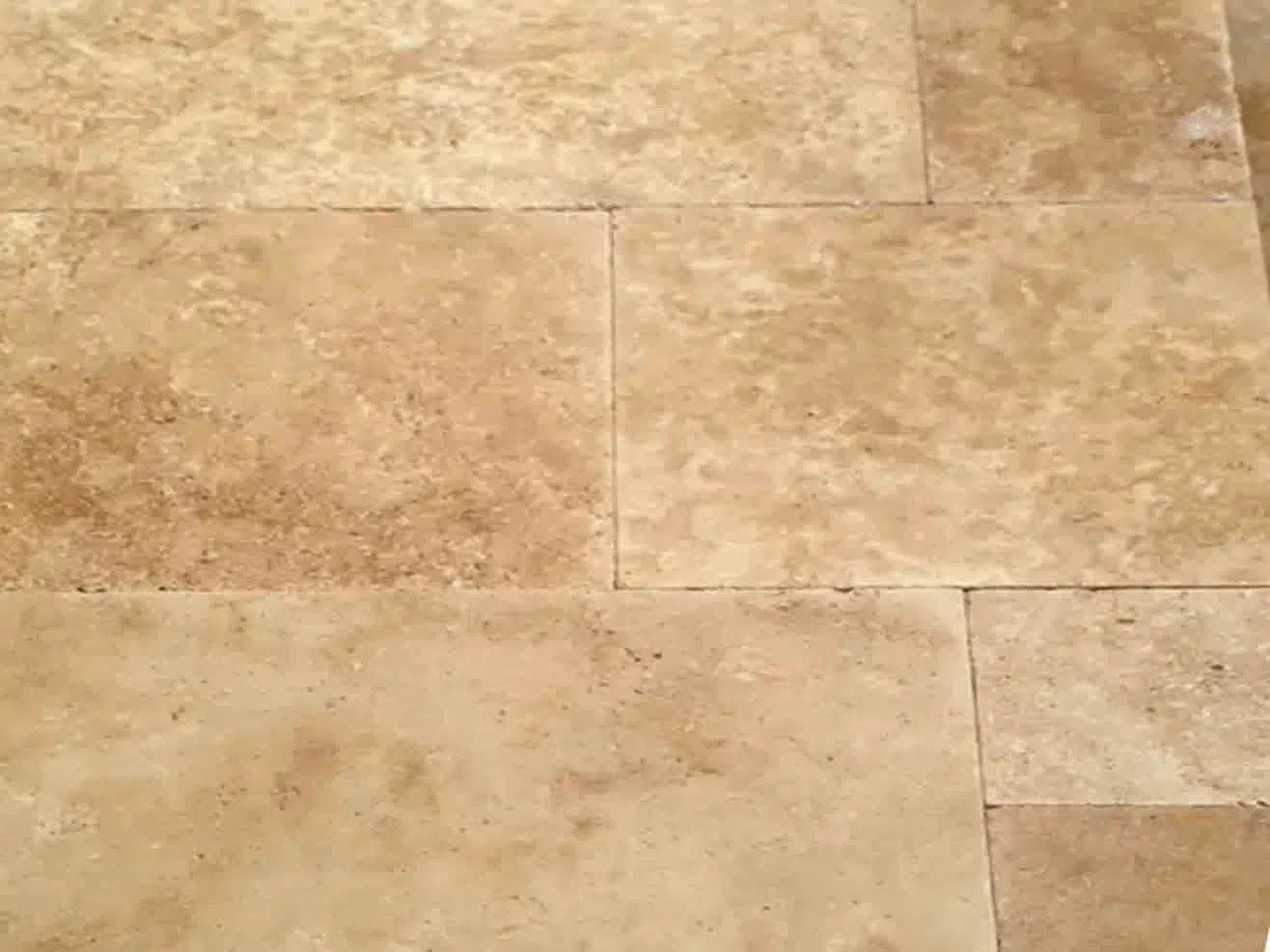 Walnut Travertine
Walnut Travertine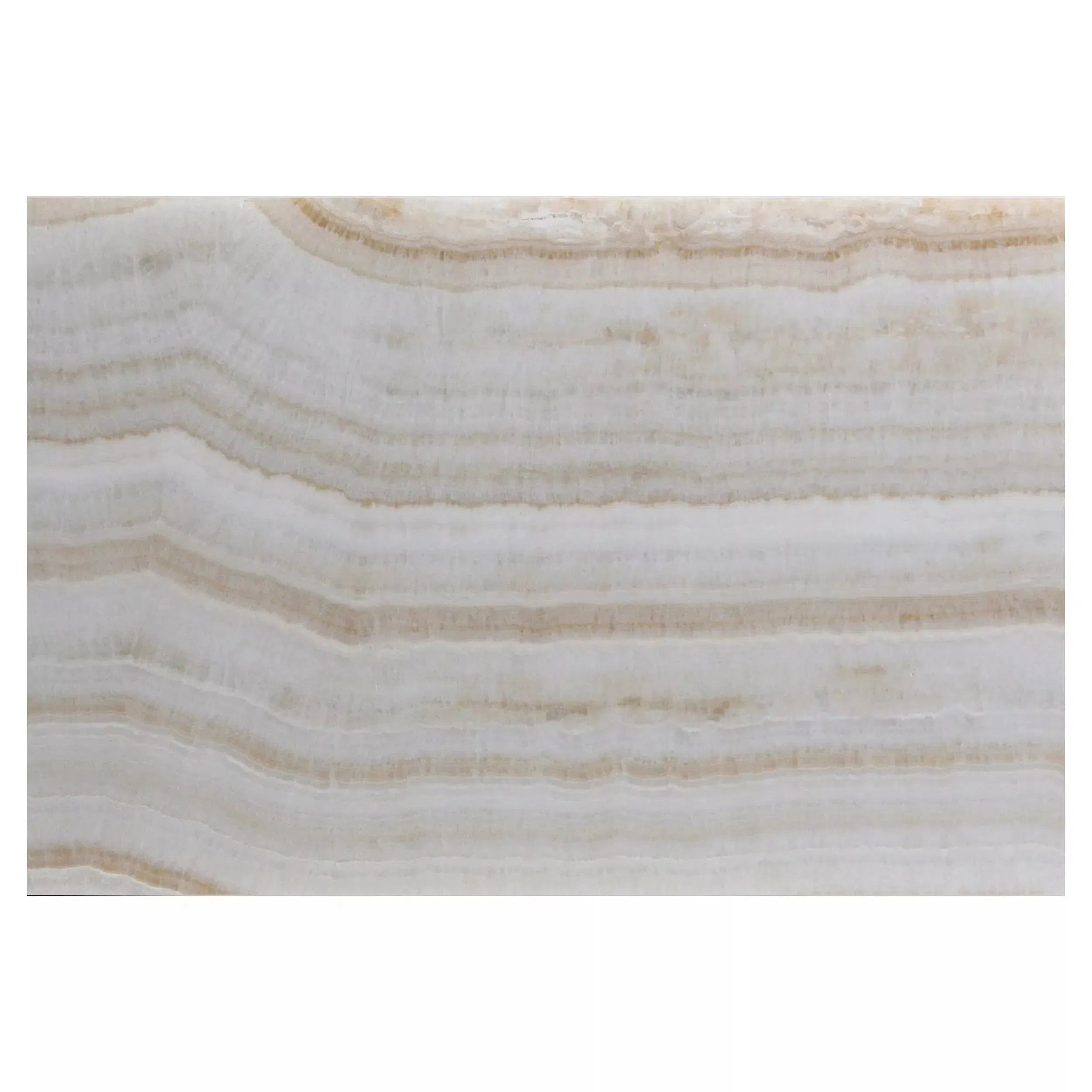 White Onyx Marble
White Onyx Marble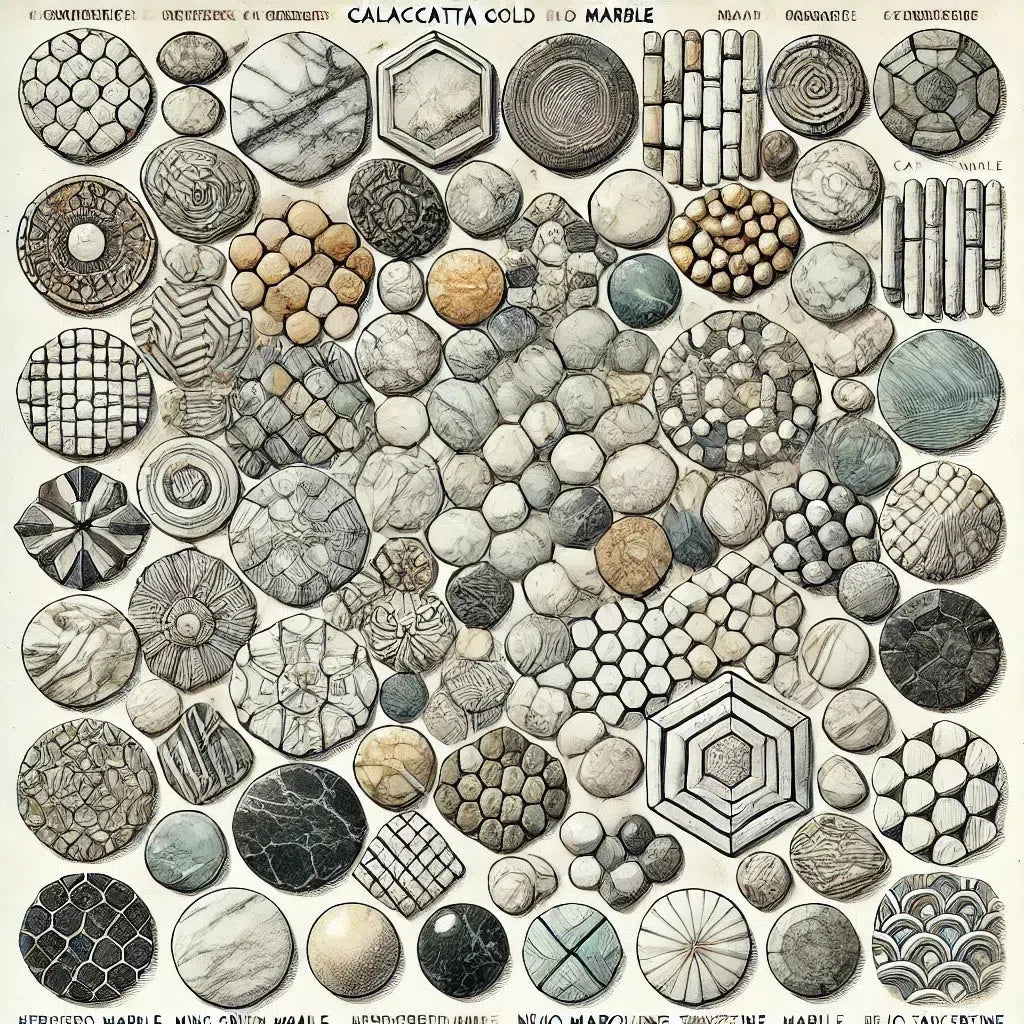 Shop By Type
Shop By Type
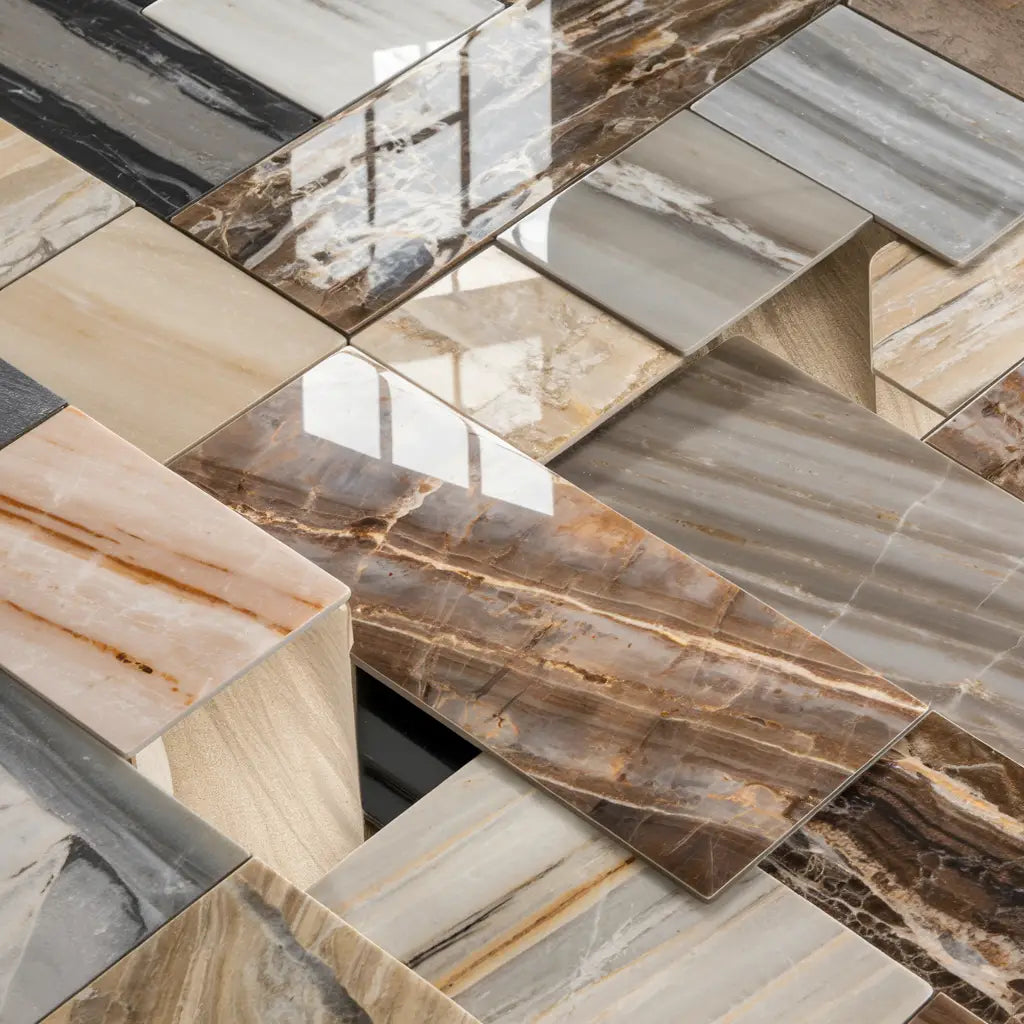 Marble Tiles
Marble Tiles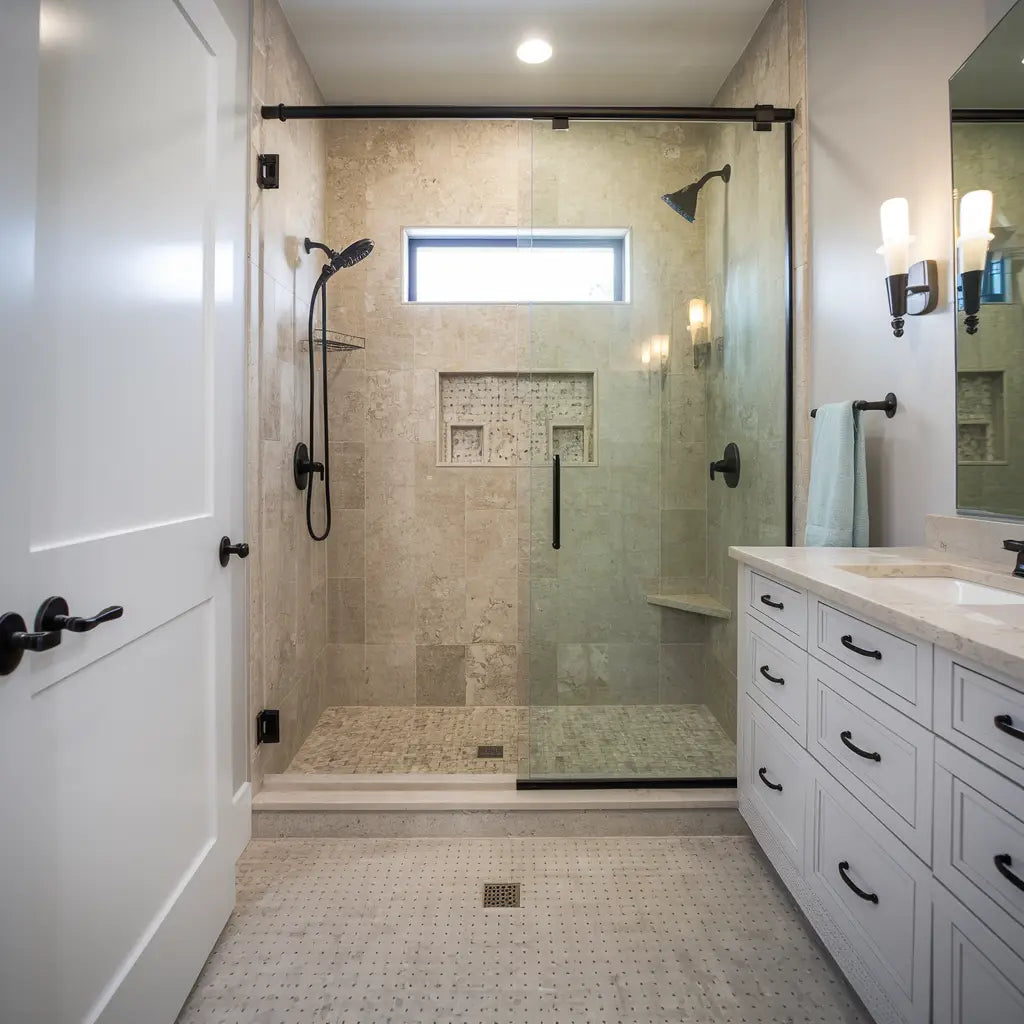 Marble Mosaic
Marble Mosaic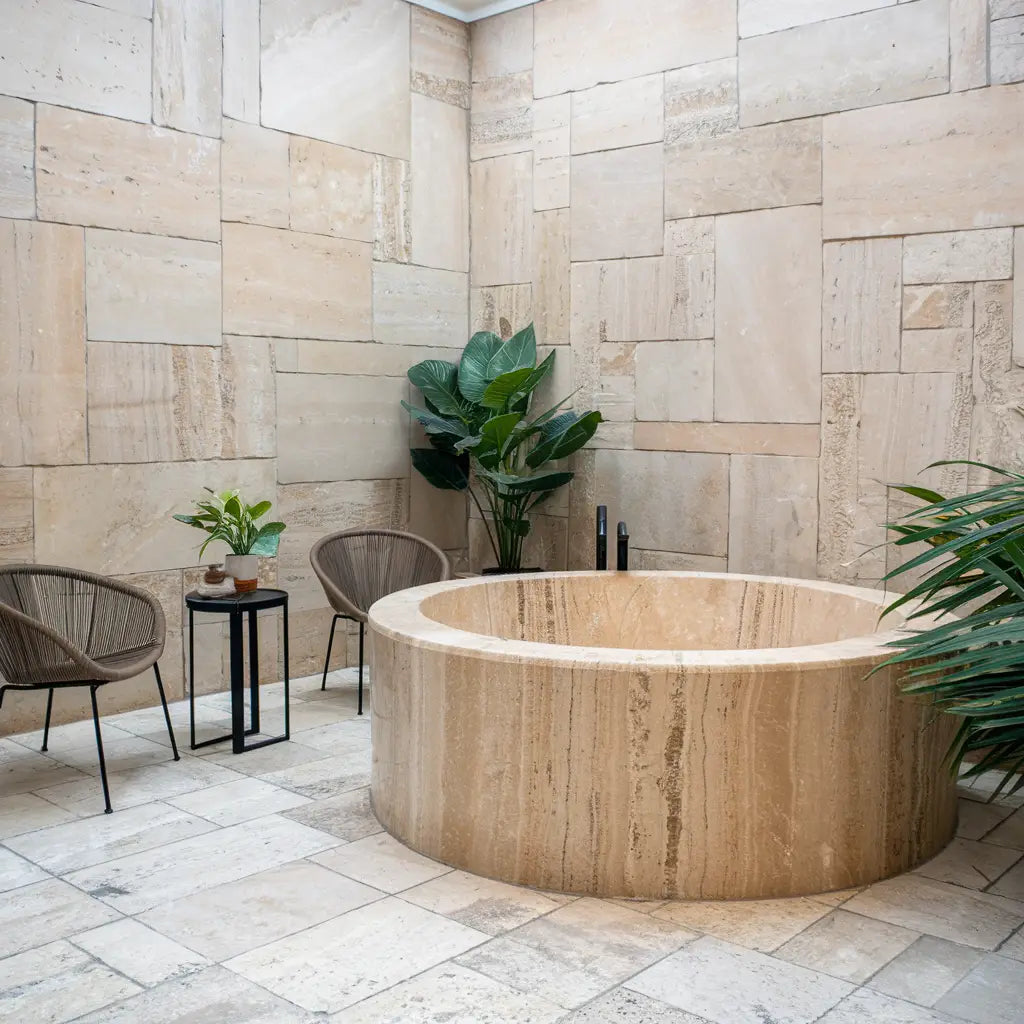 Travertine Tiles
Travertine Tiles Travertine Mosaic
Travertine Mosaic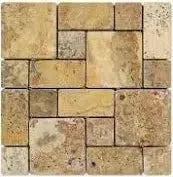 4 pcs Versailles Pattern / French Pattern Set
4 pcs Versailles Pattern / French Pattern Set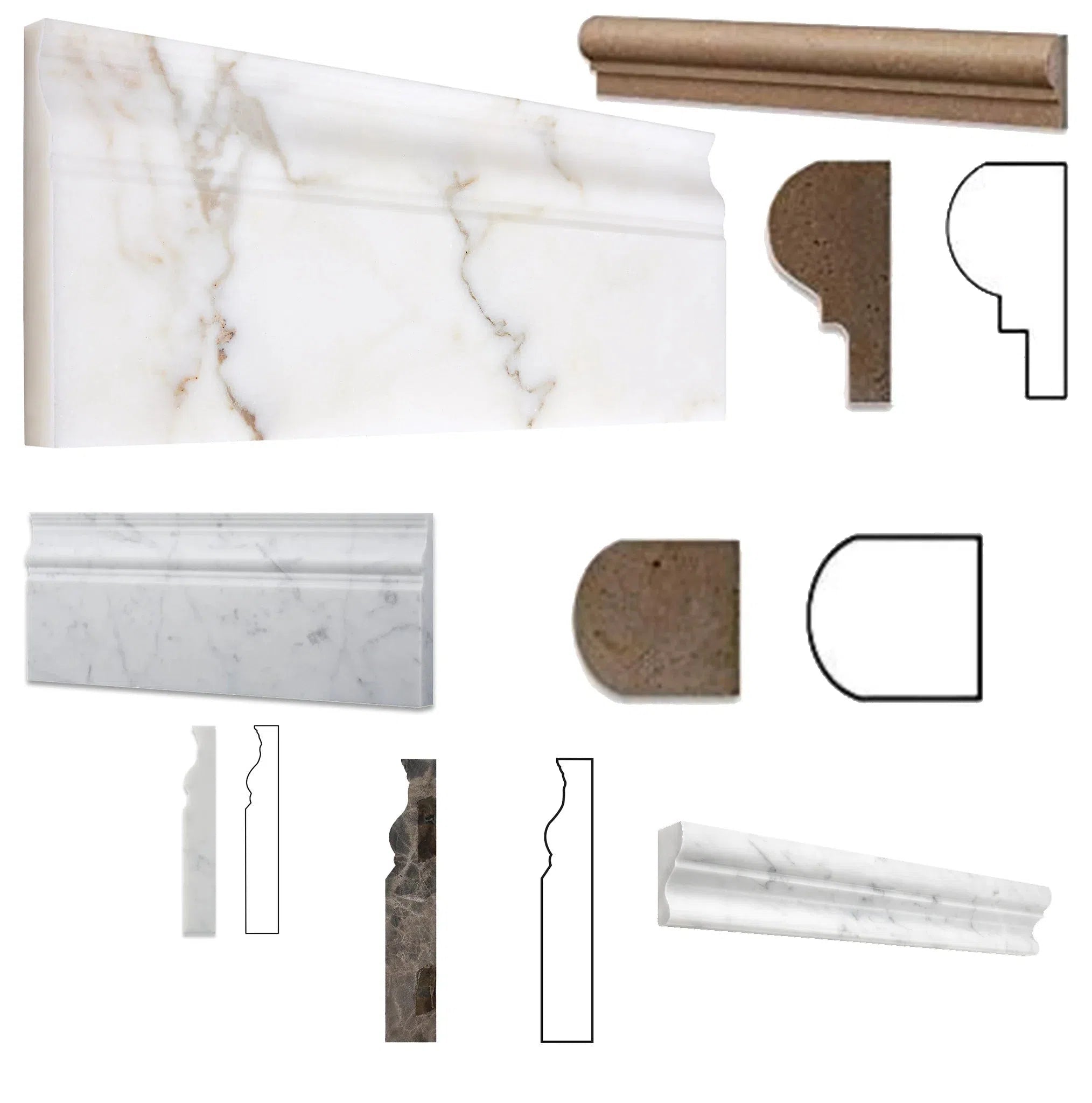 Molding/Trim
Molding/Trim Border/Listello
Border/Listello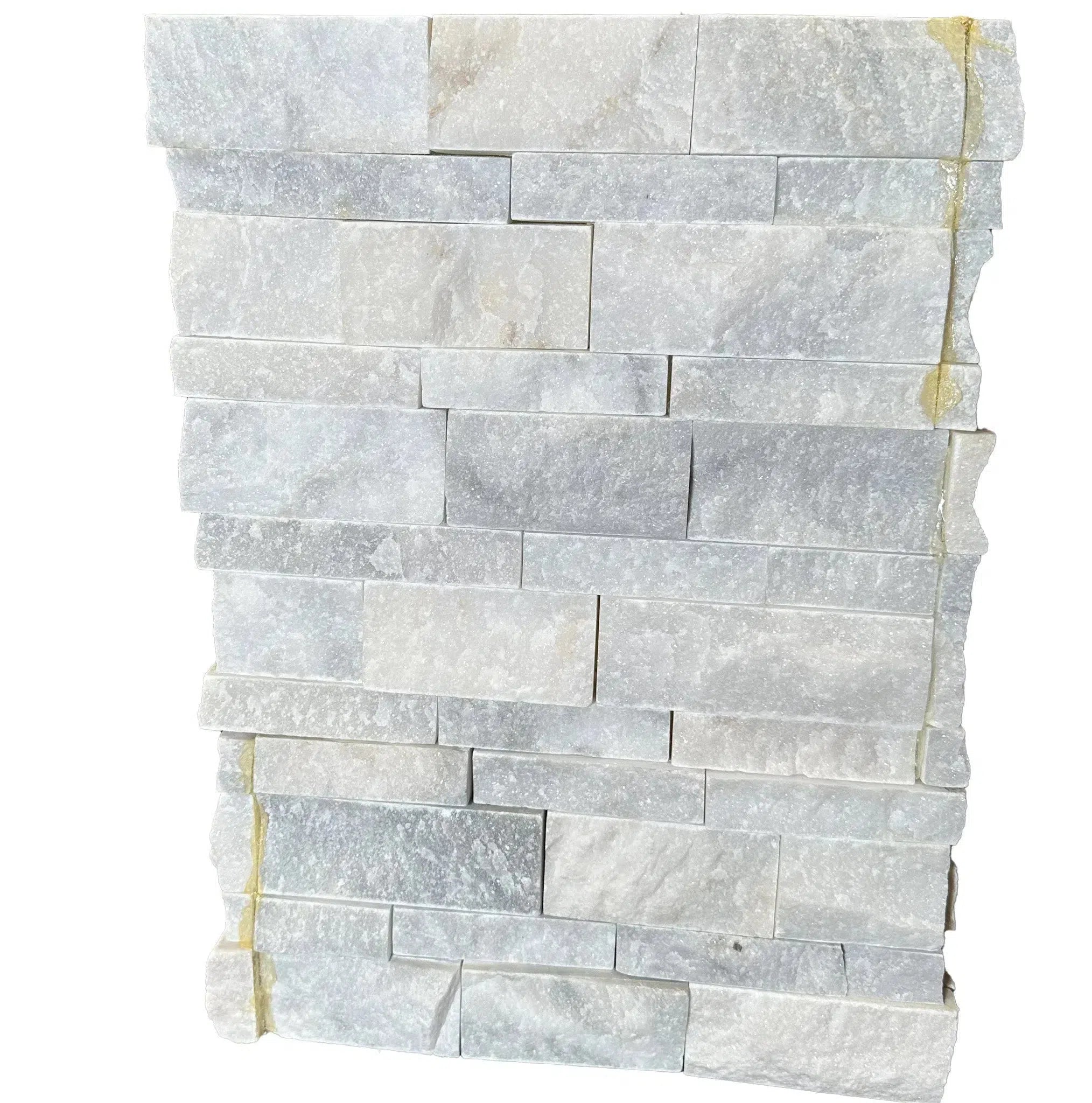 Ledger-Panel
Ledger-Panel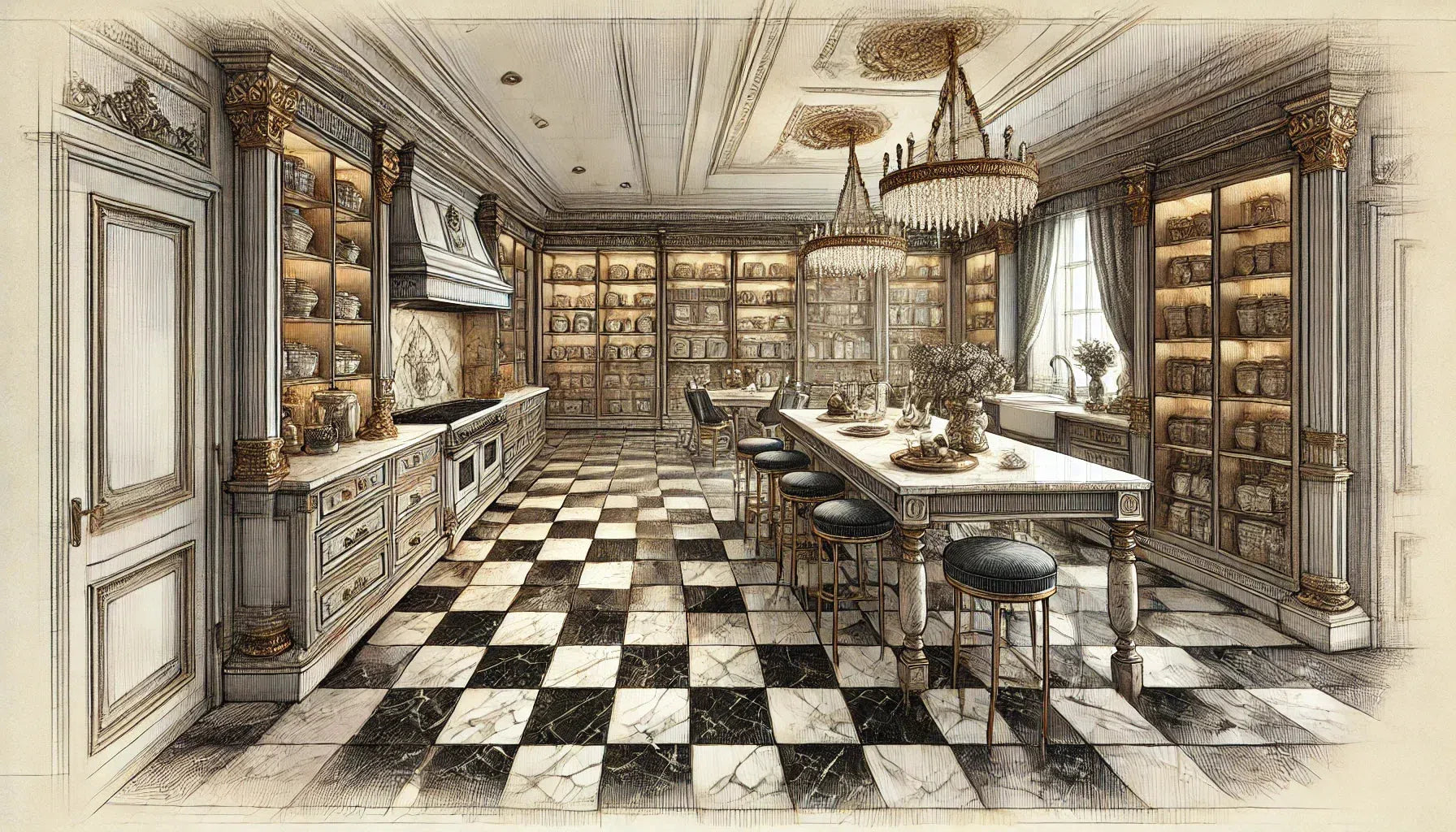 Checkerboard
Checkerboard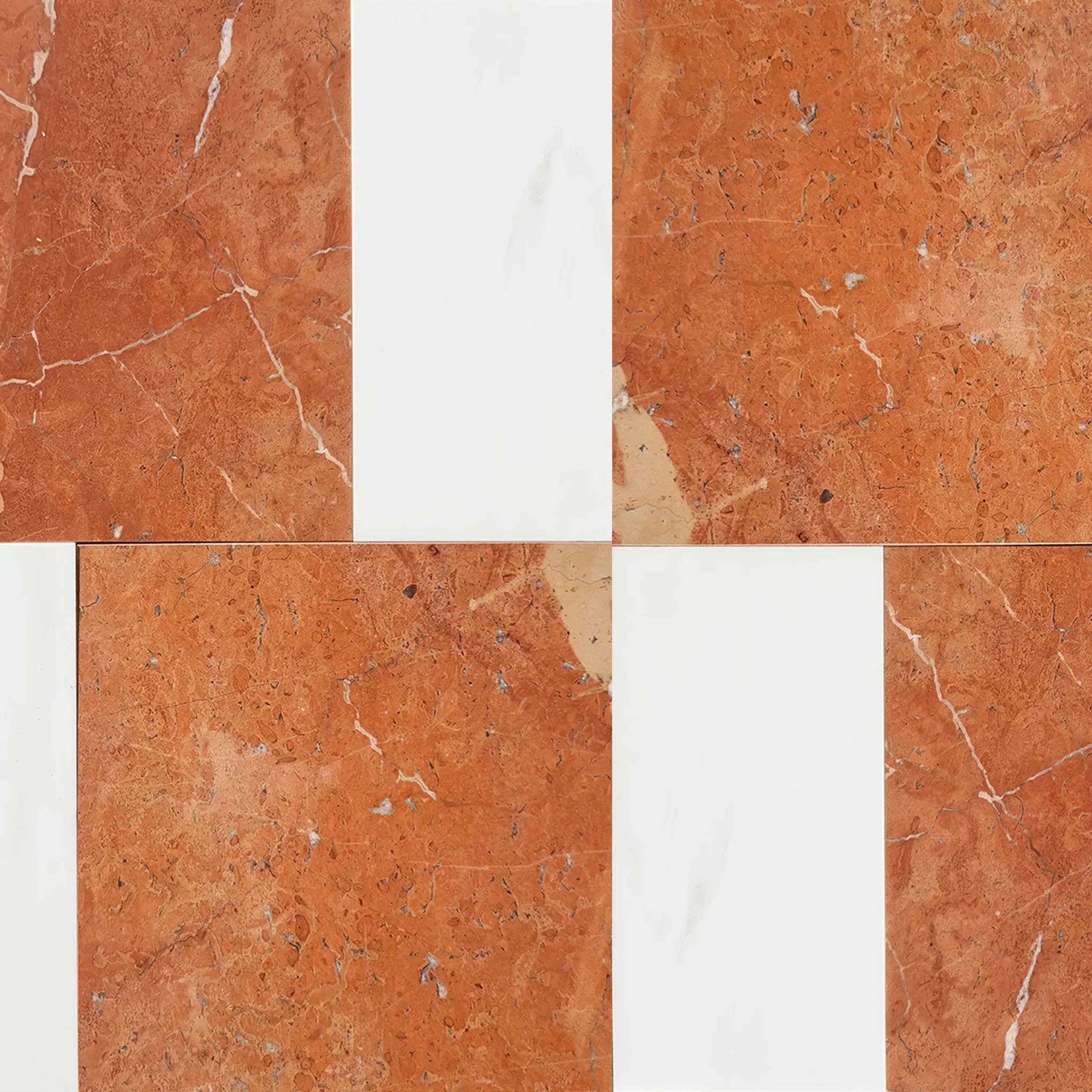 Patterned Tile Collection
Patterned Tile Collection 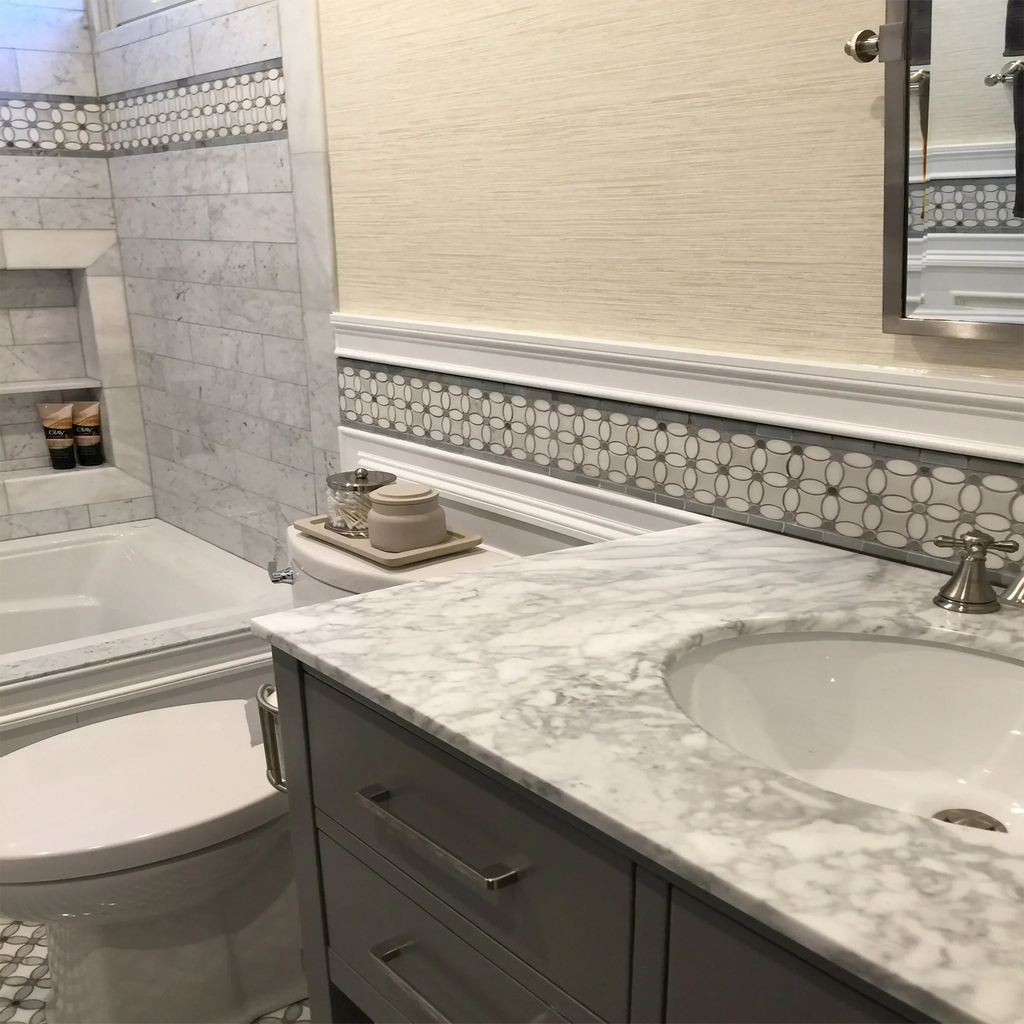 Shop By Finish
Shop By Finish
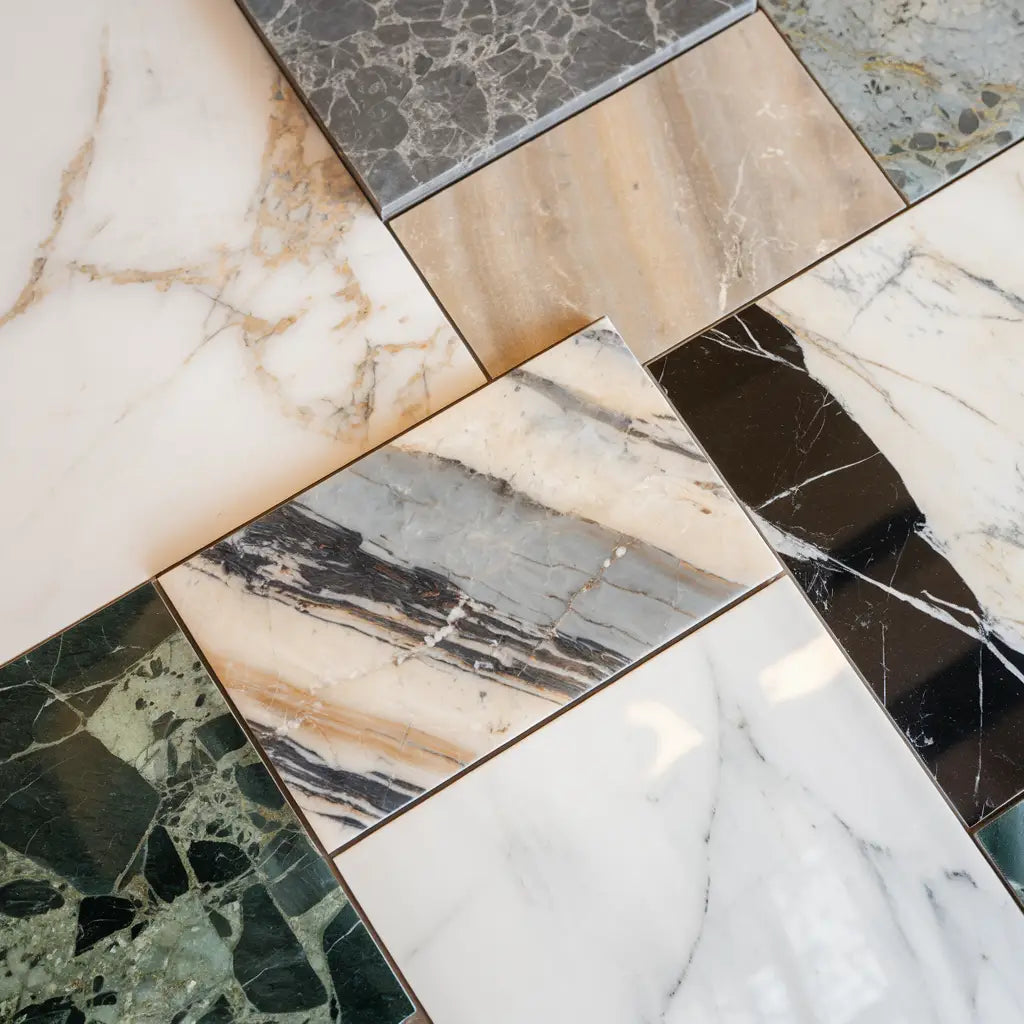 Polished
Polished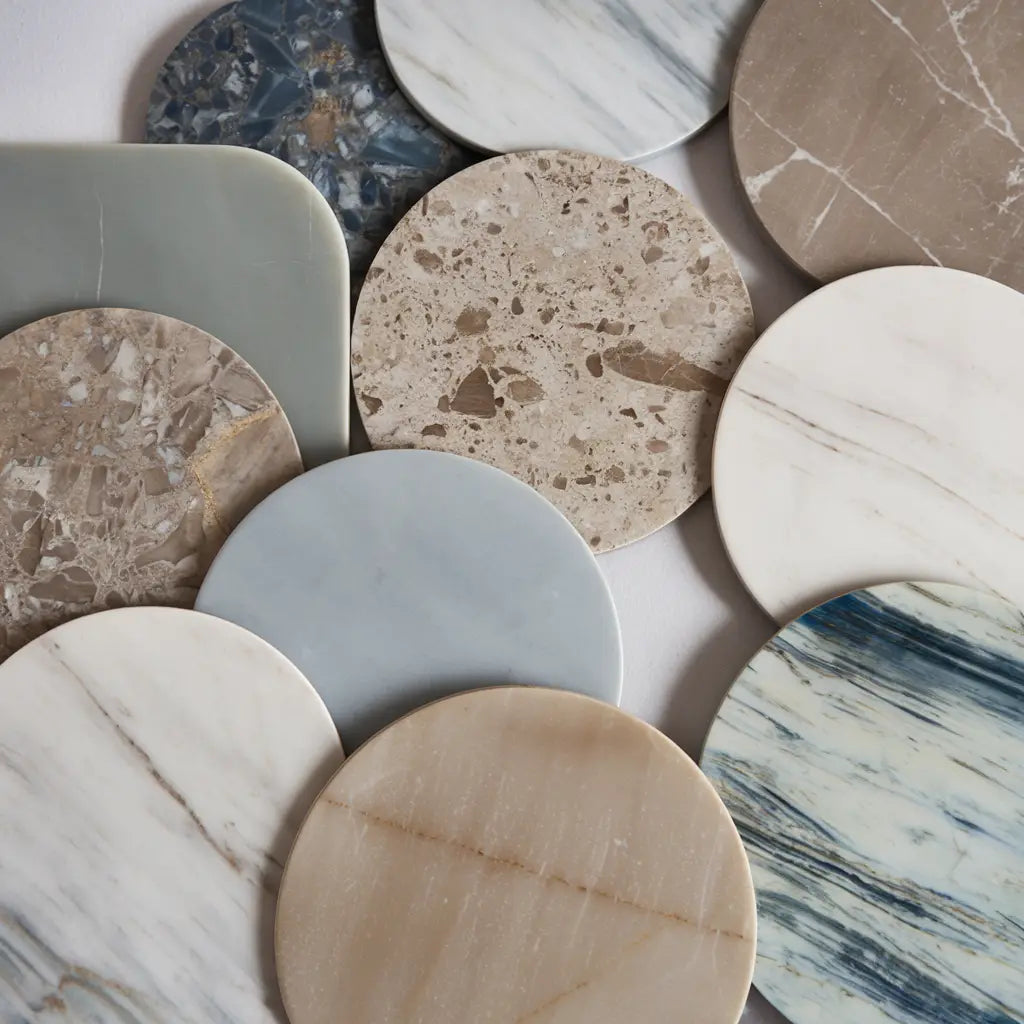 Honed
Honed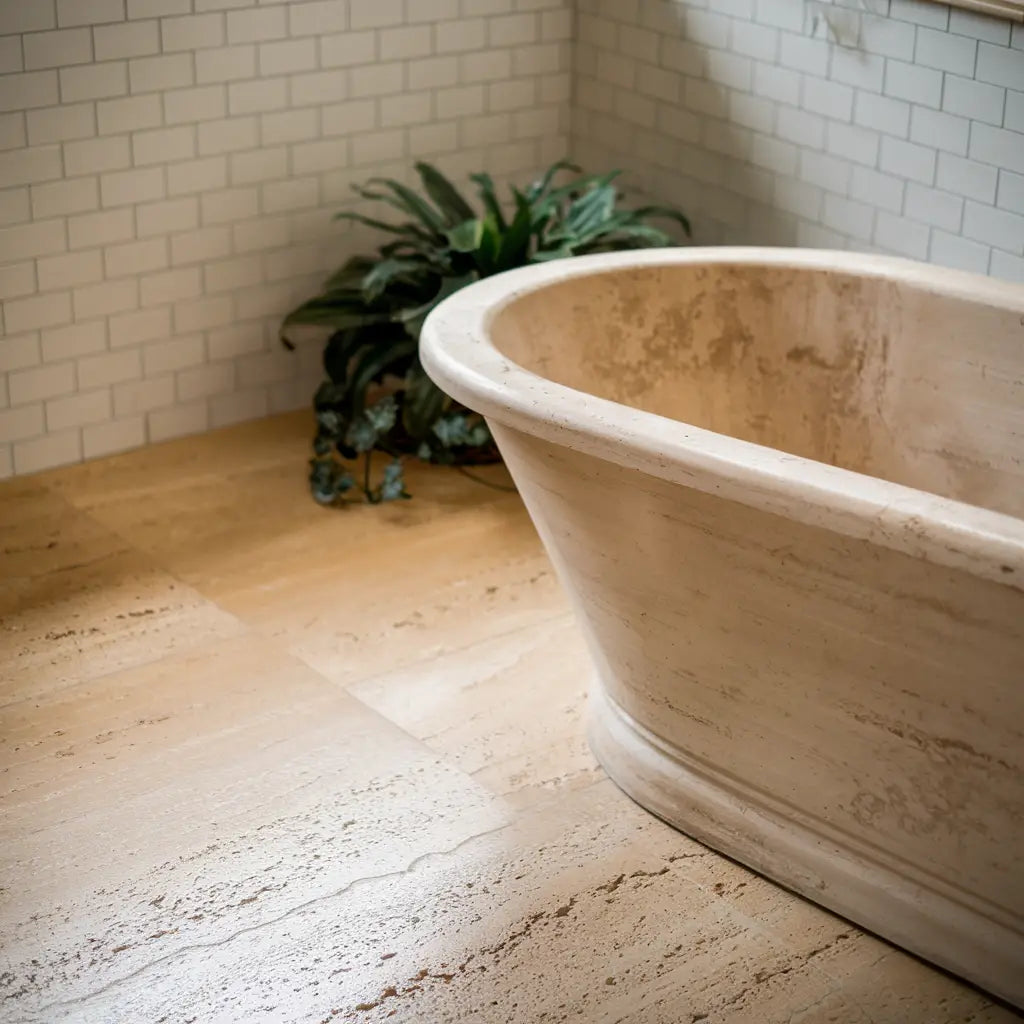 Brushed
Brushed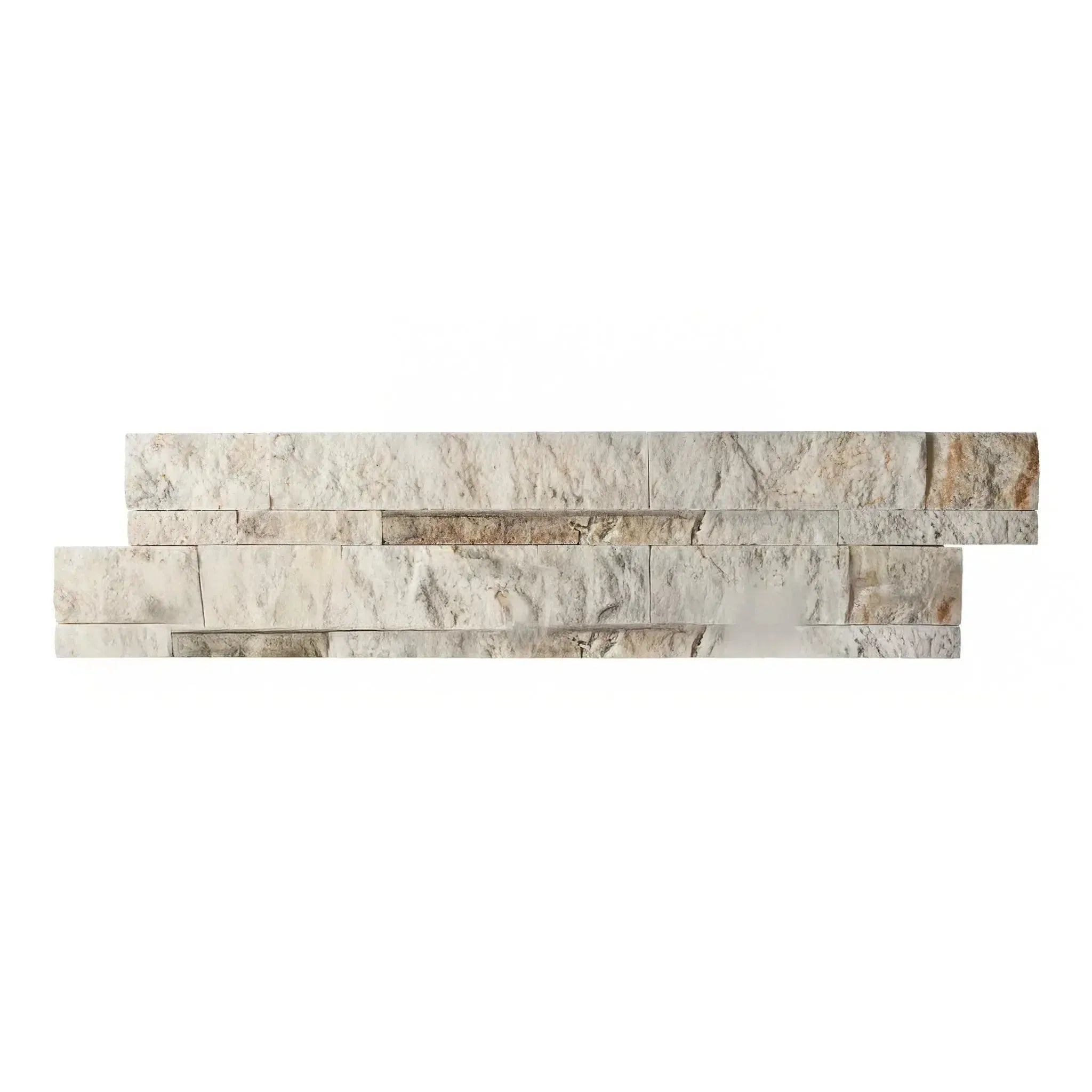 Split Face
Split Face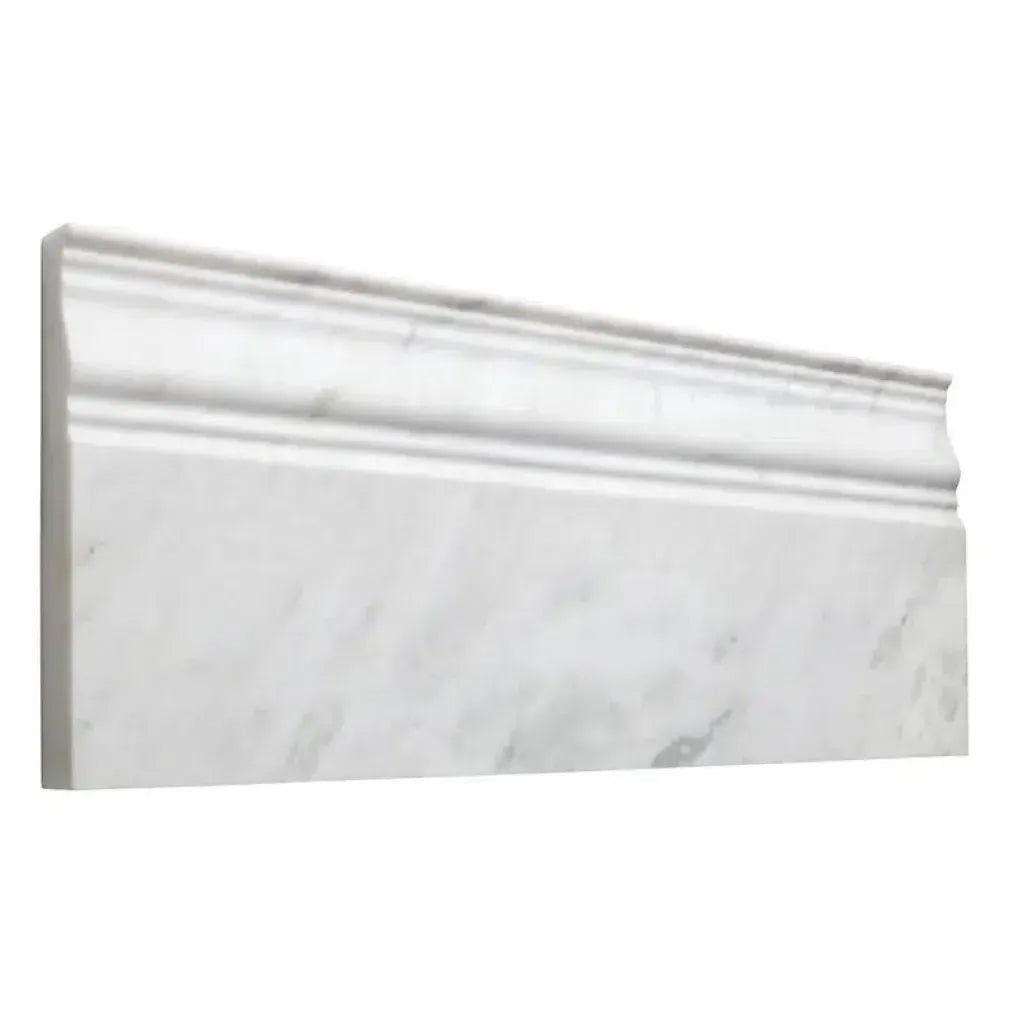 Textured
Textured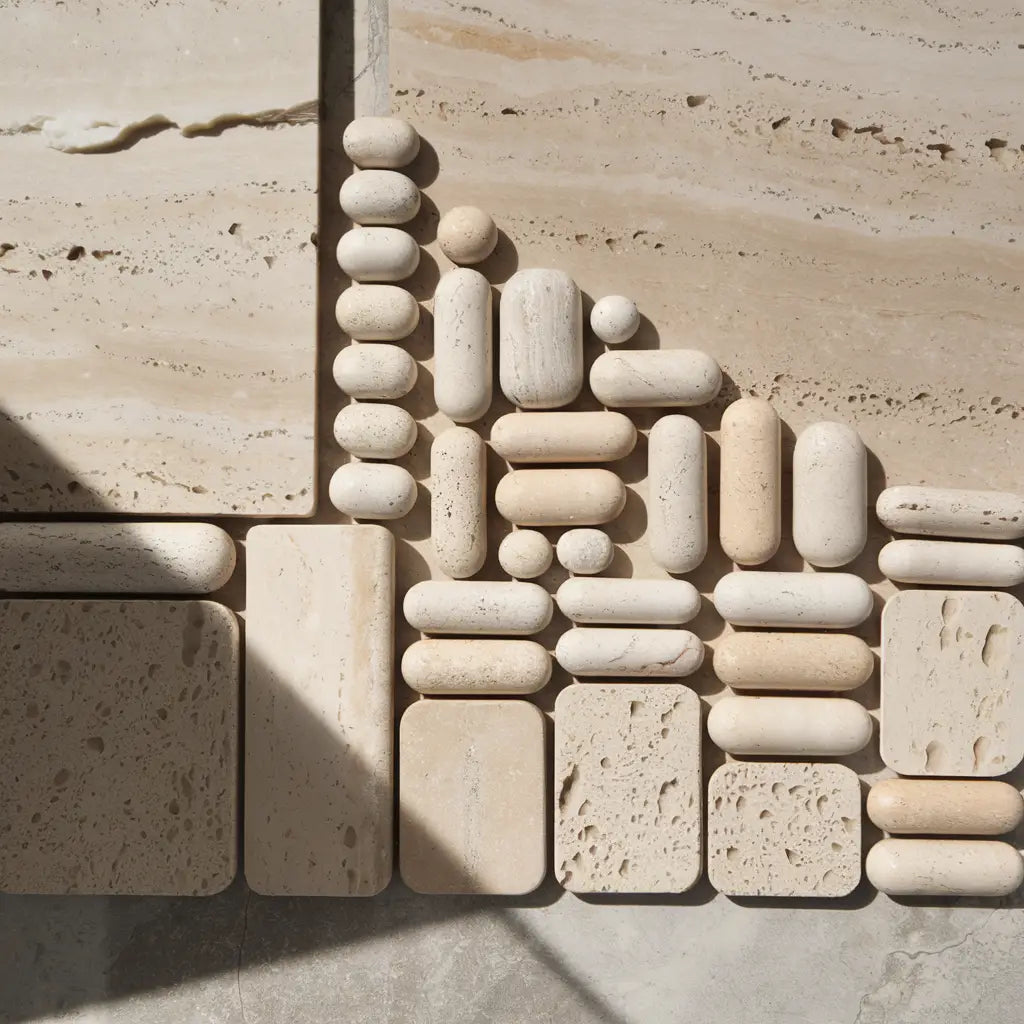 Tumbled
Tumbled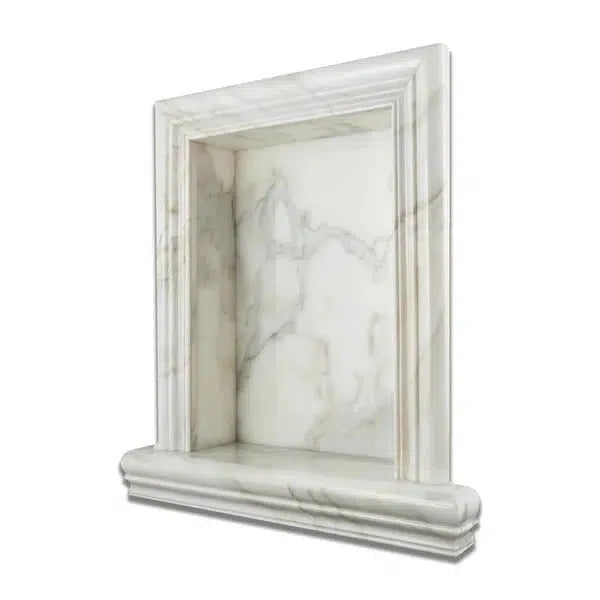 Accessories
Accessories
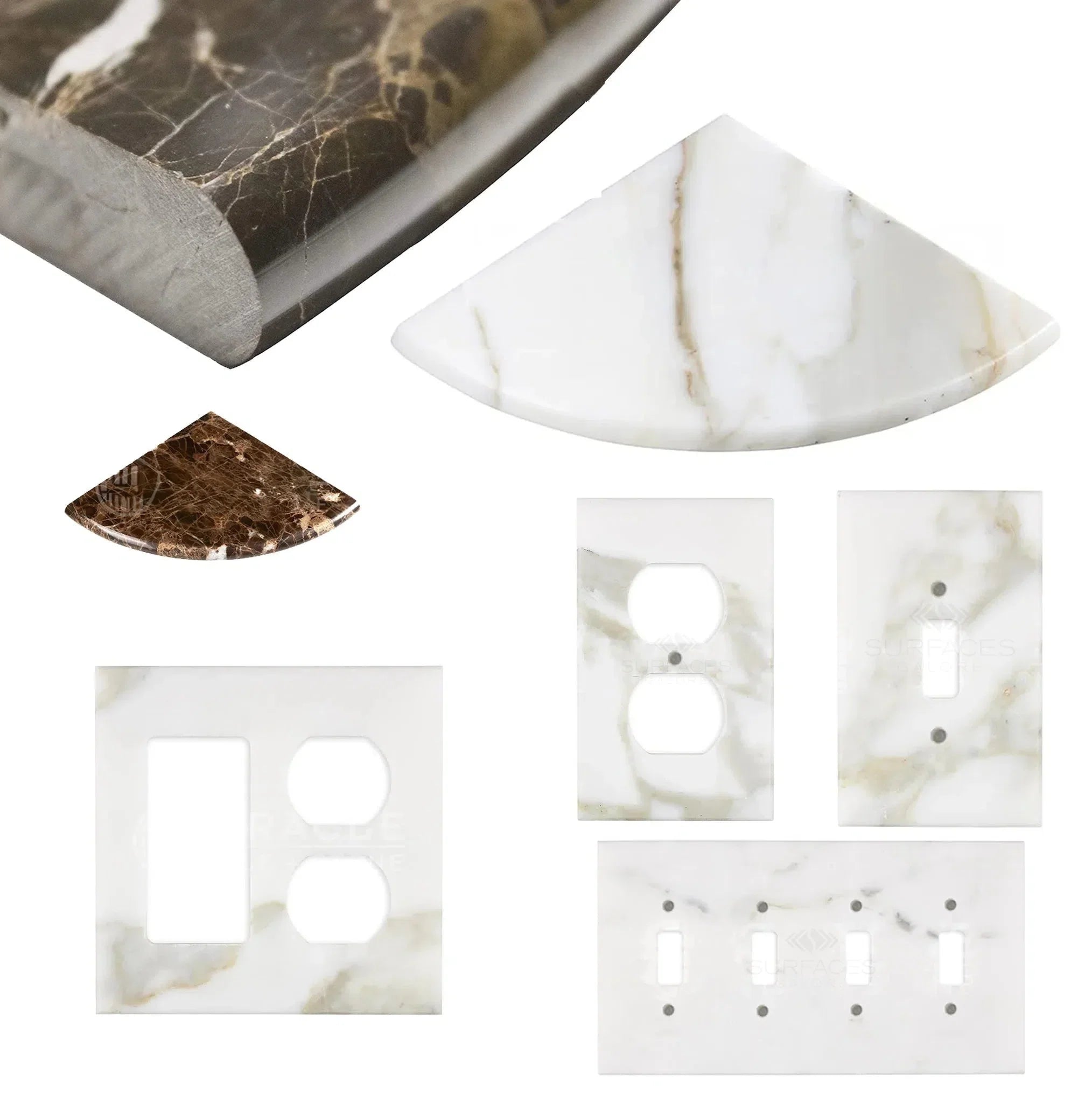 Wall Plate / Switch Plate
Wall Plate / Switch Plate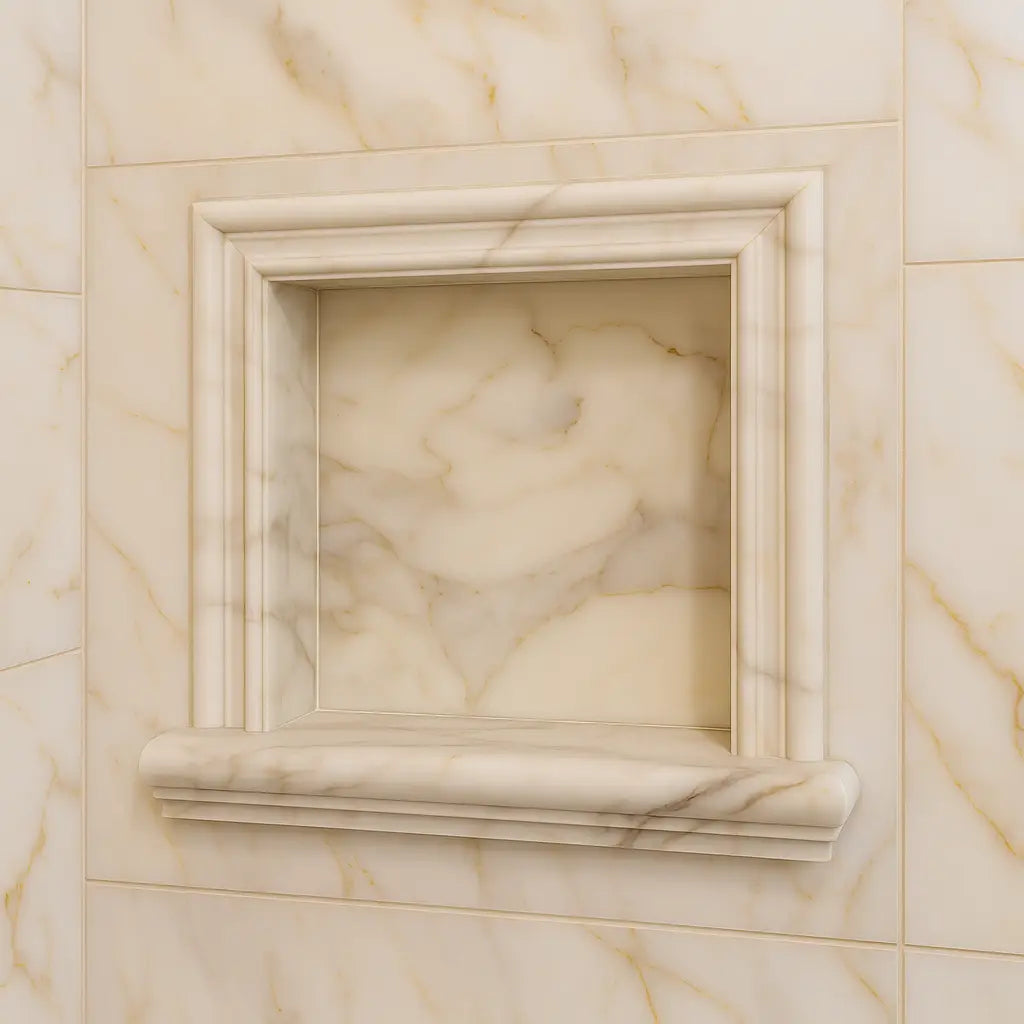 Shampoo Niche
Shampoo Niche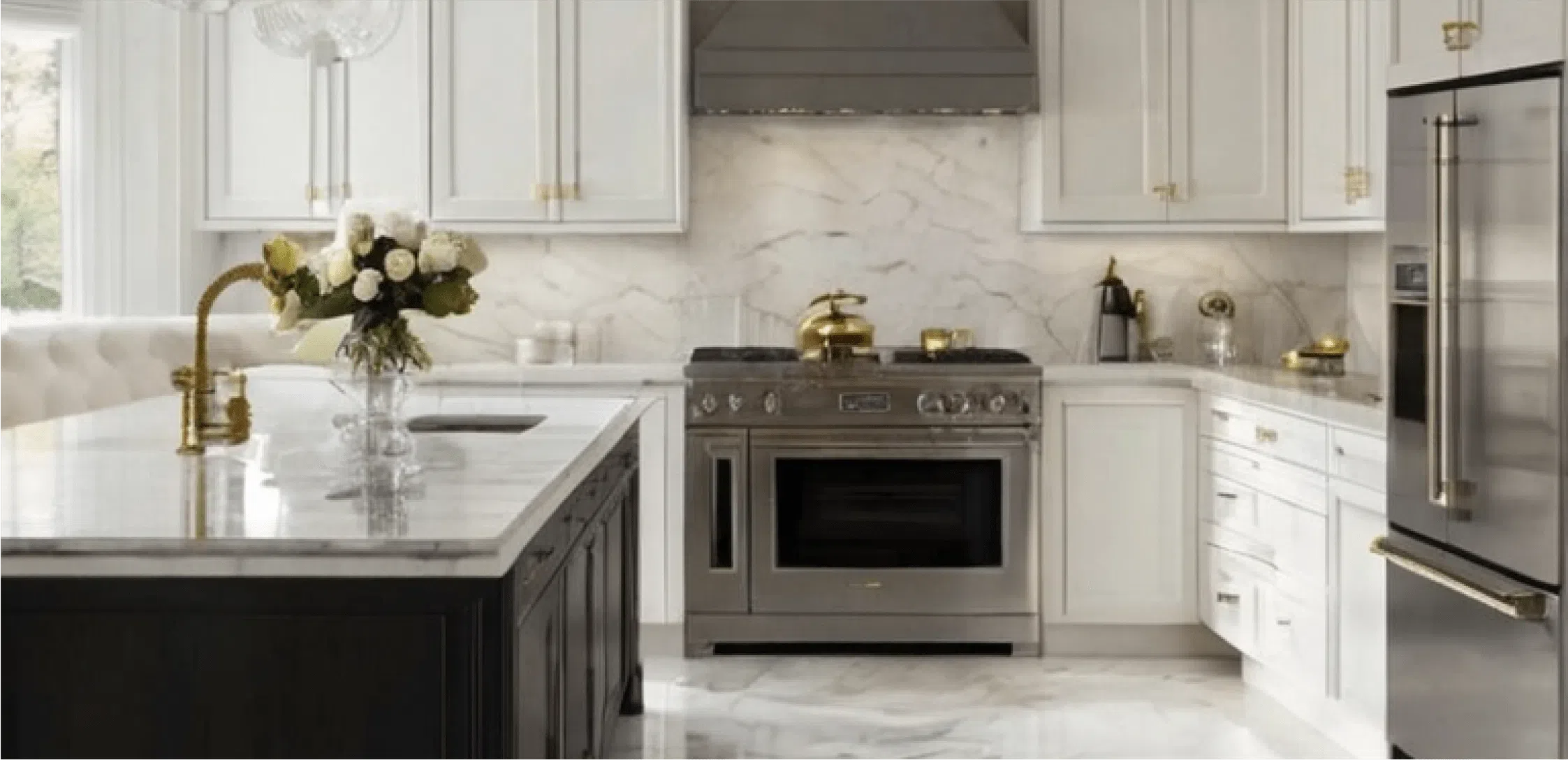 Corner Shelf
Corner Shelf Clearance
Clearance





Leave a comment